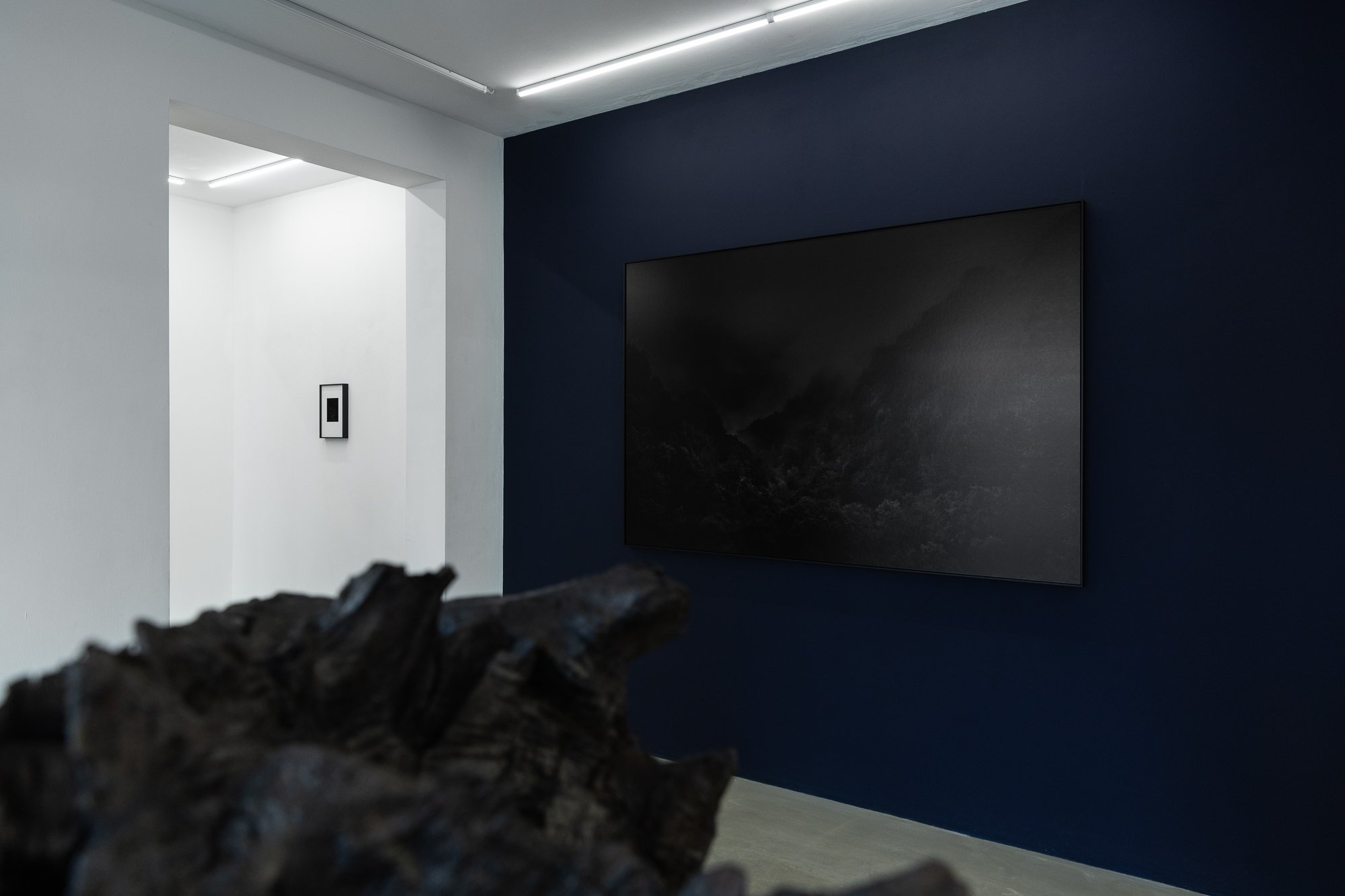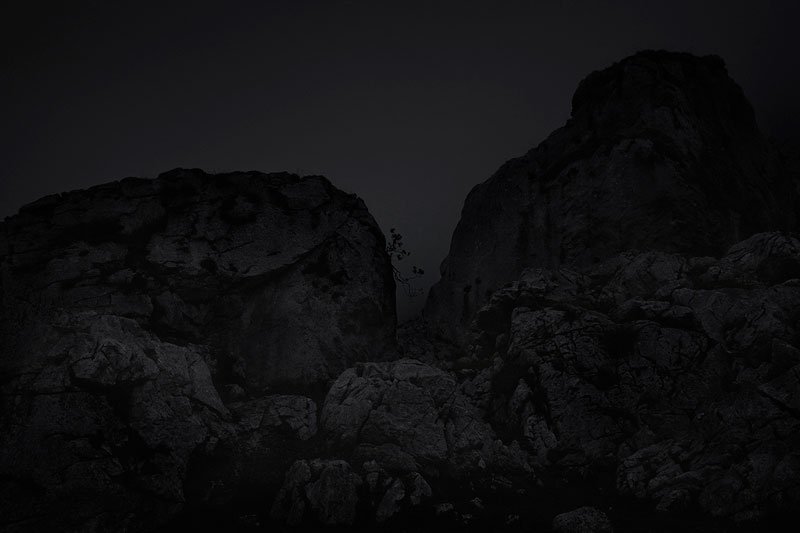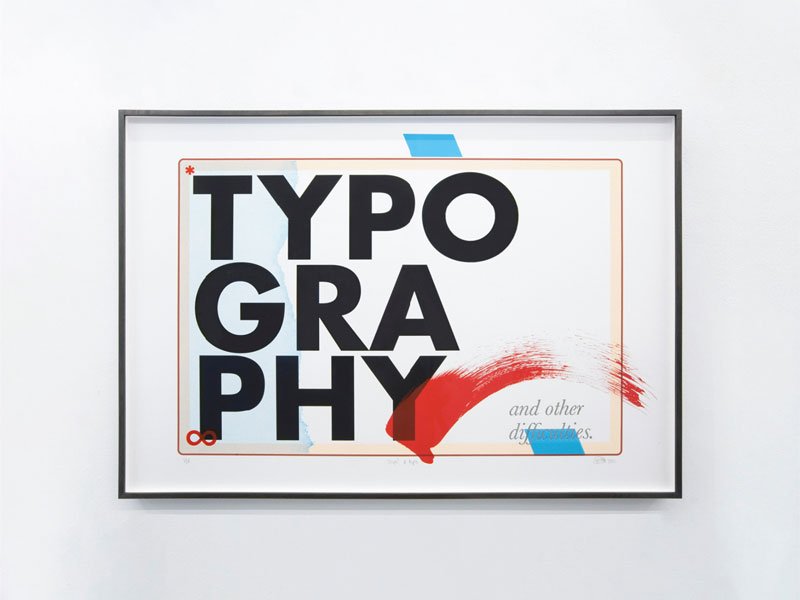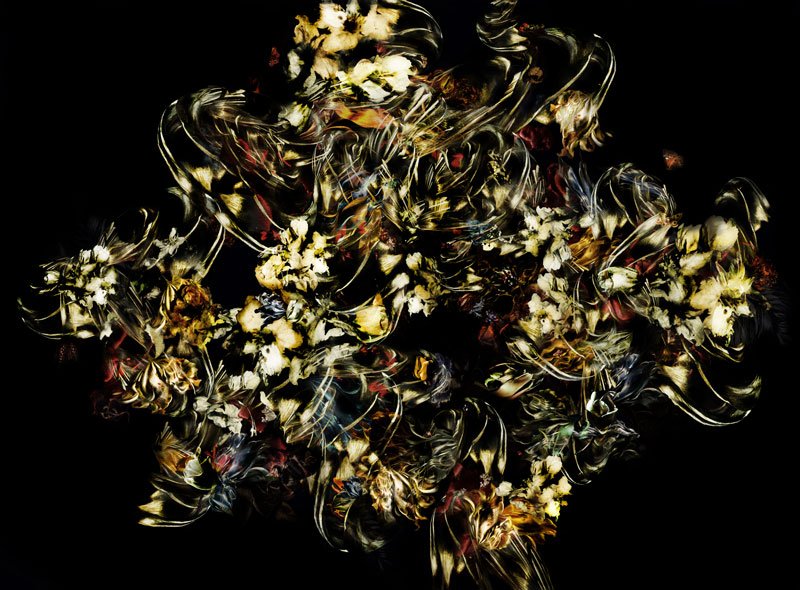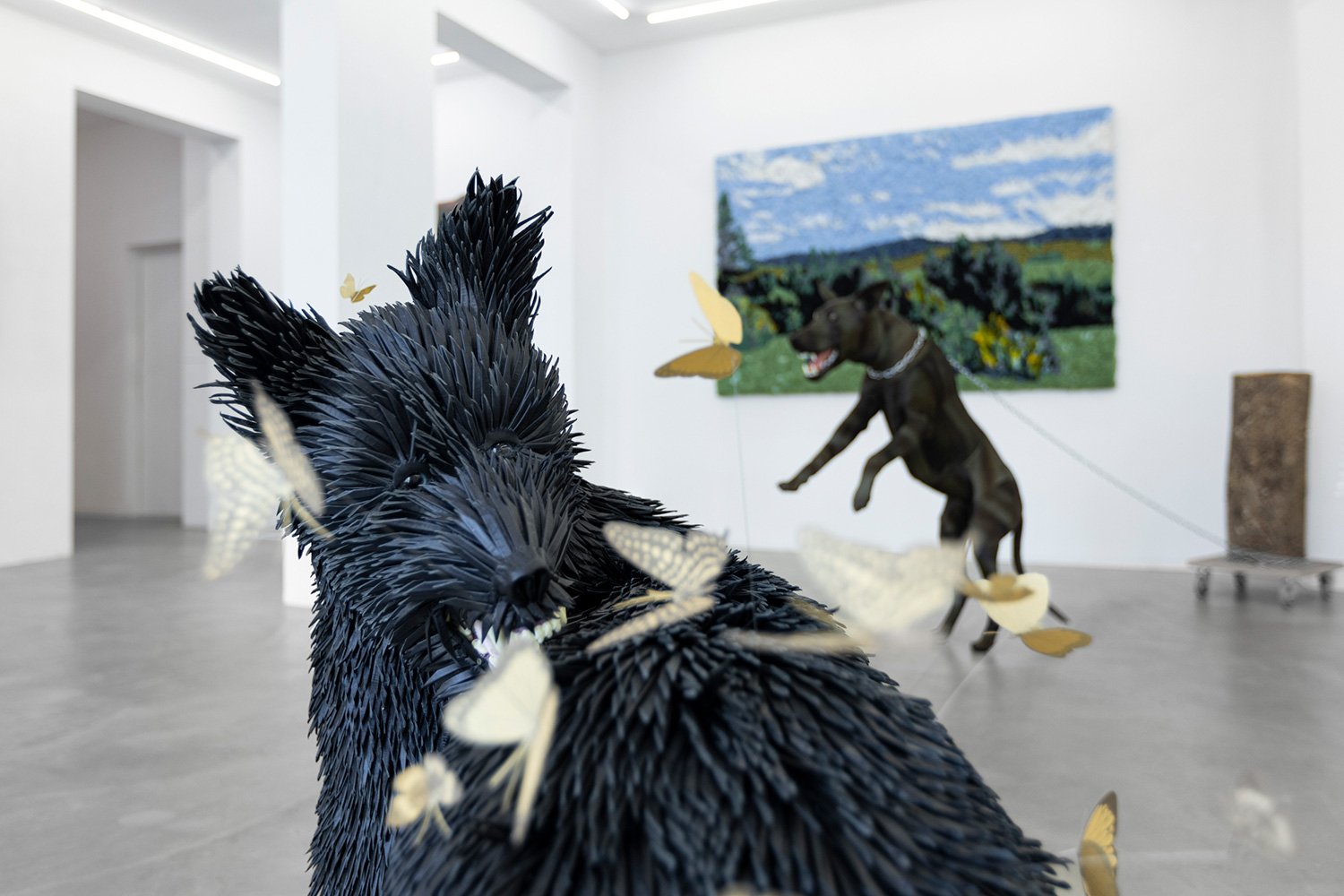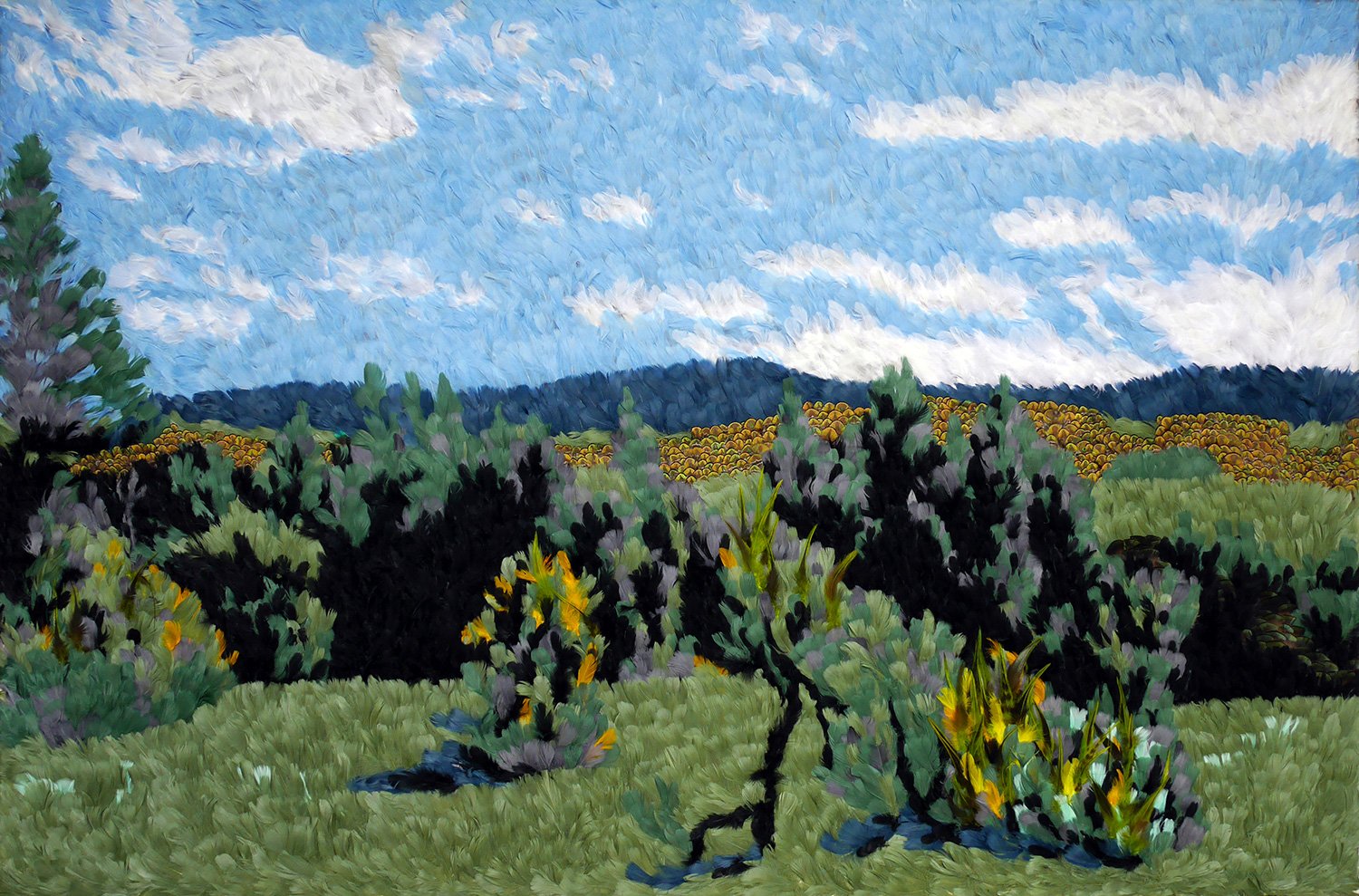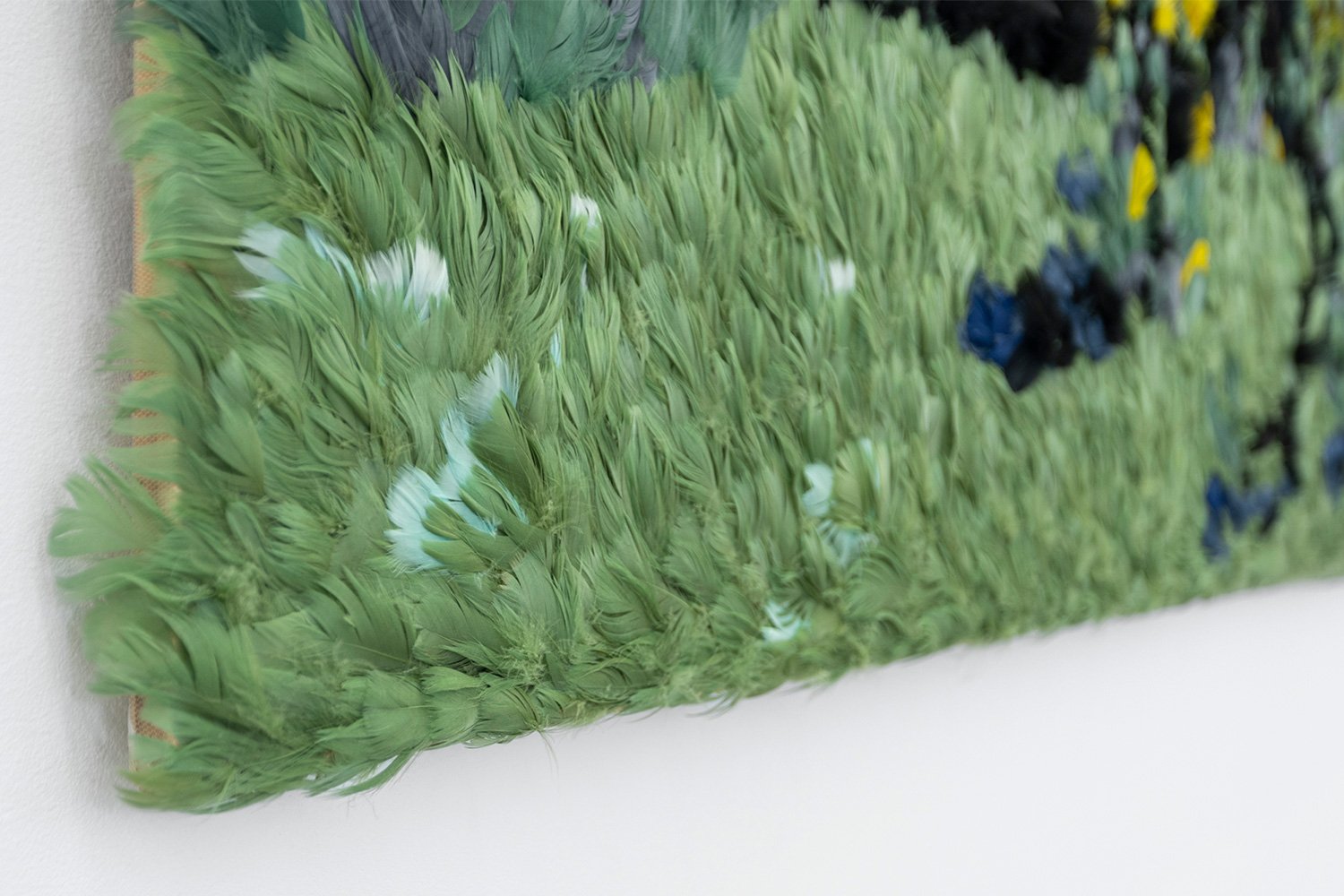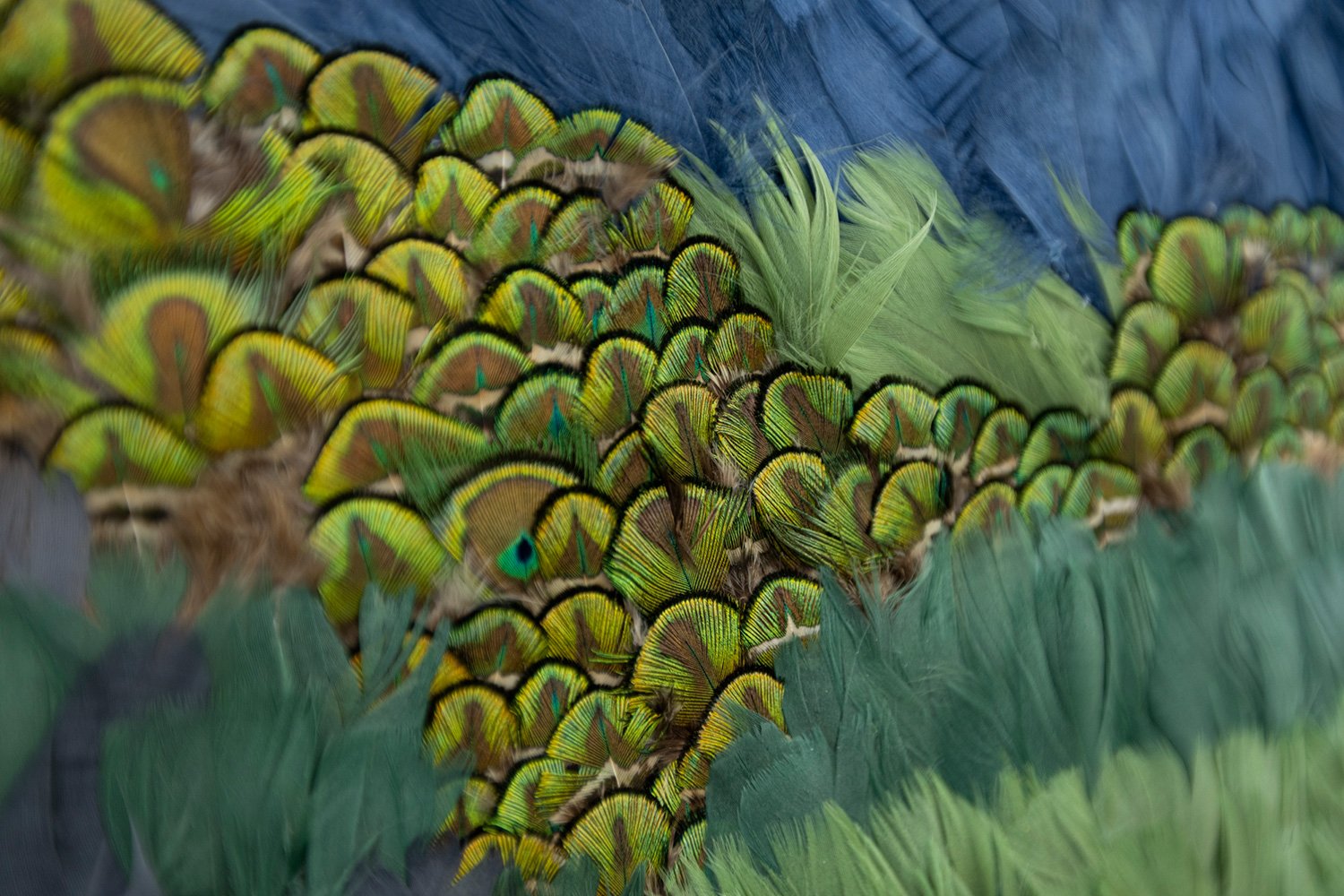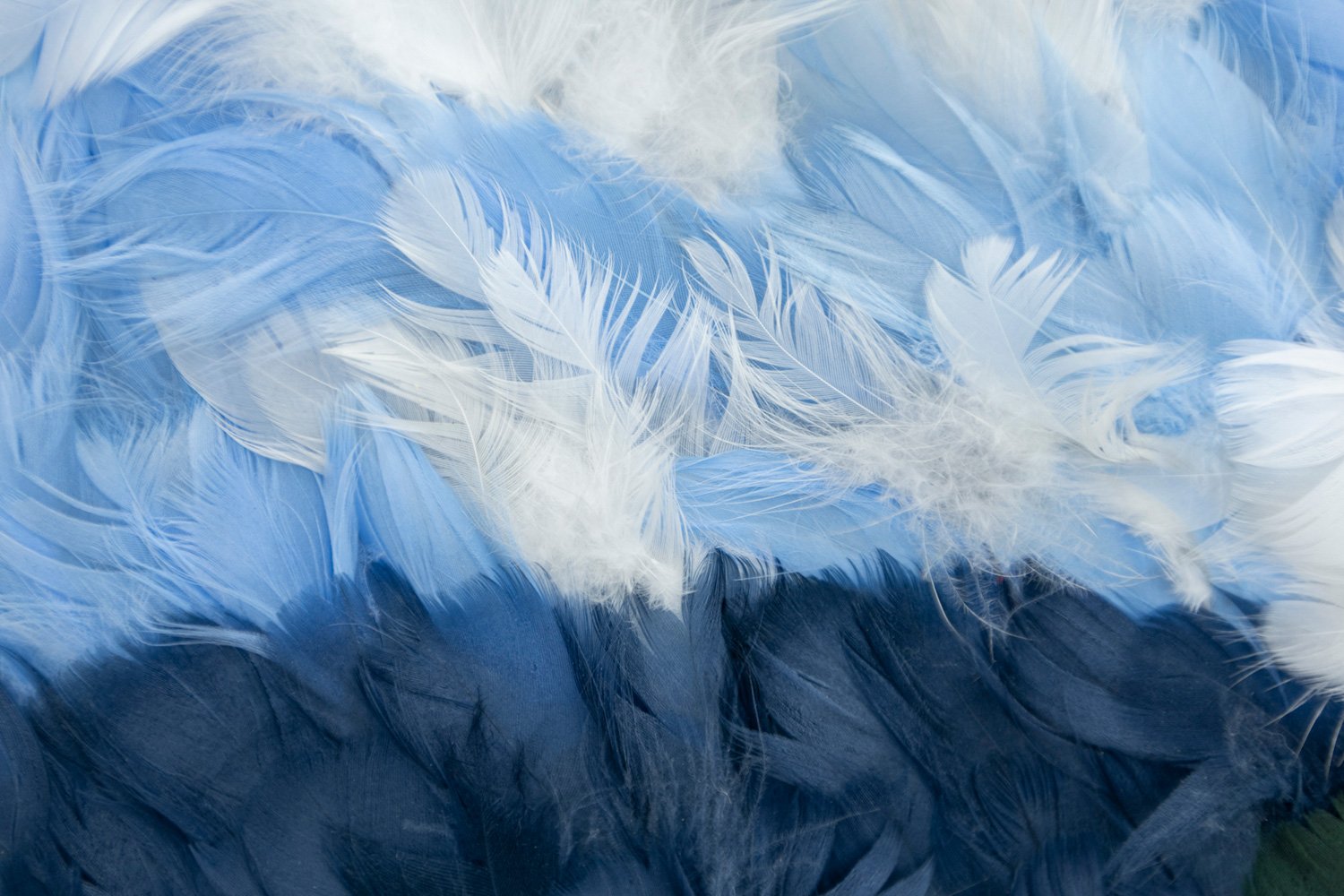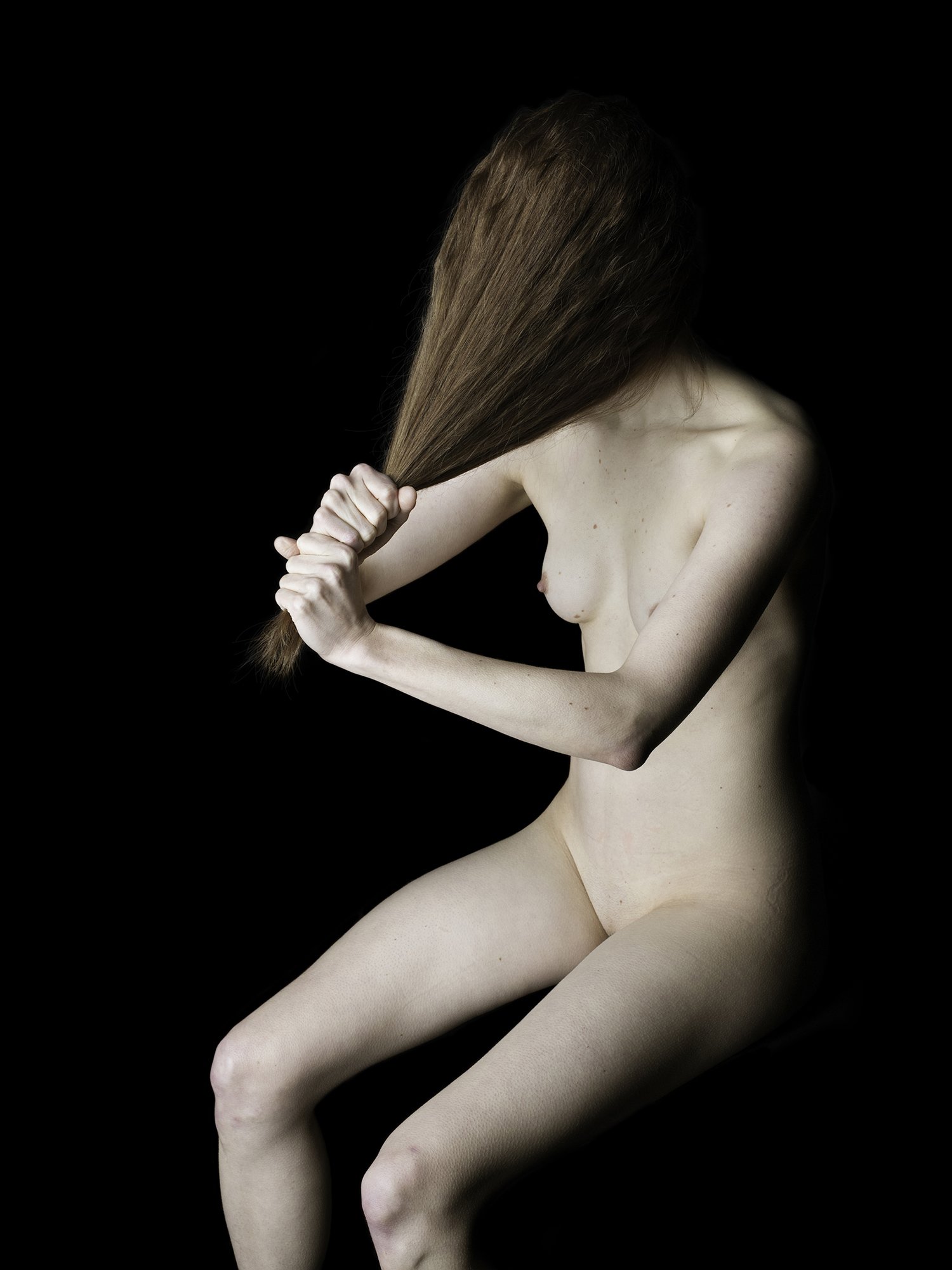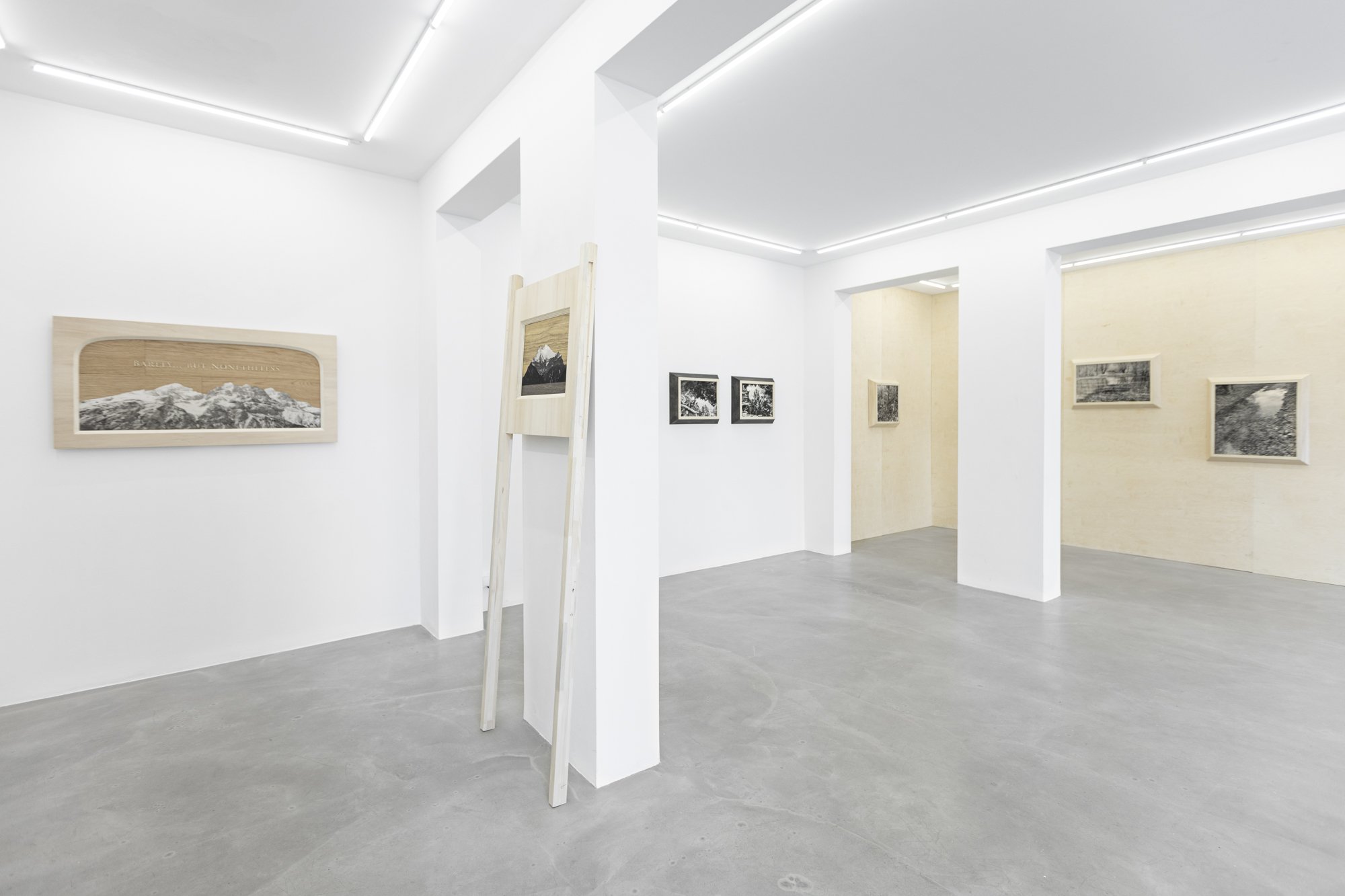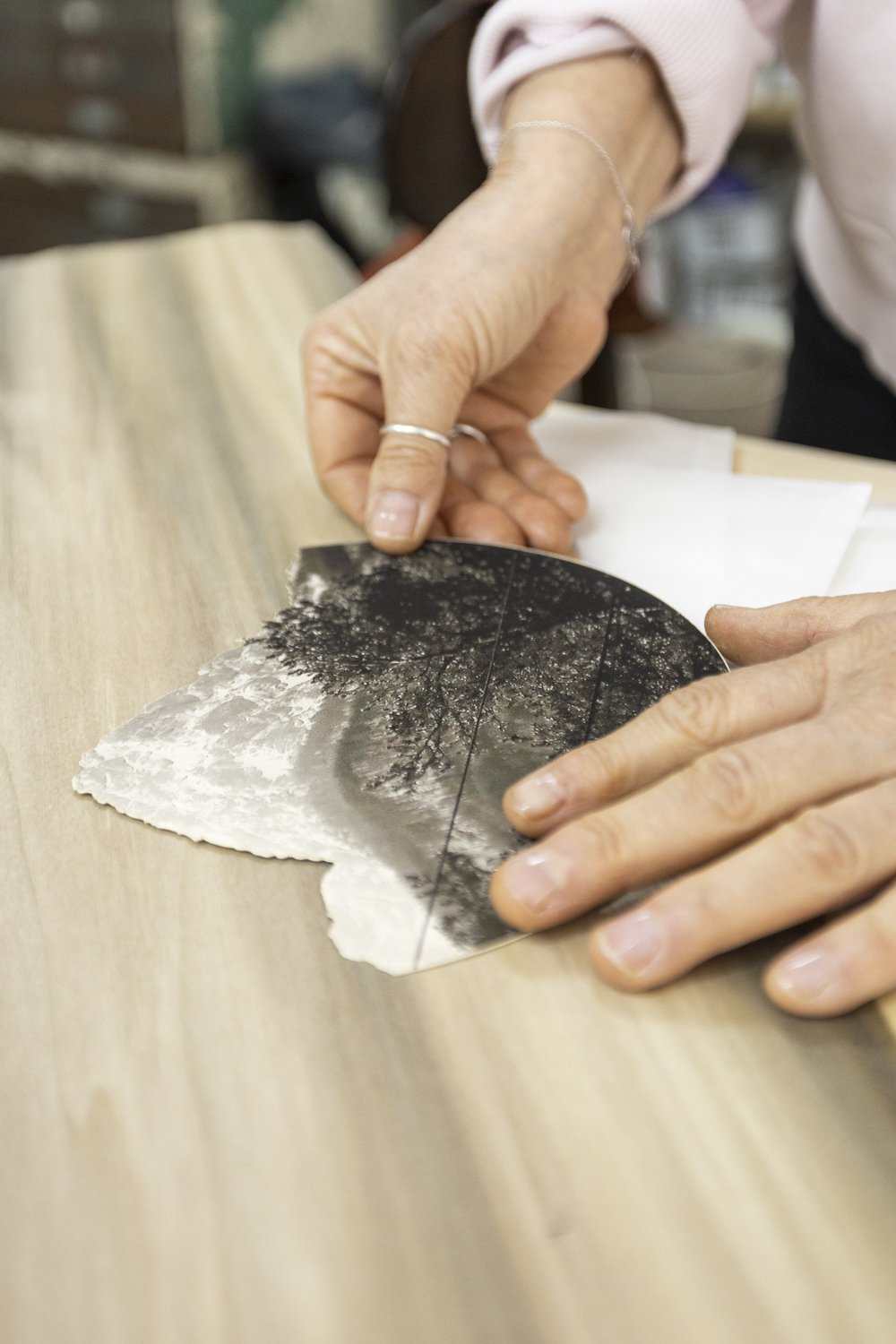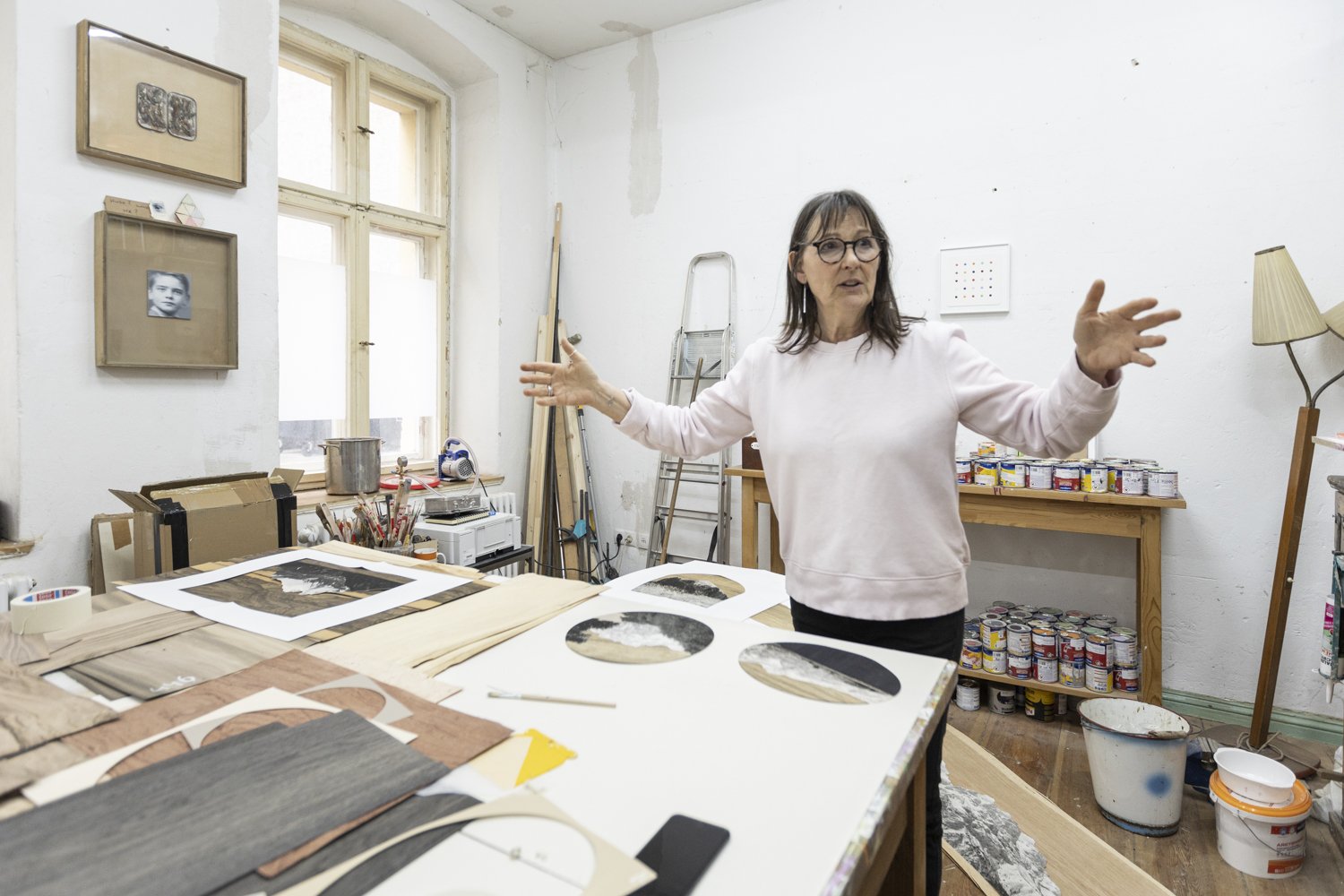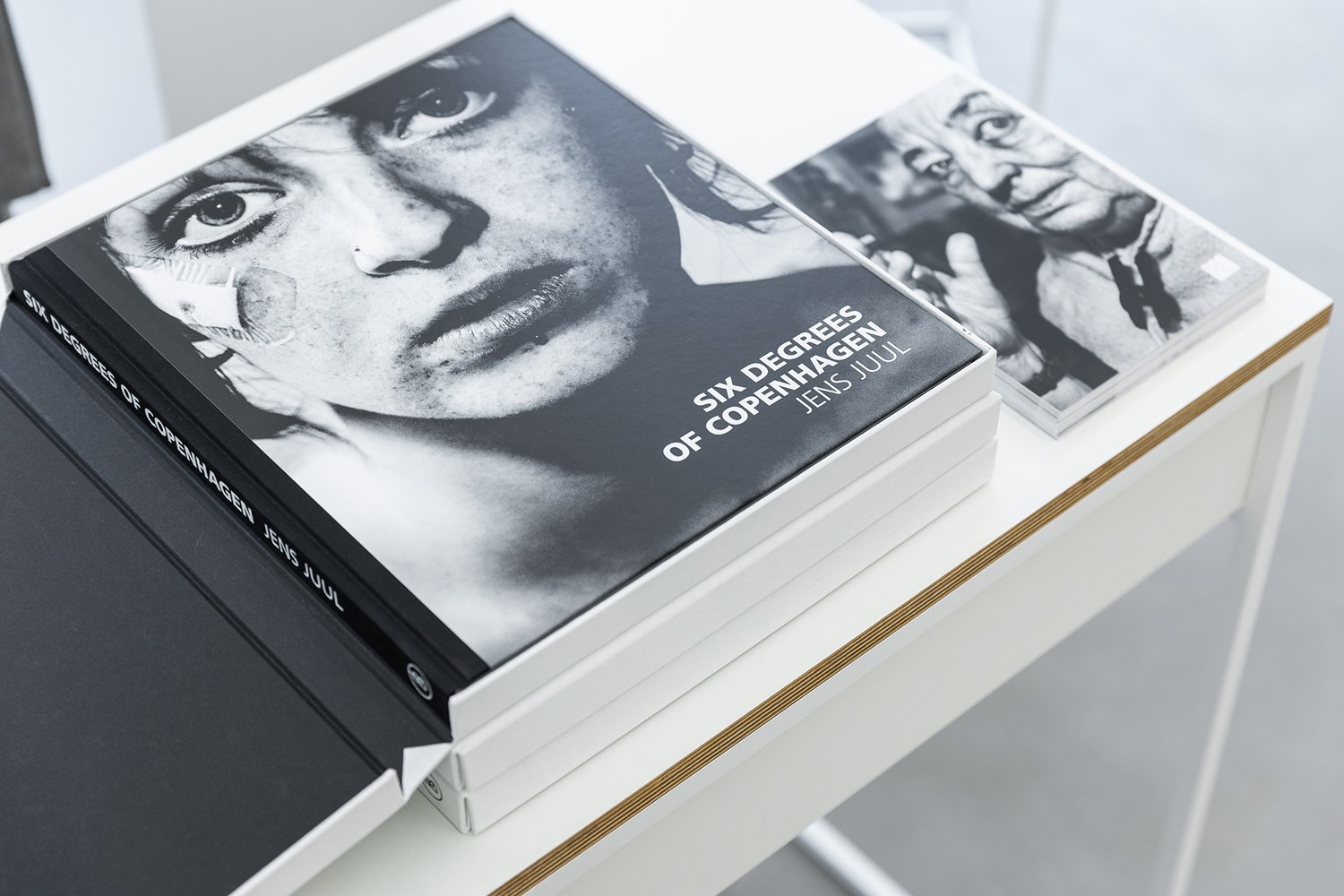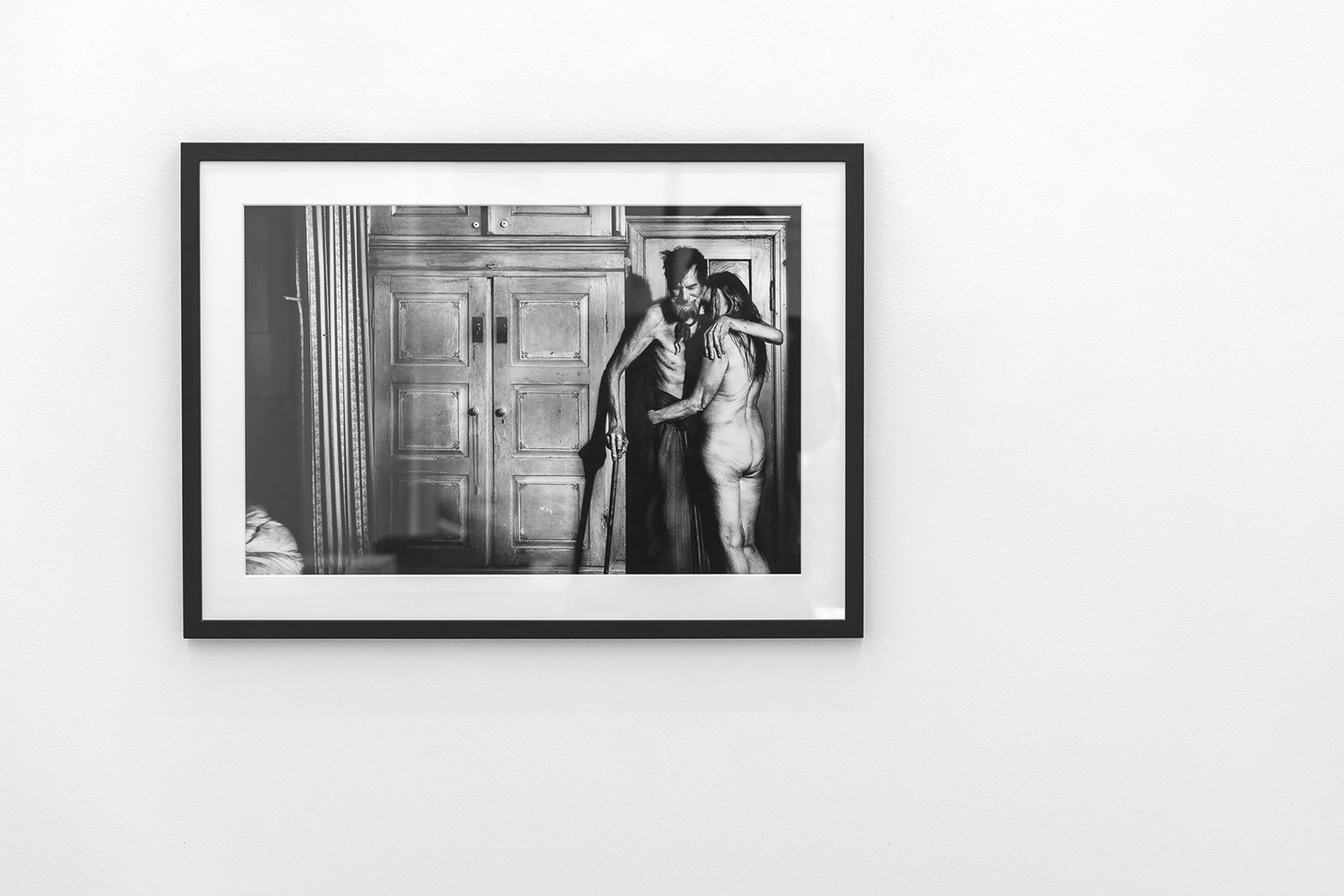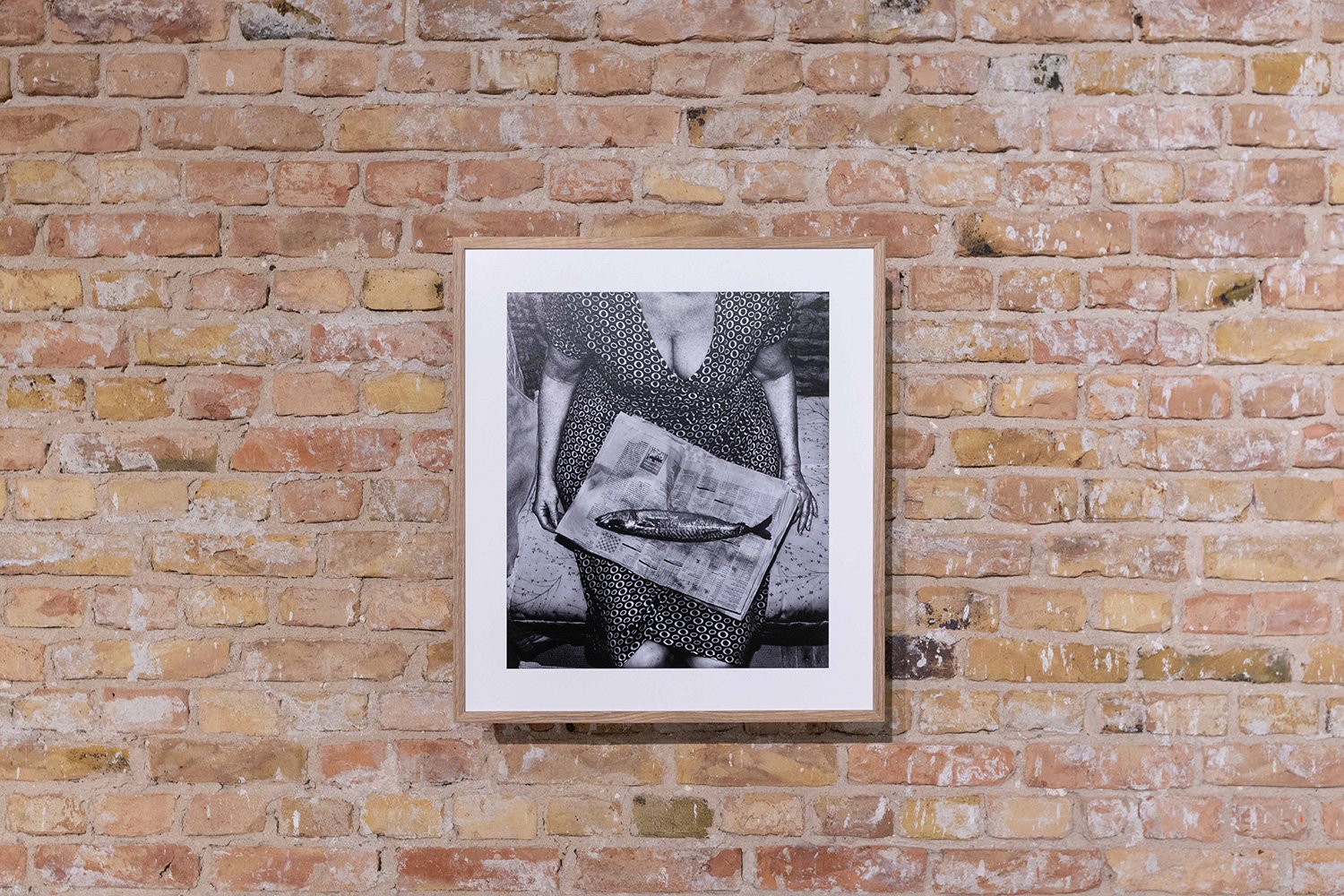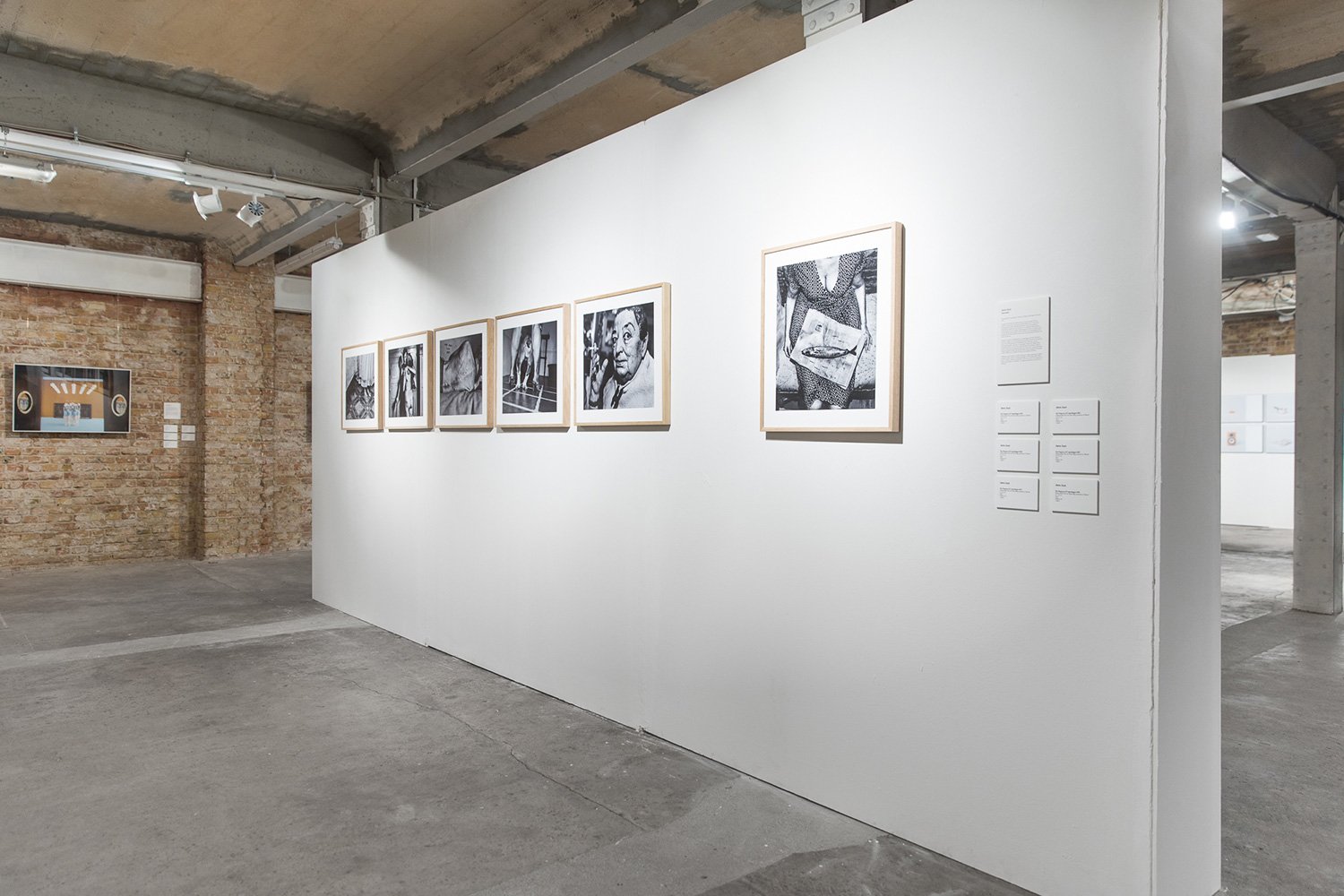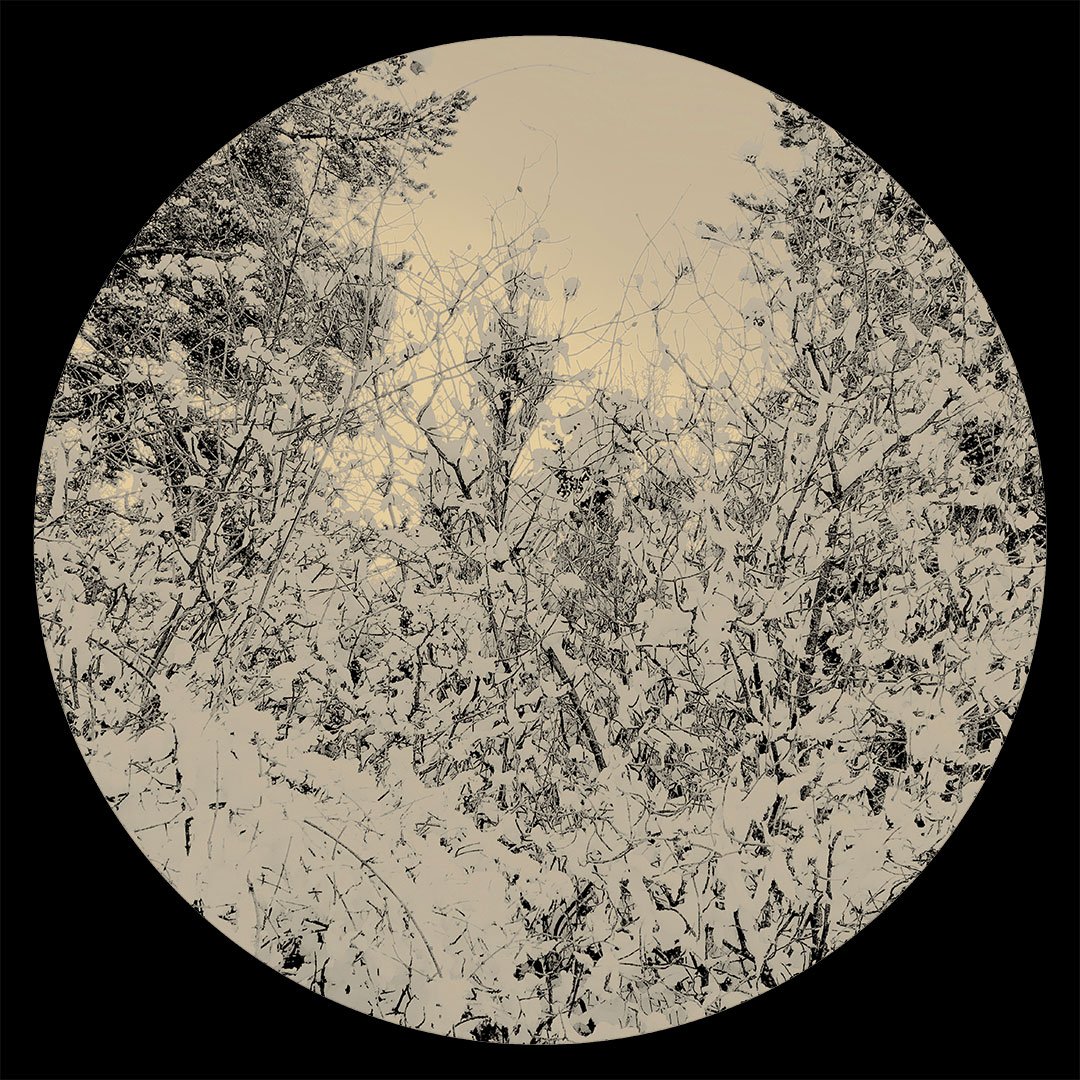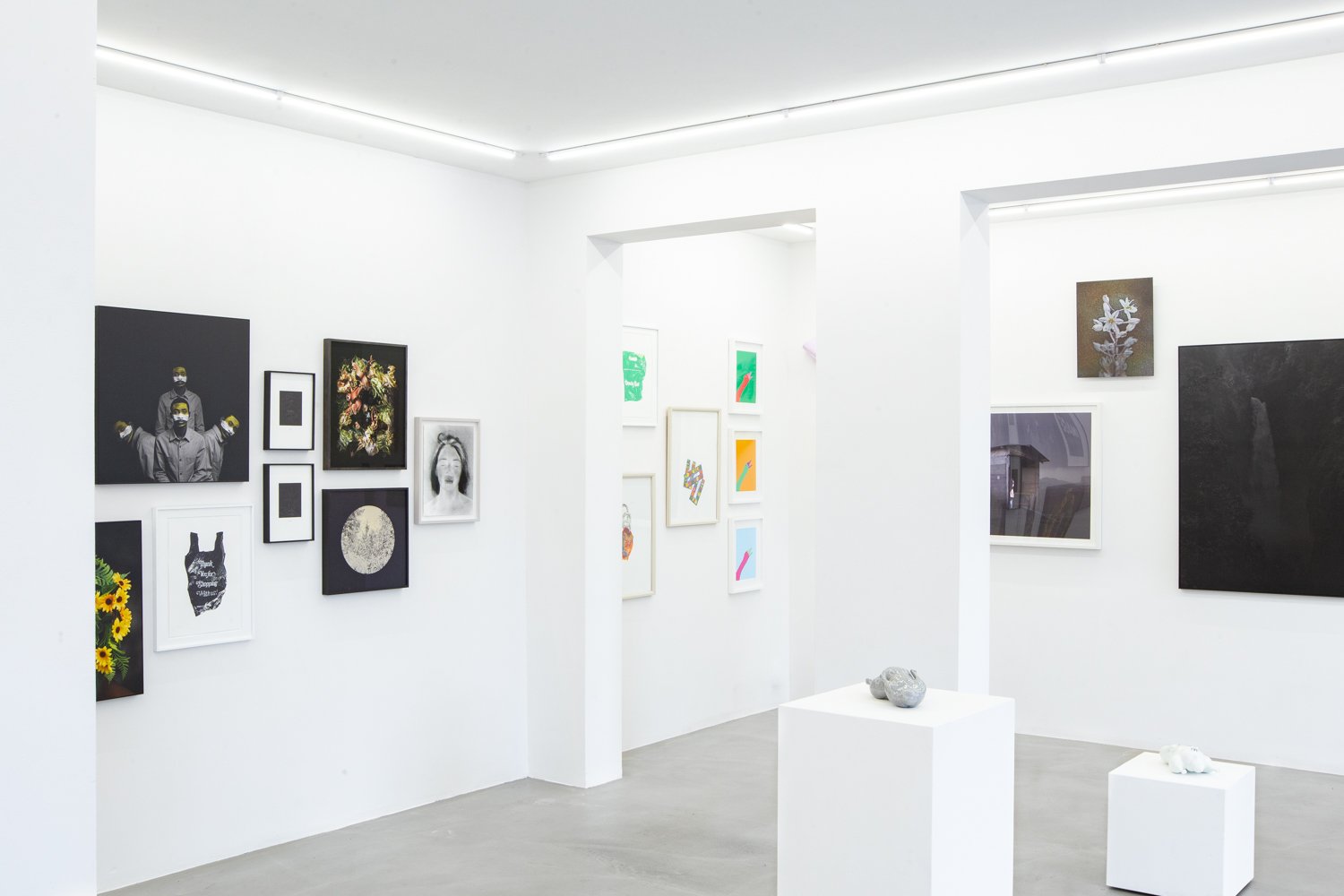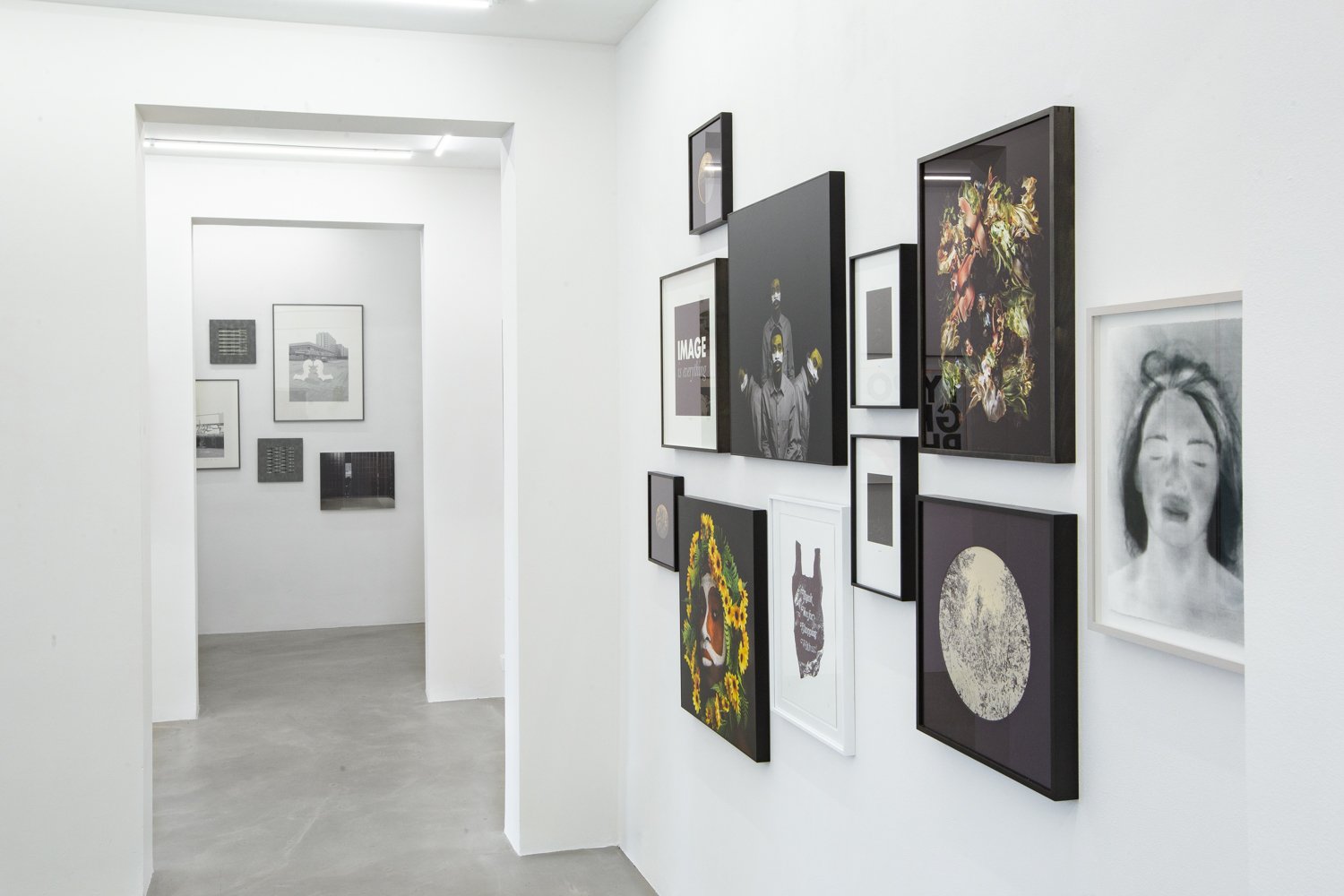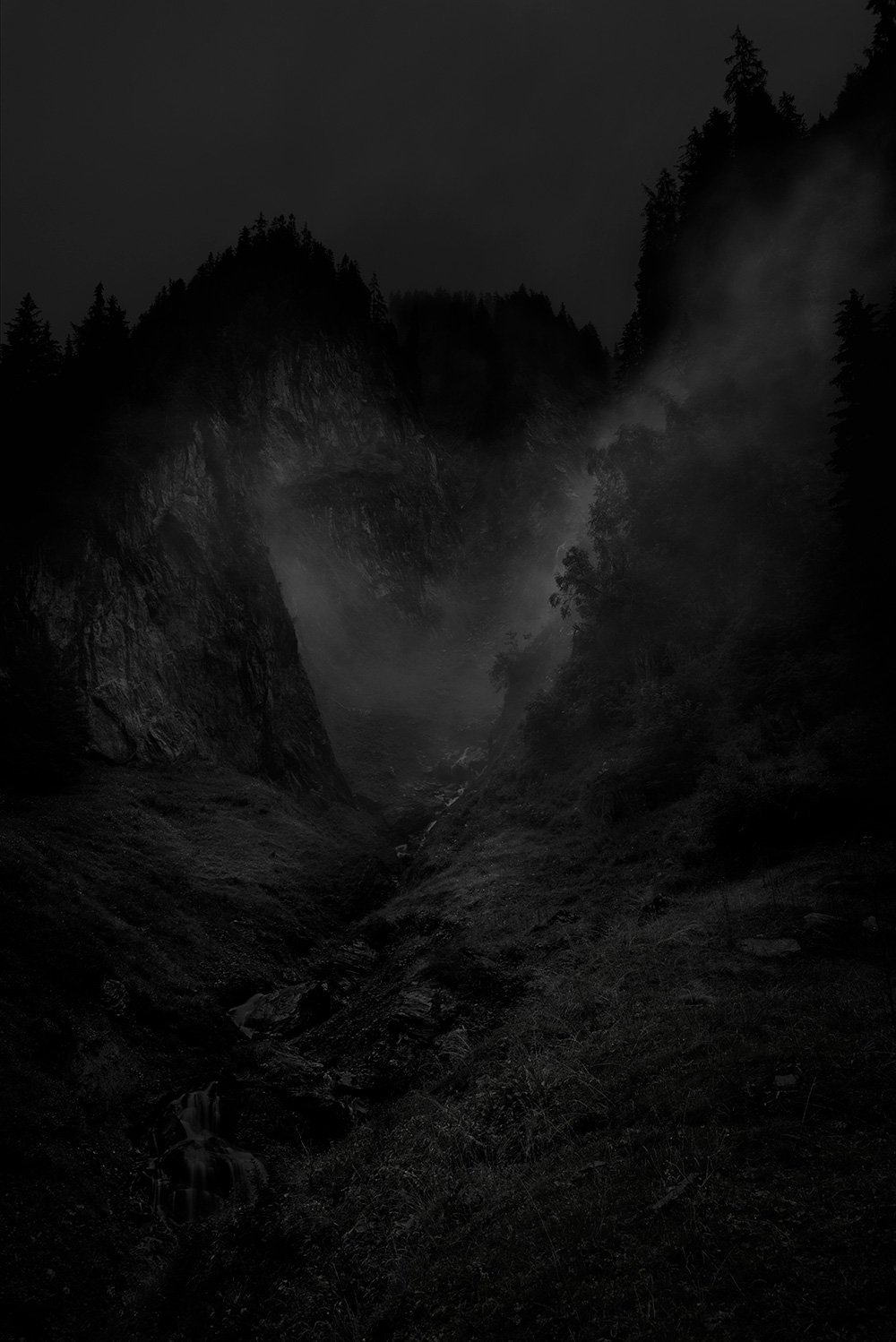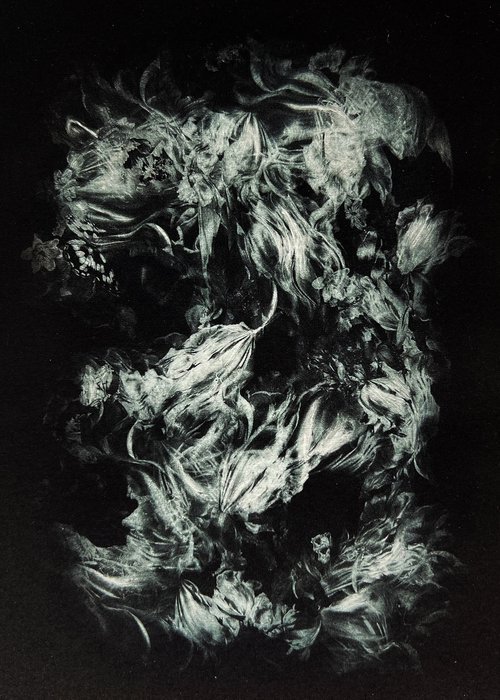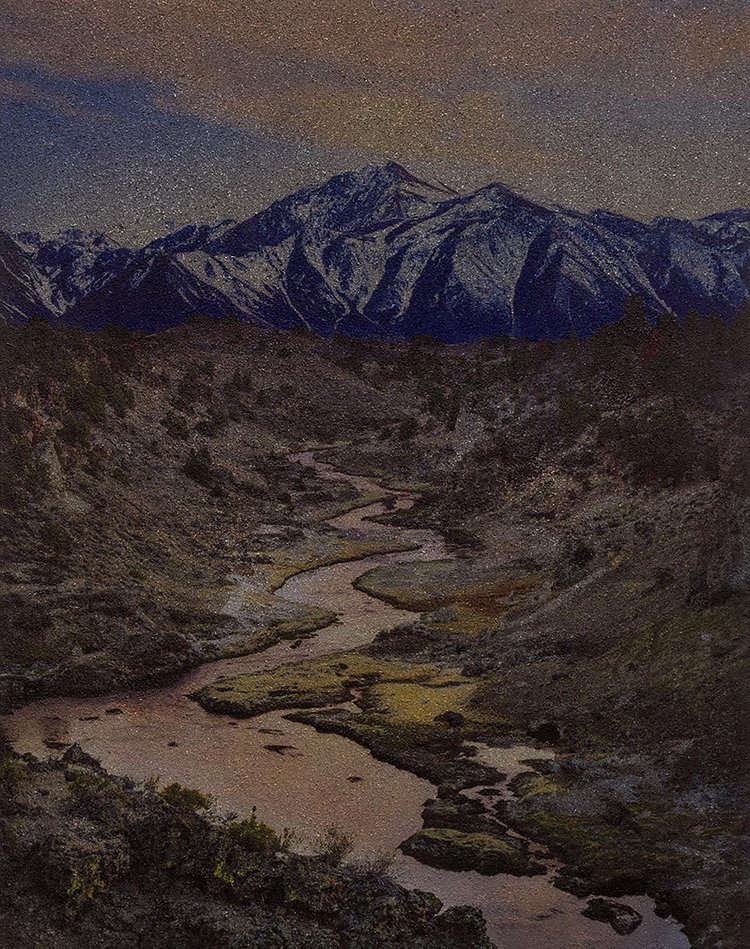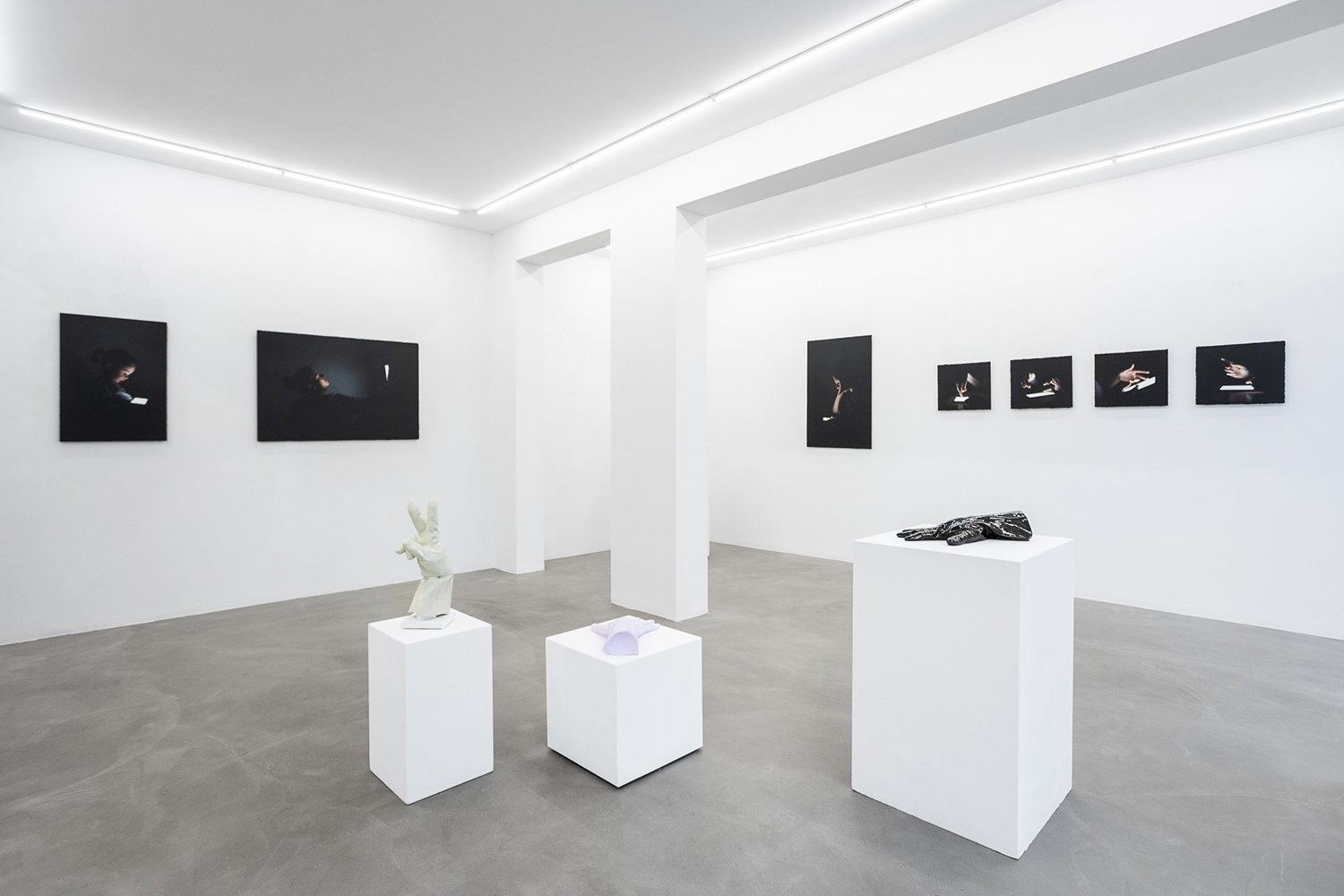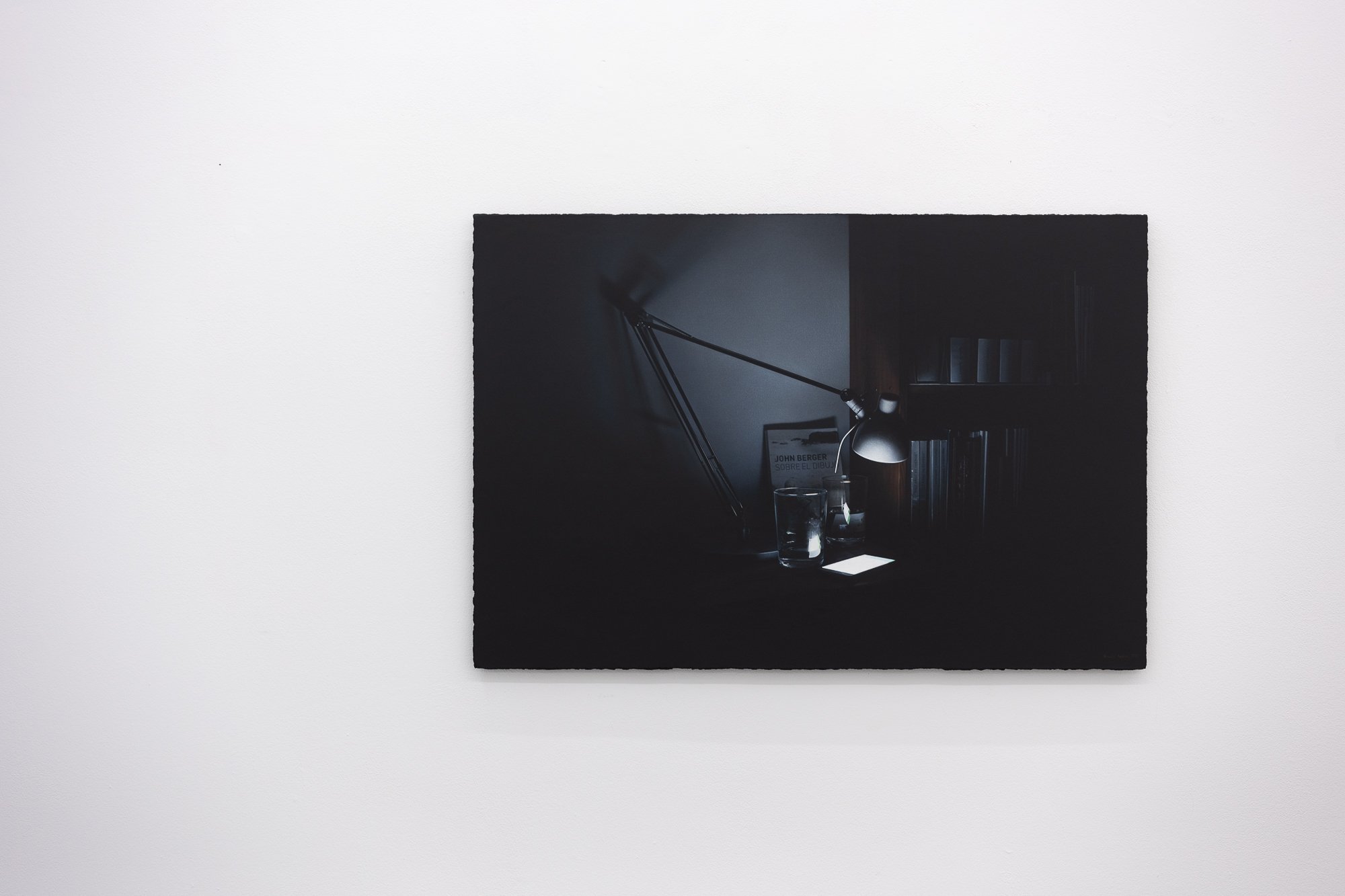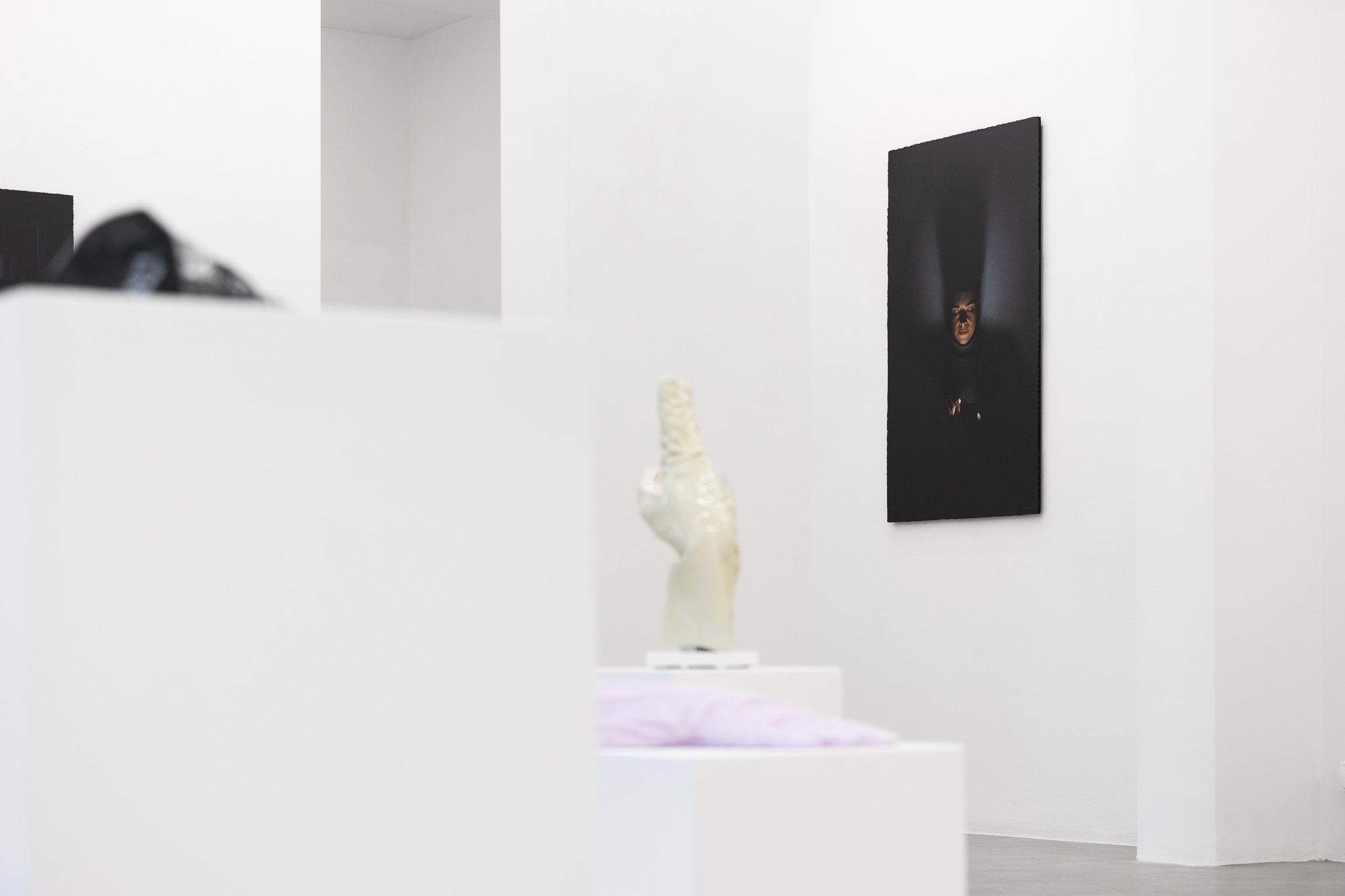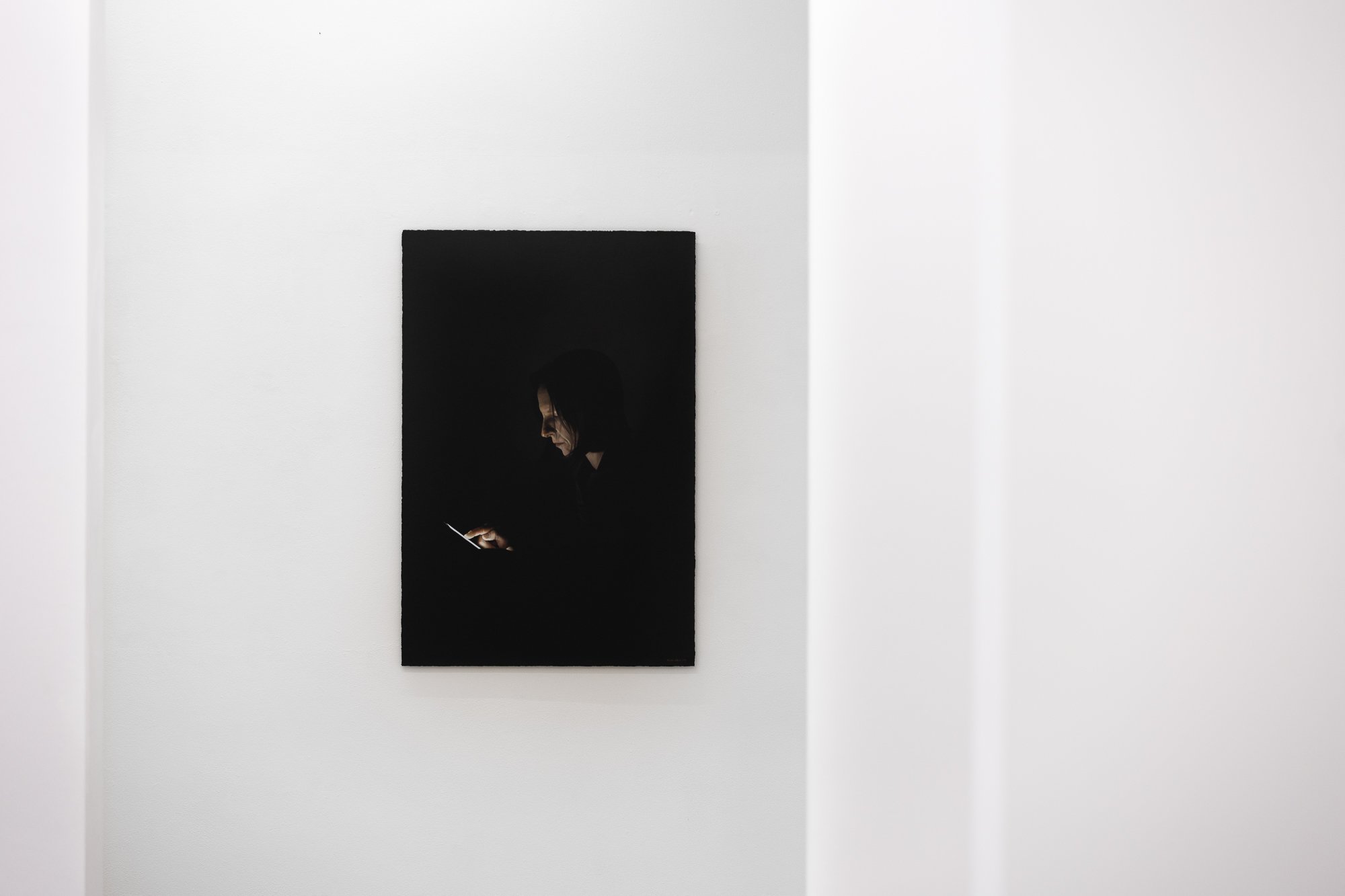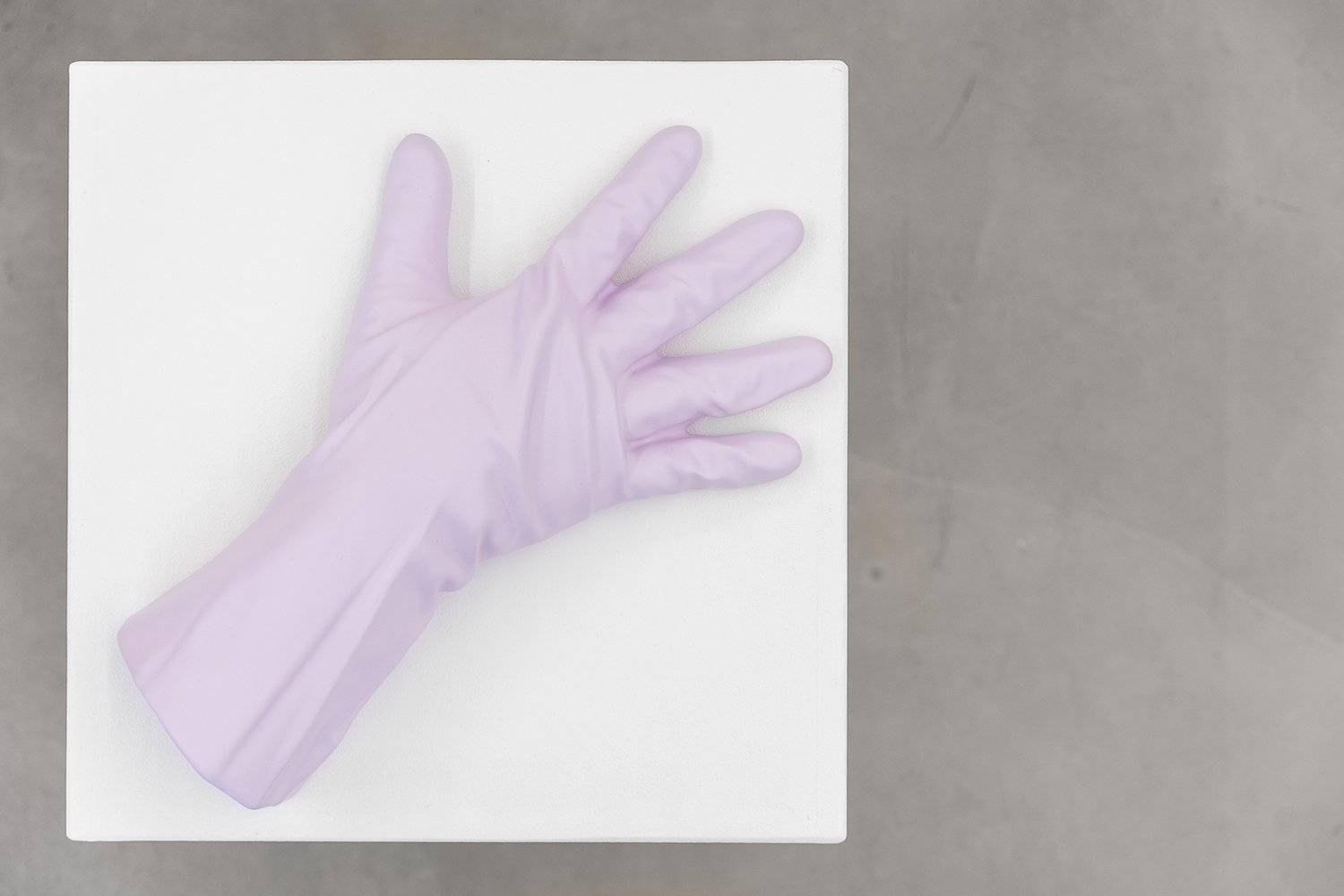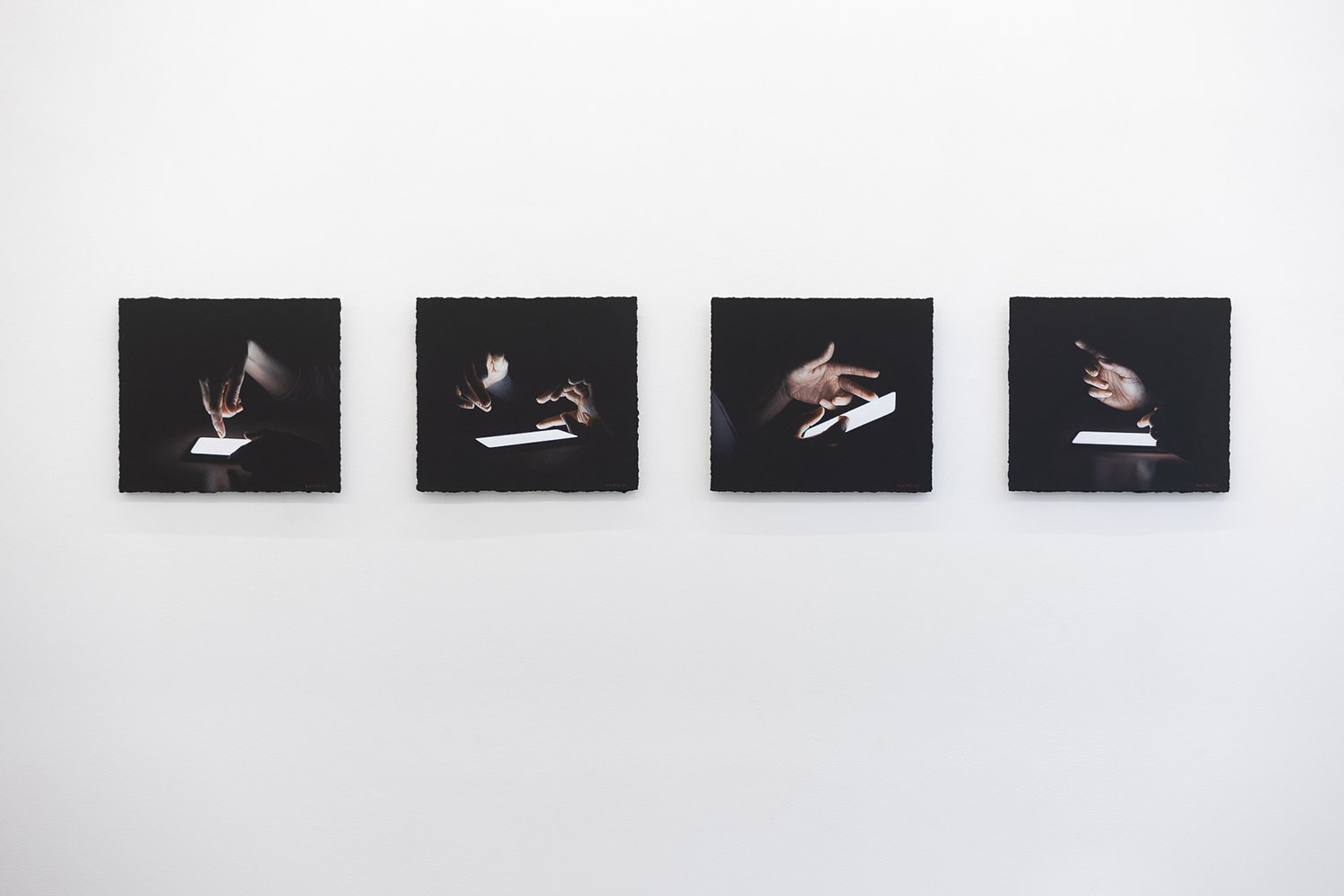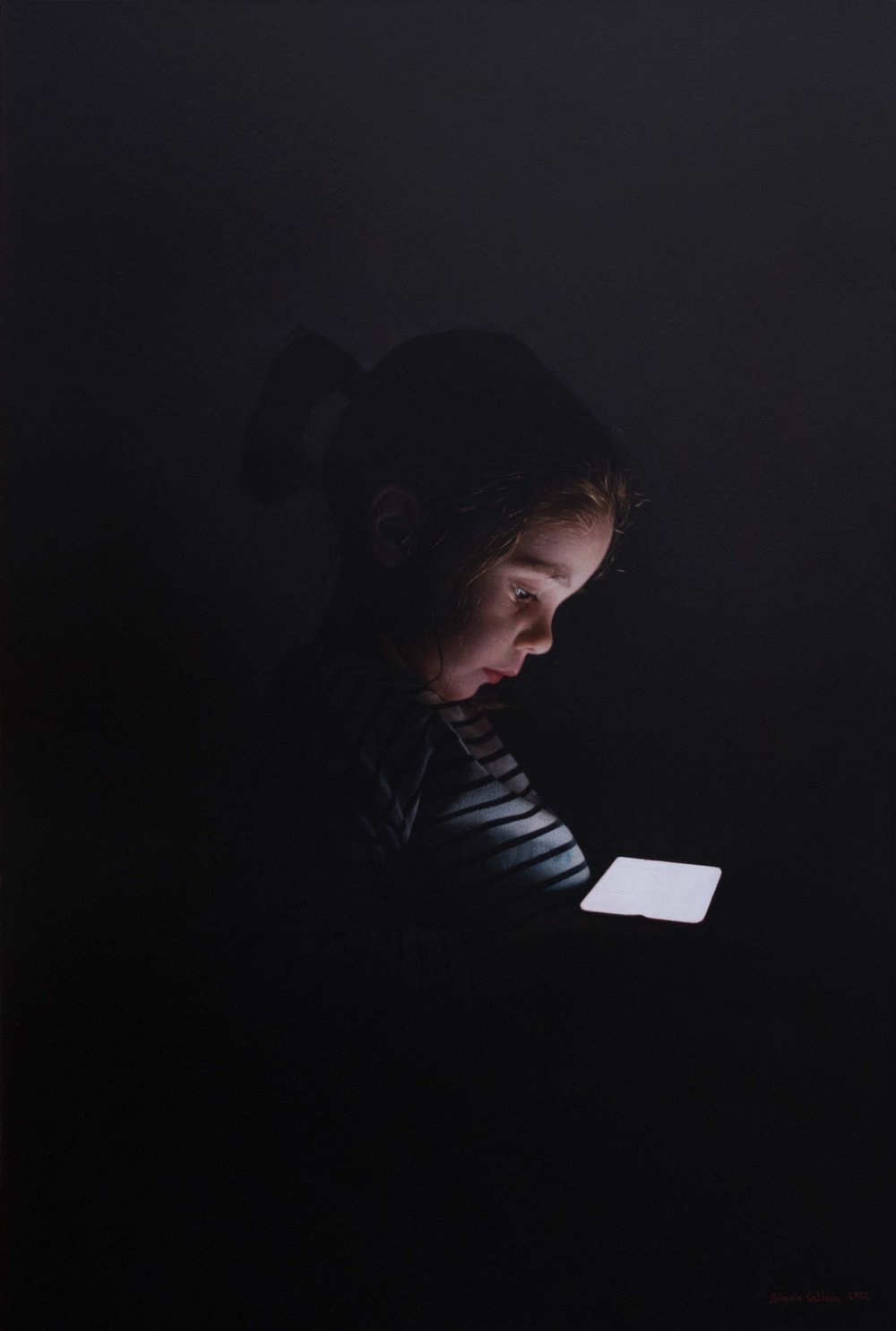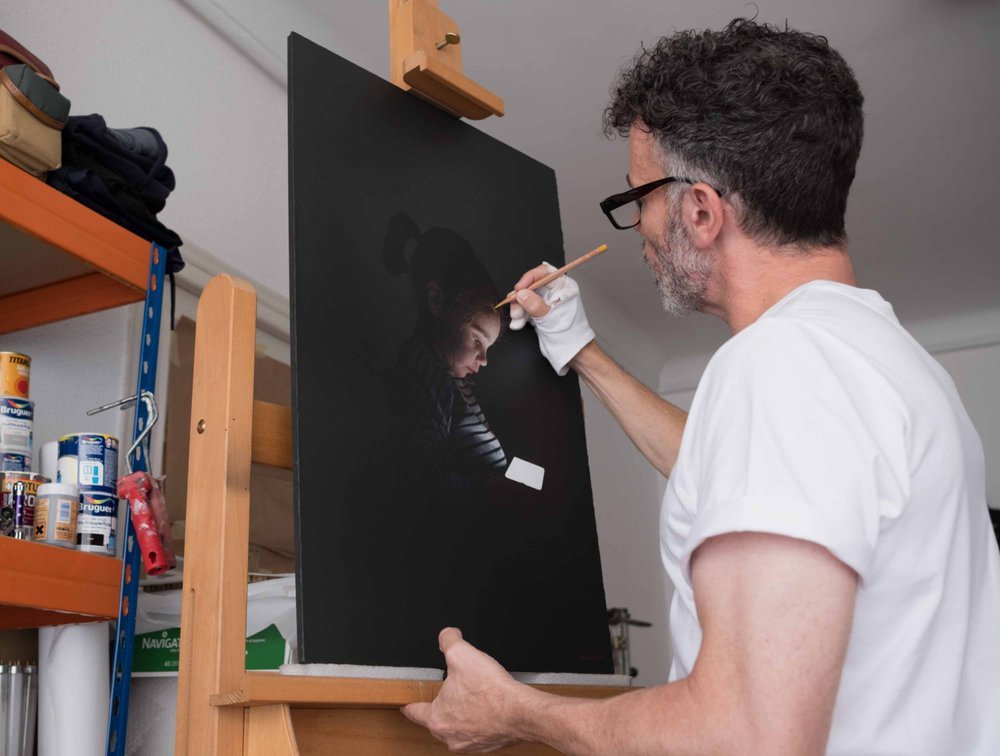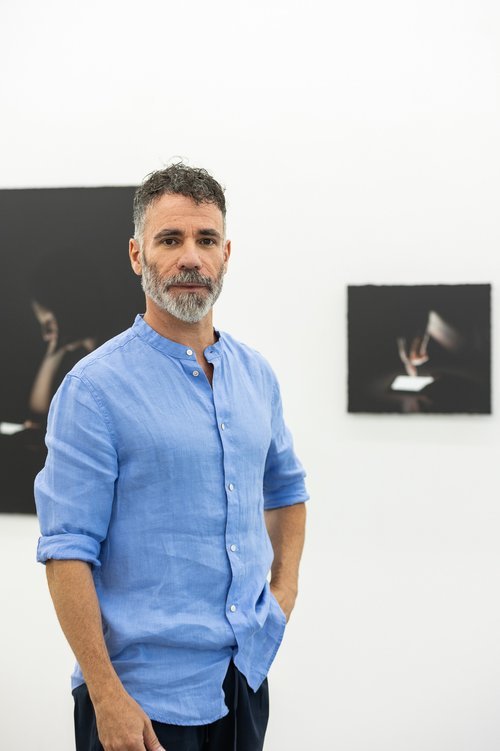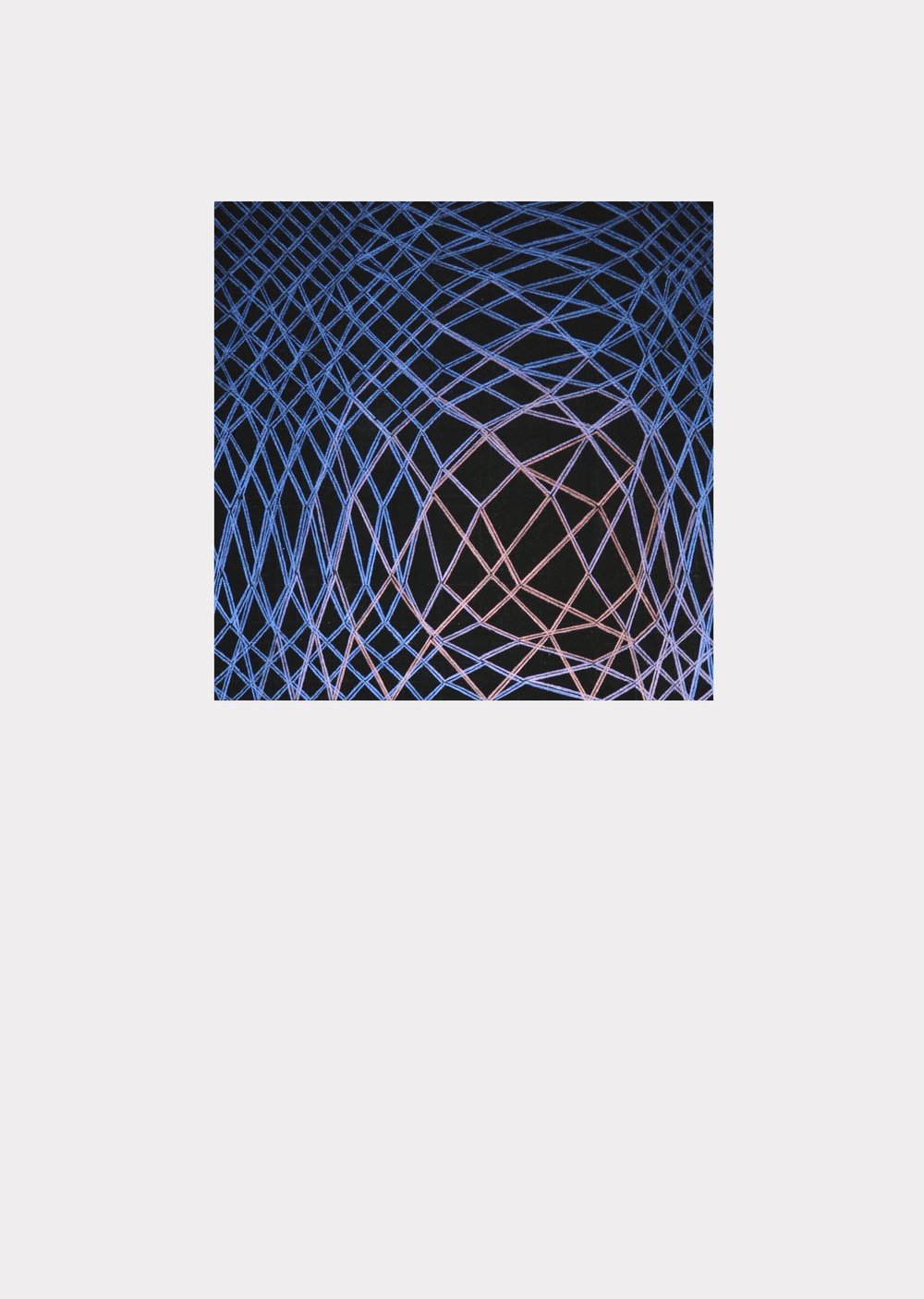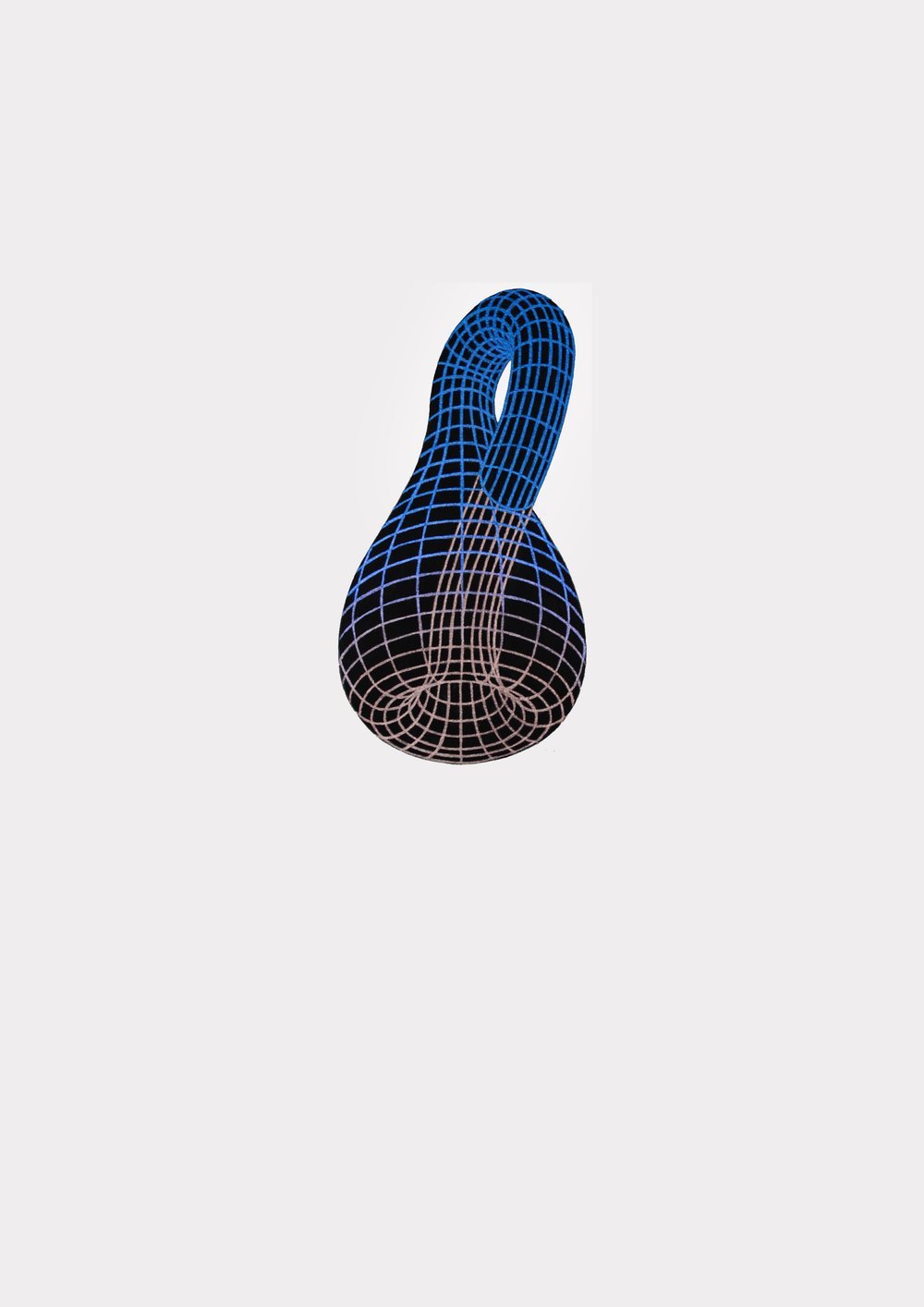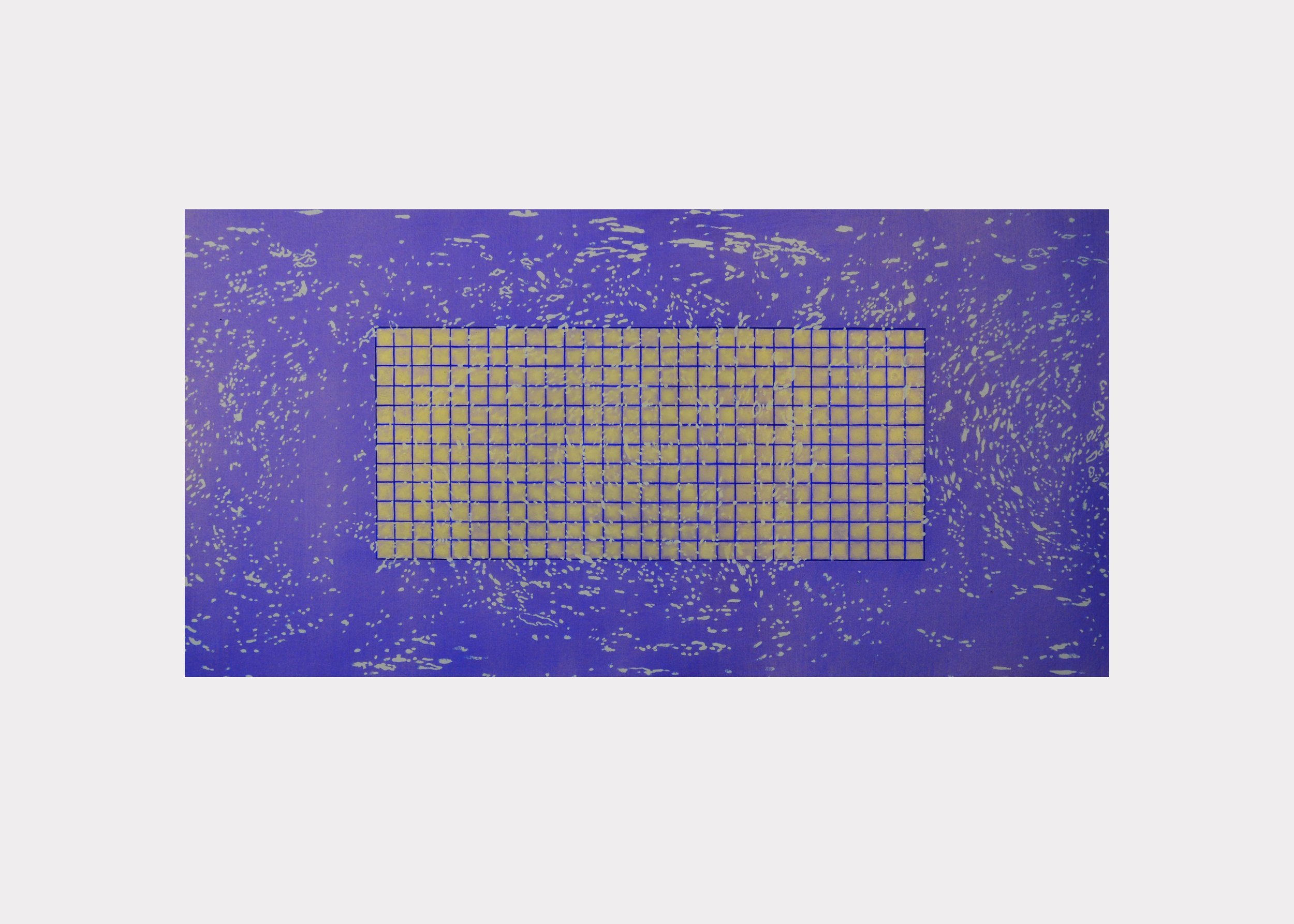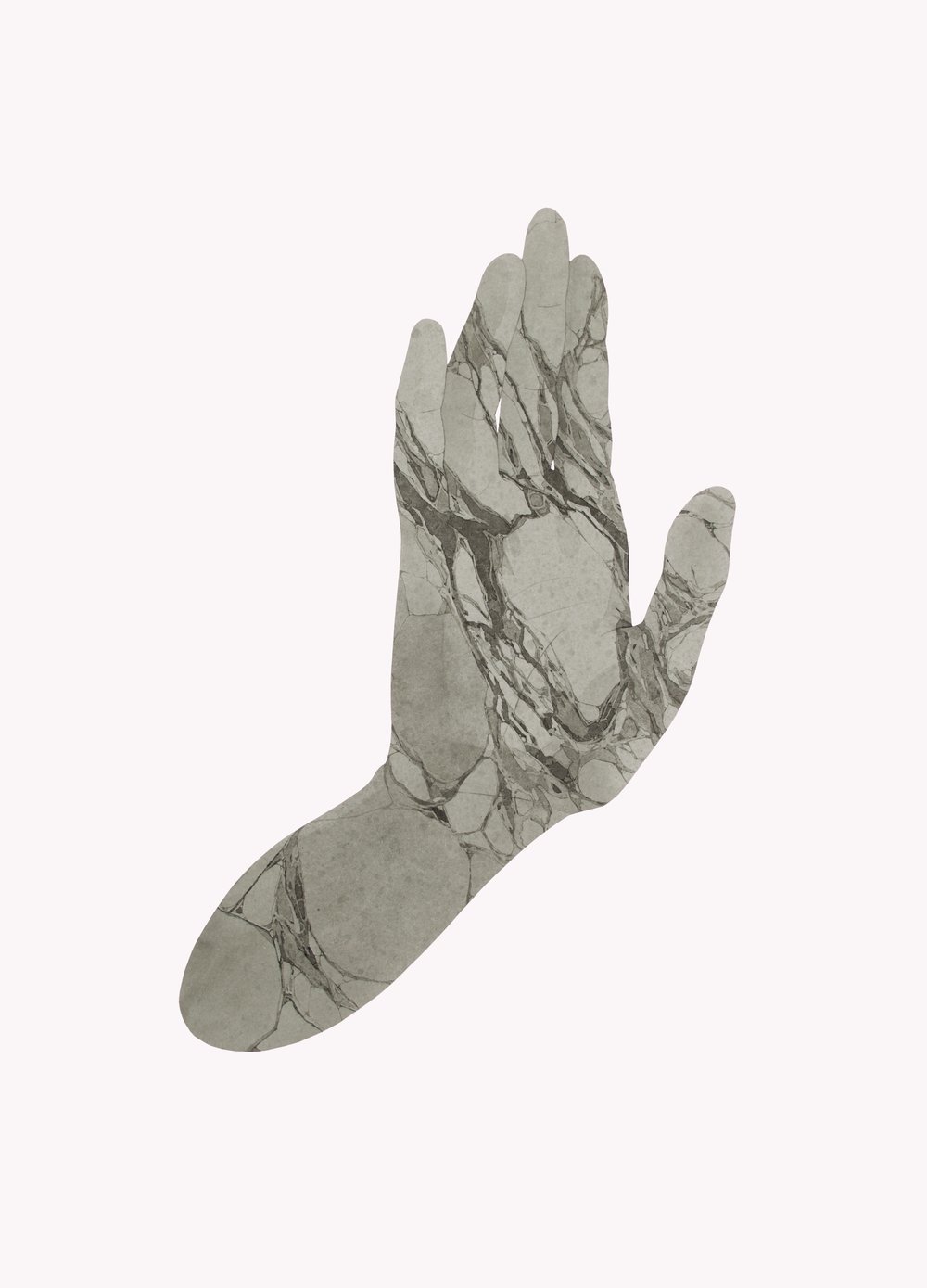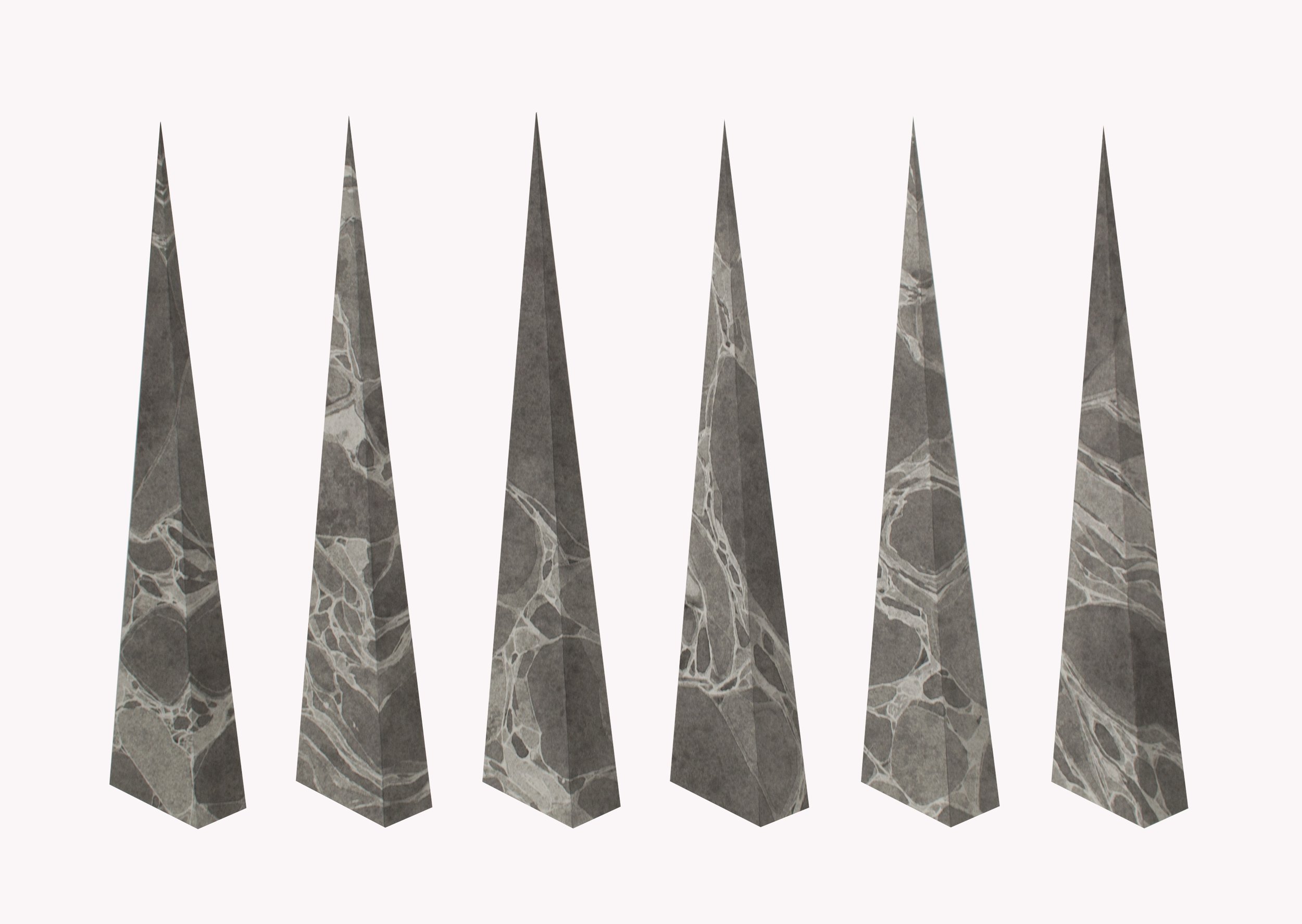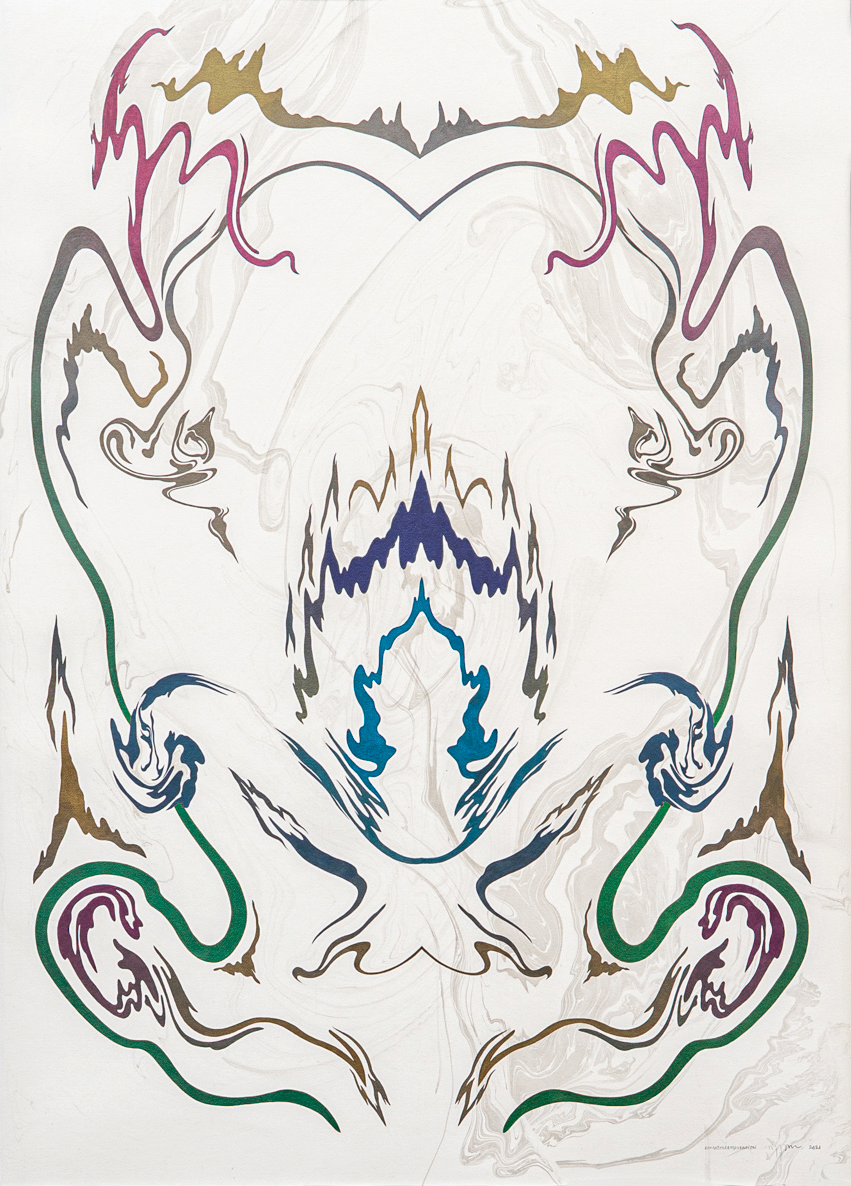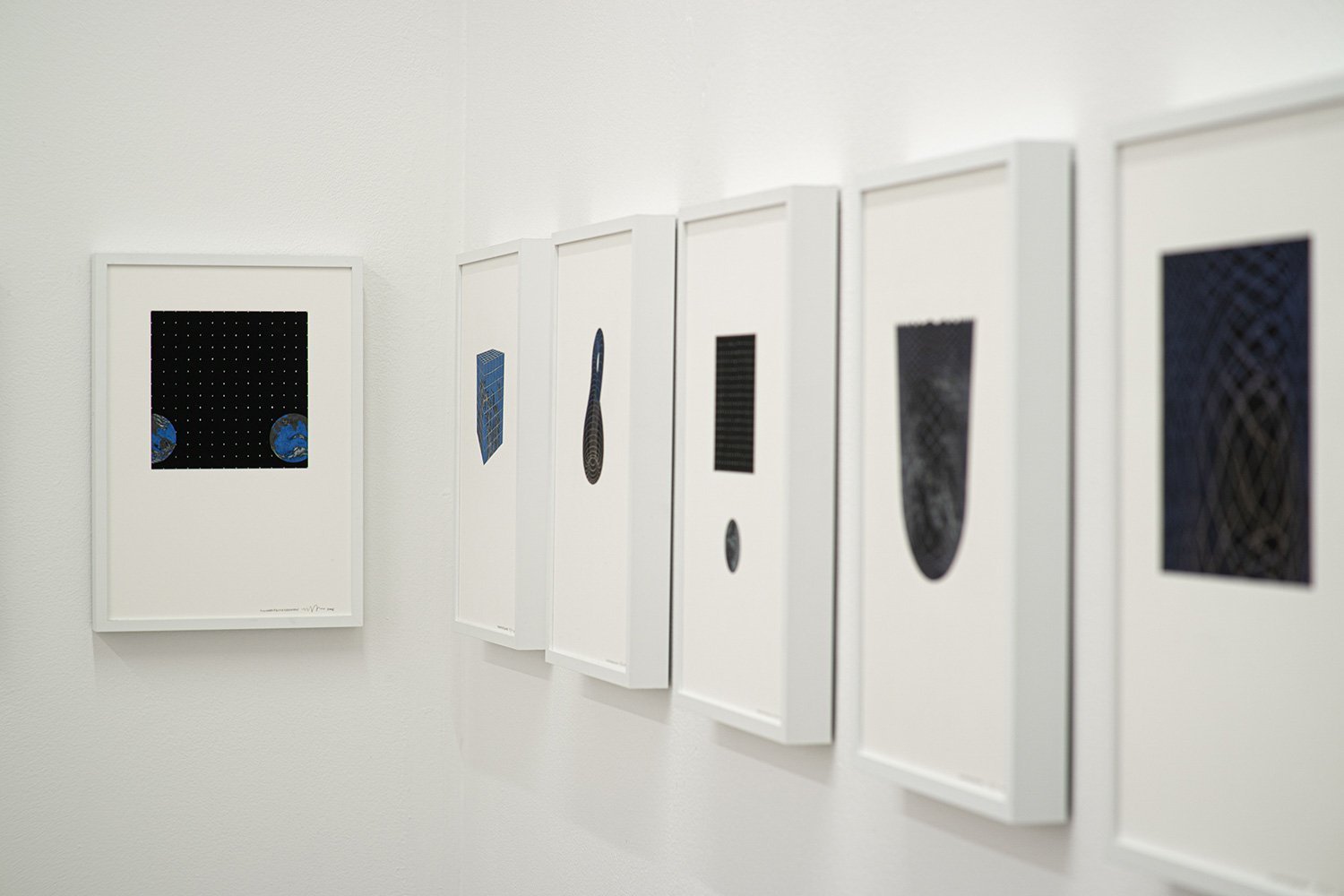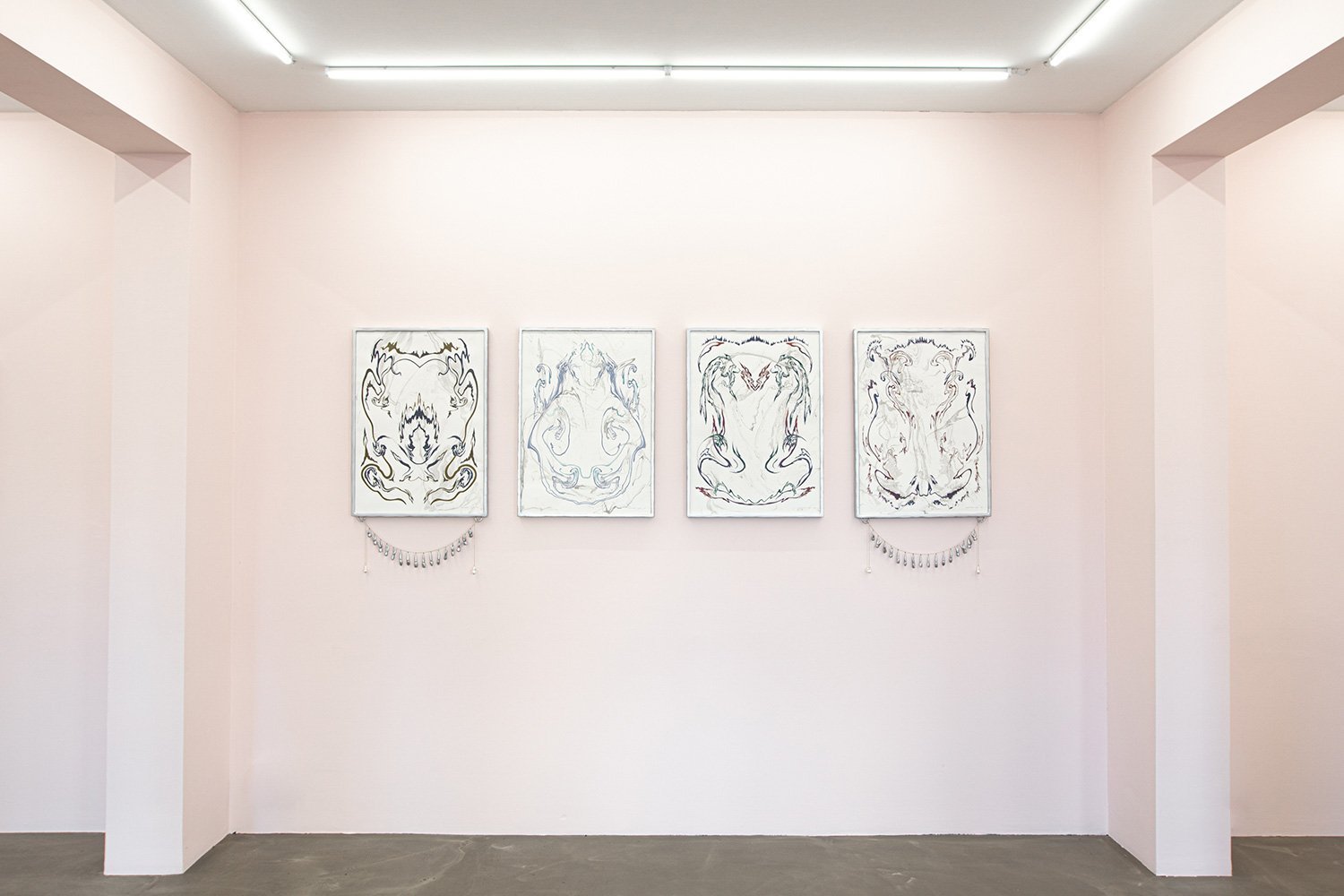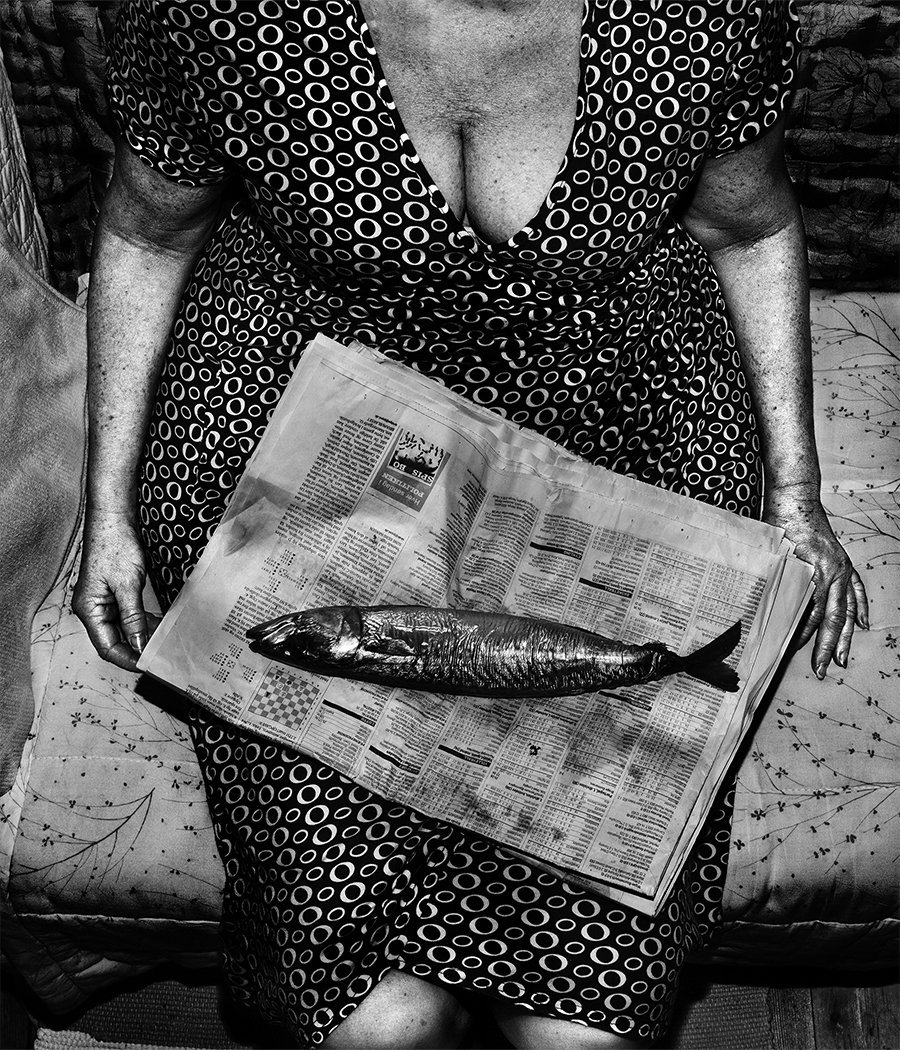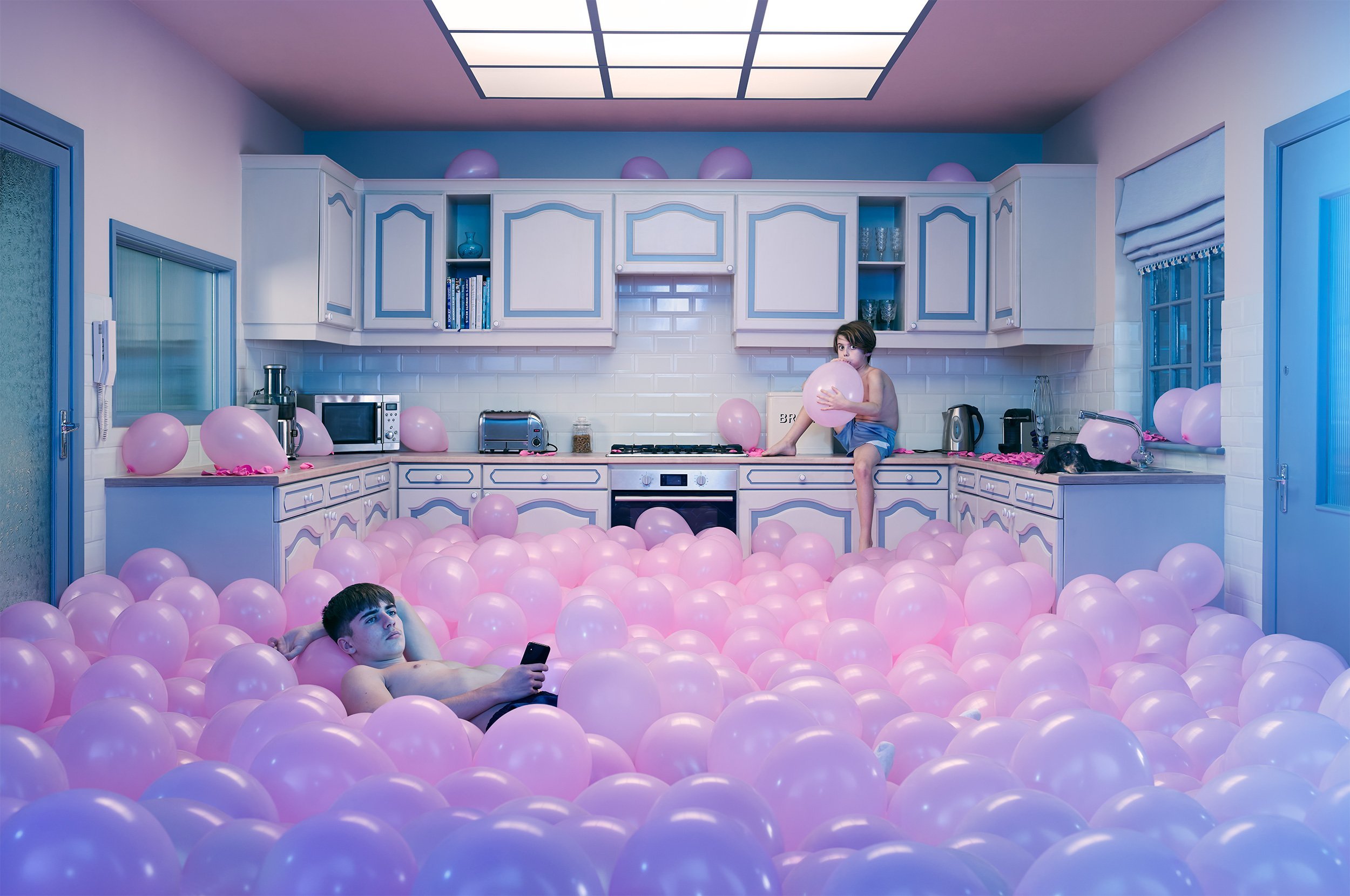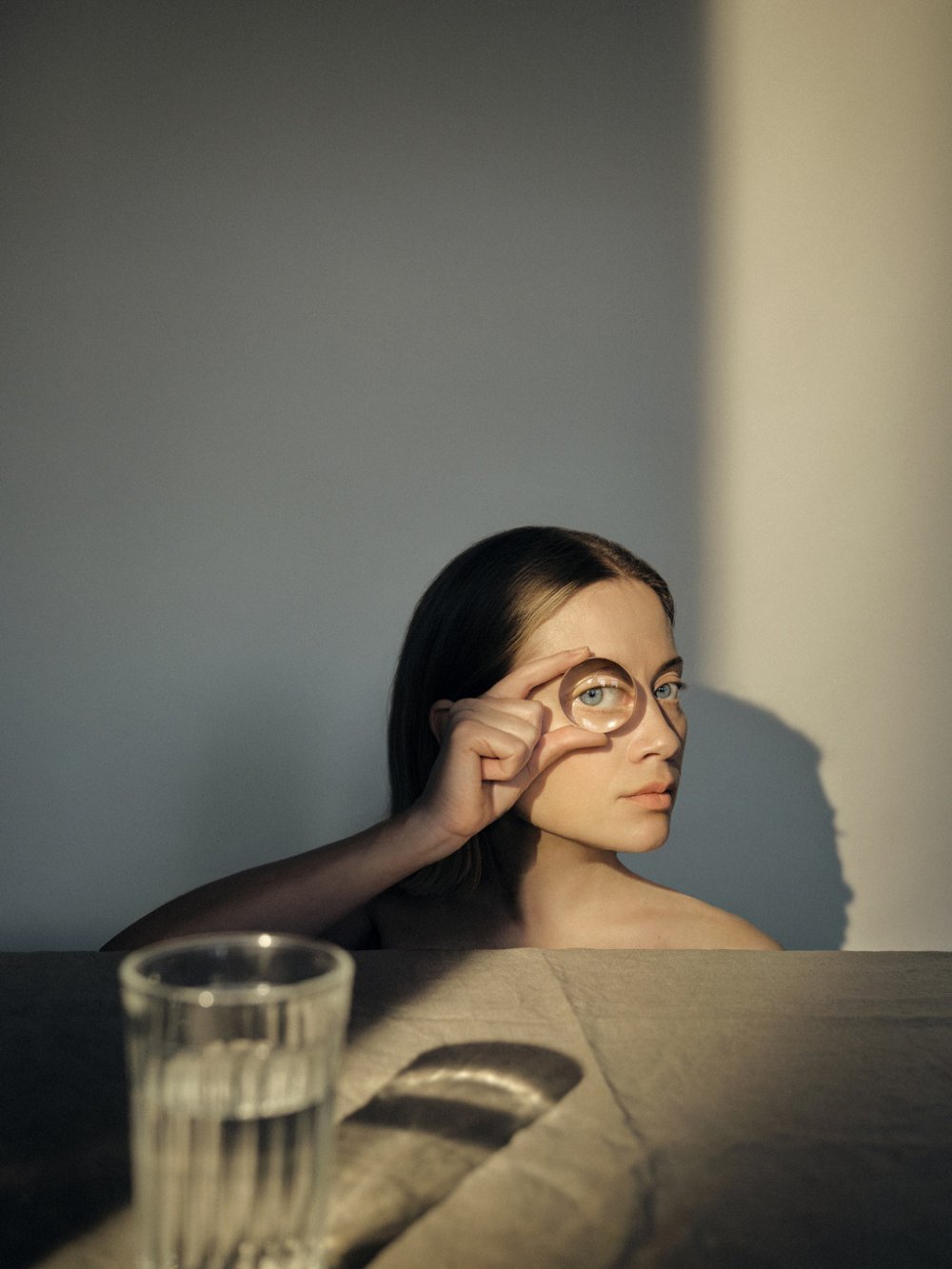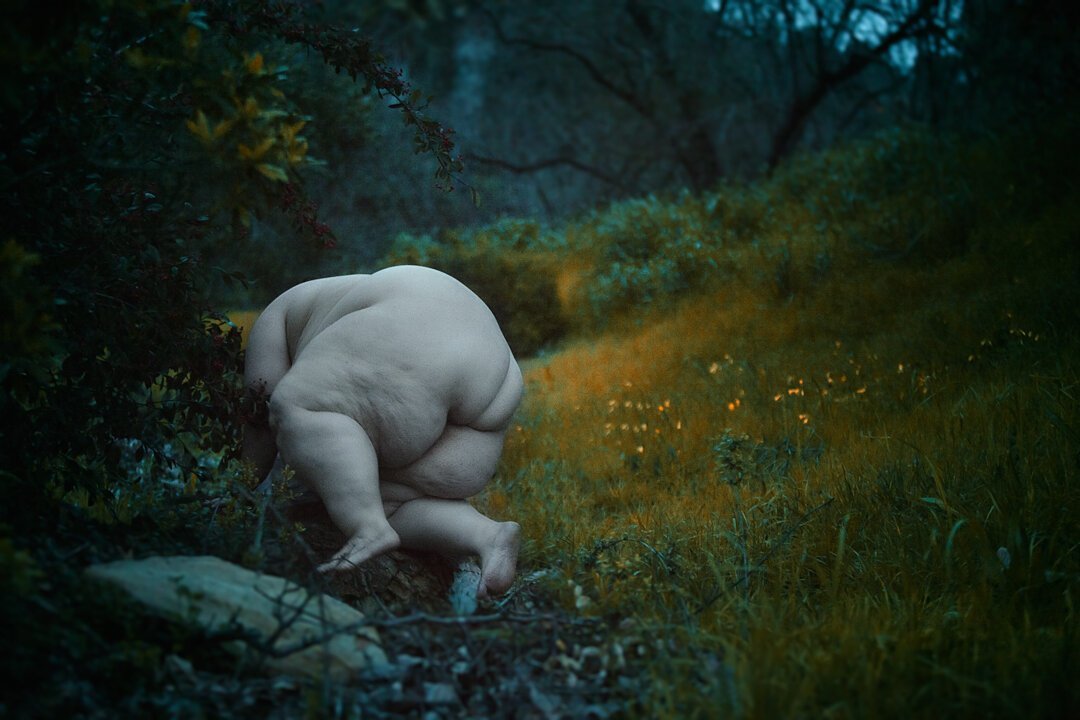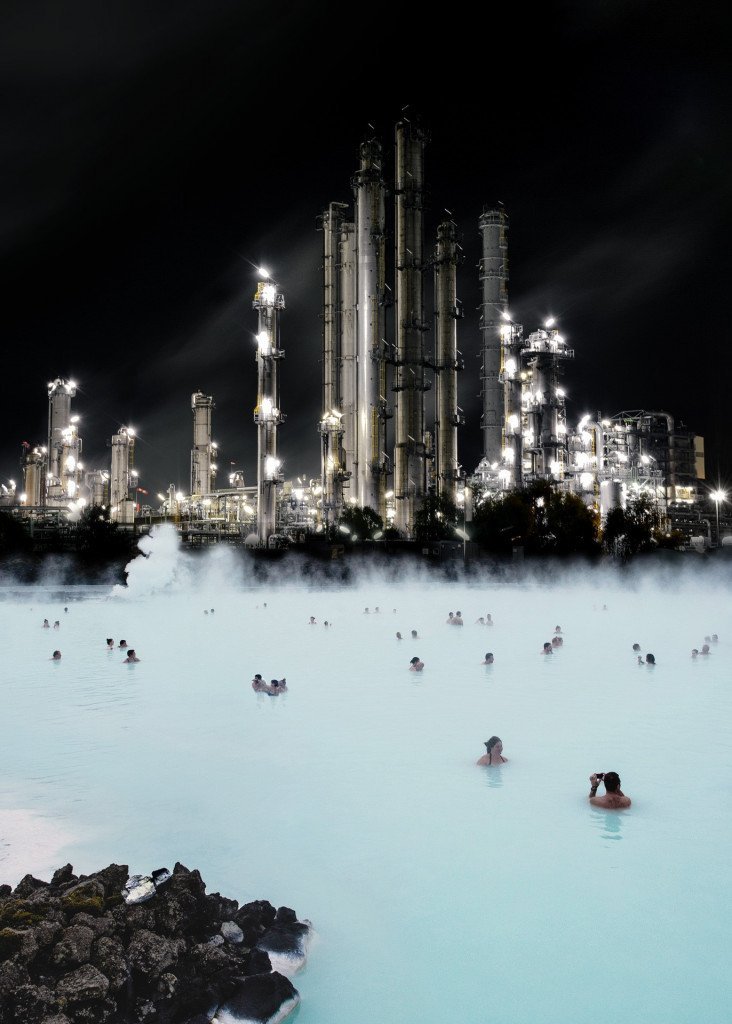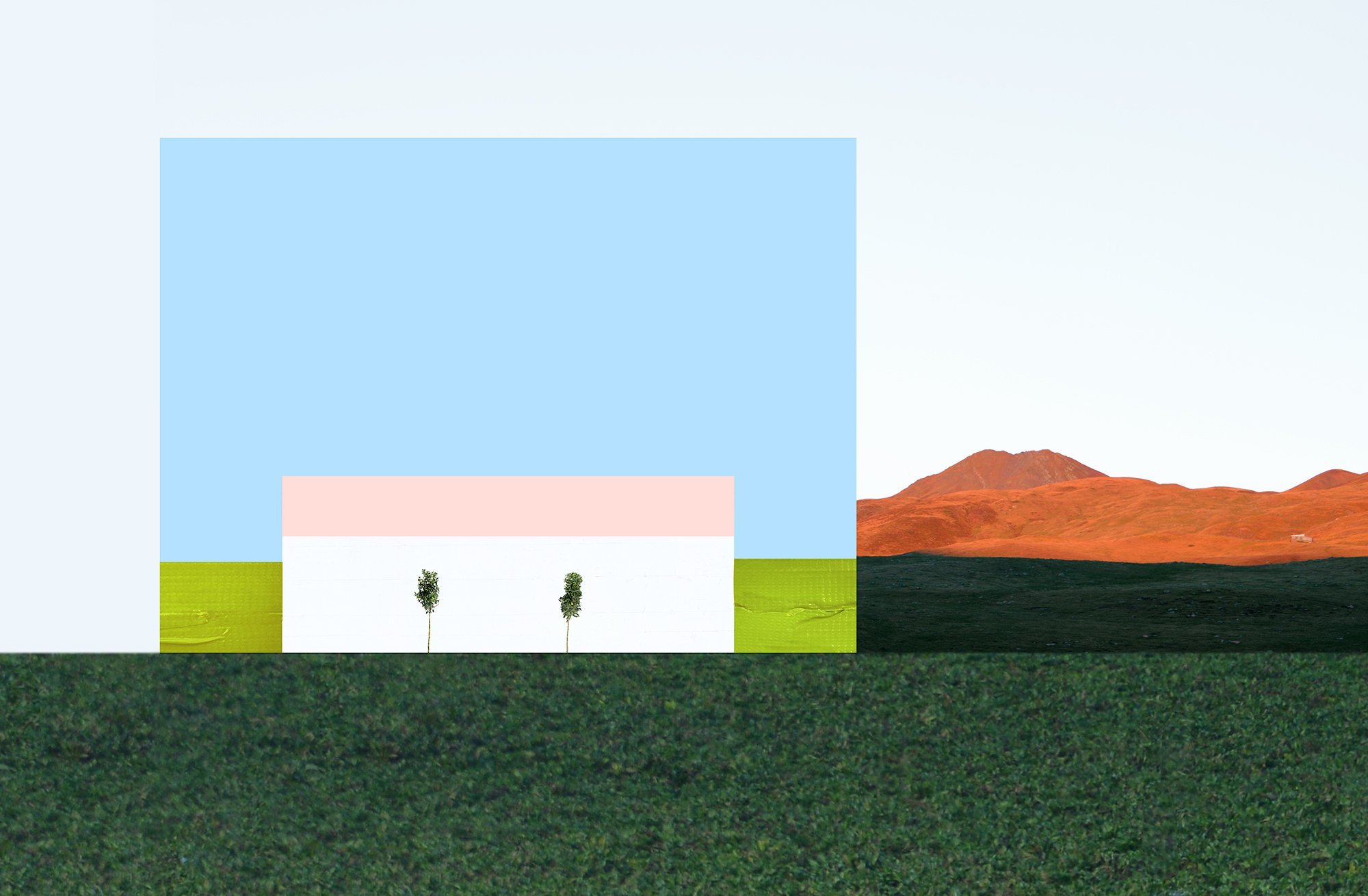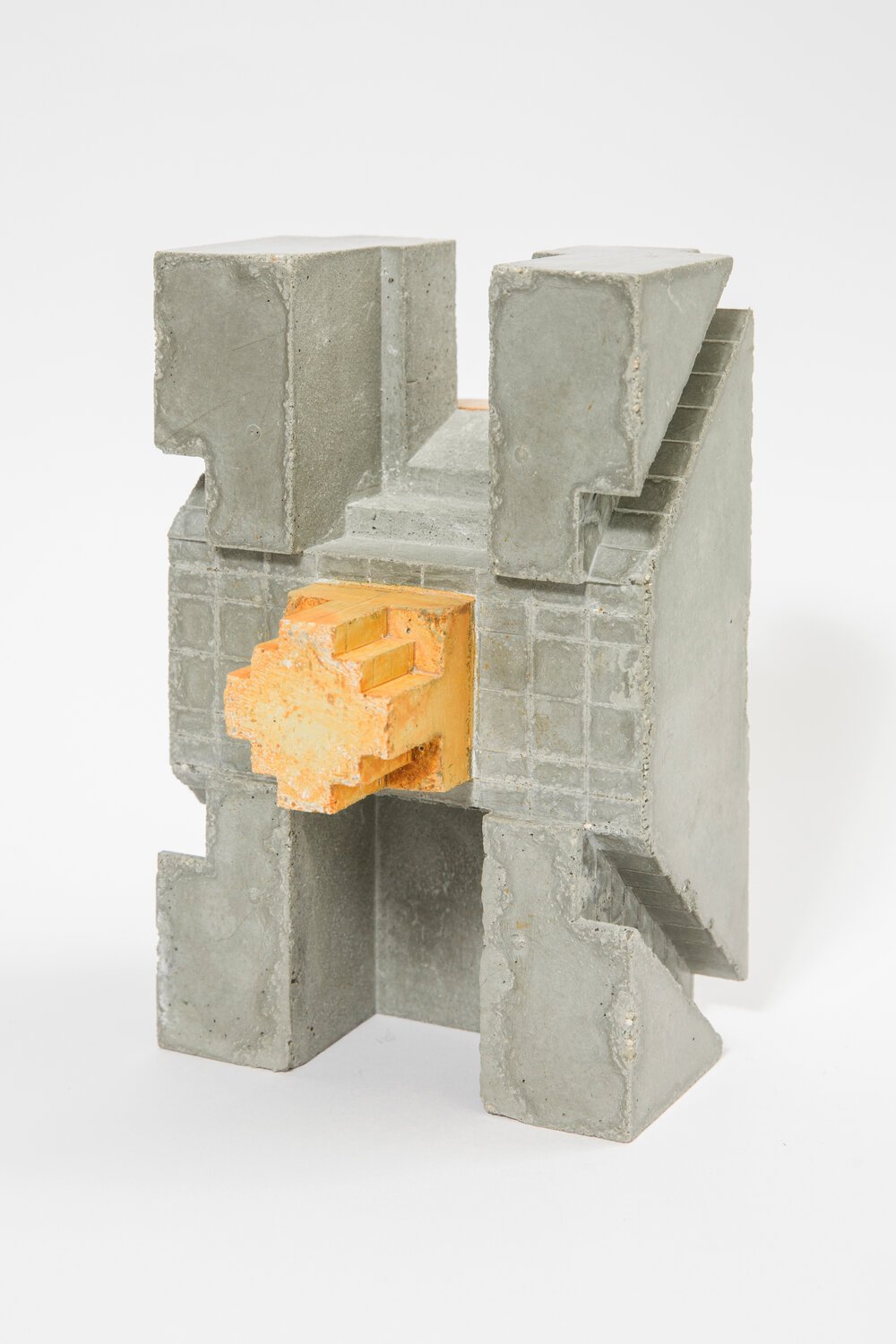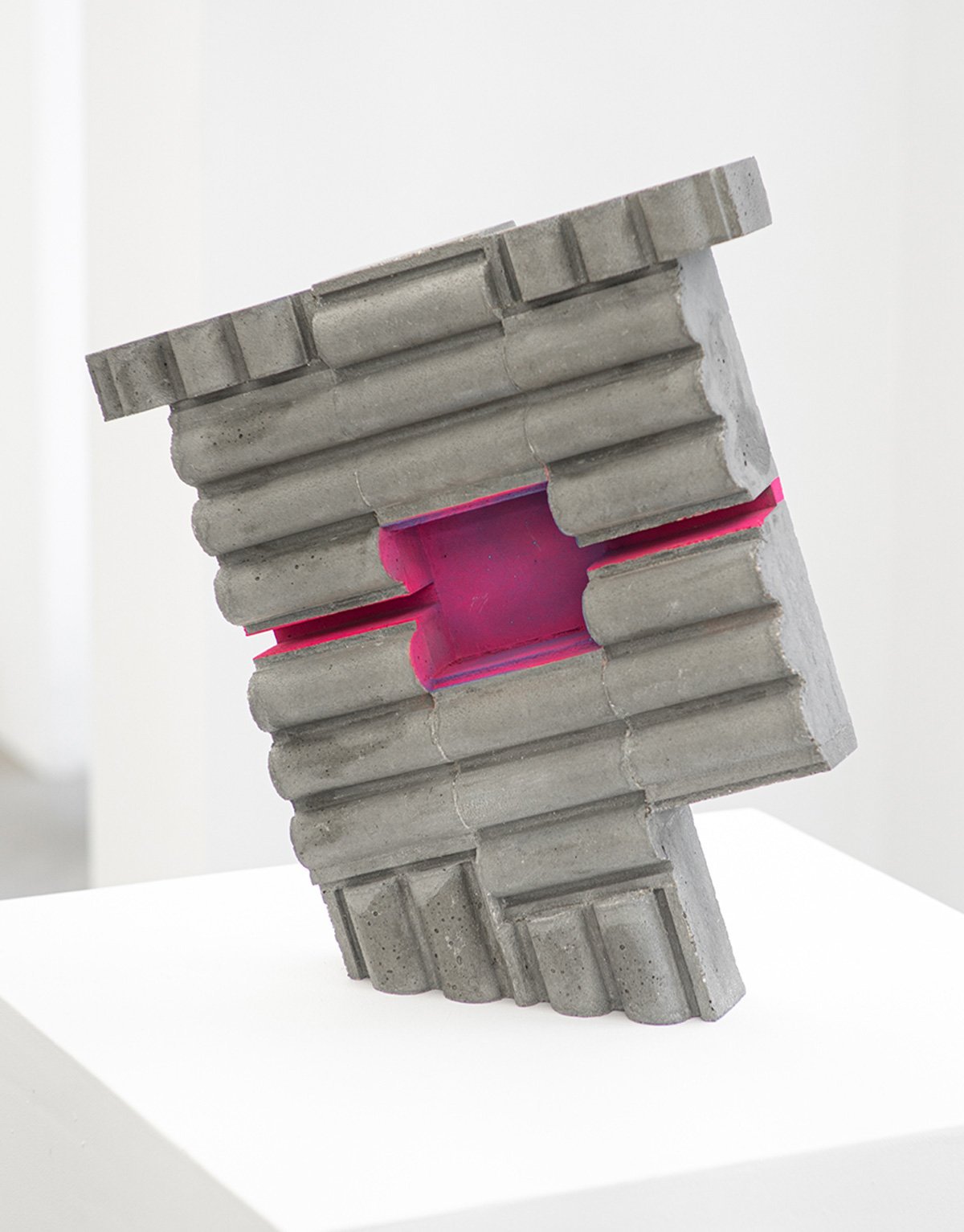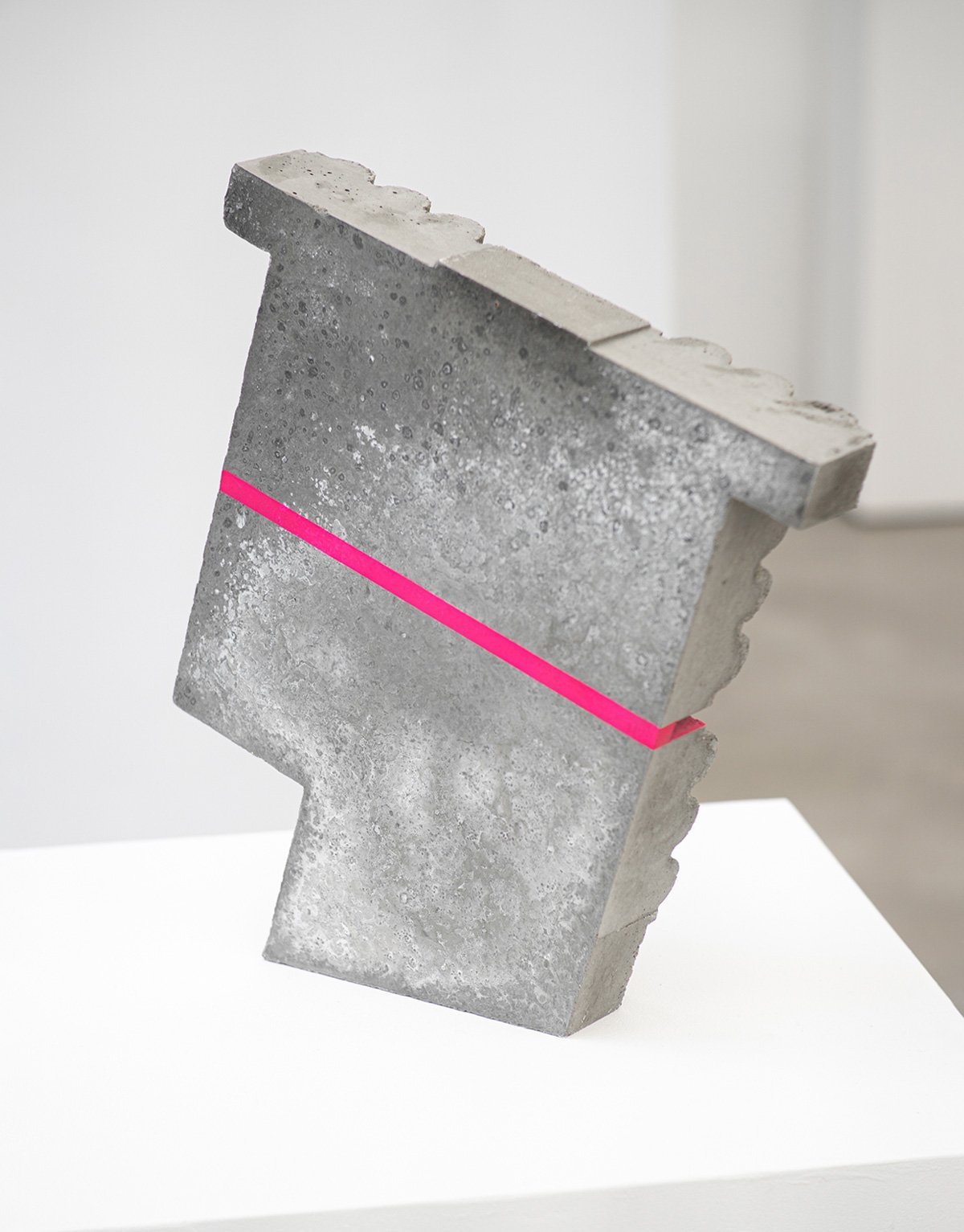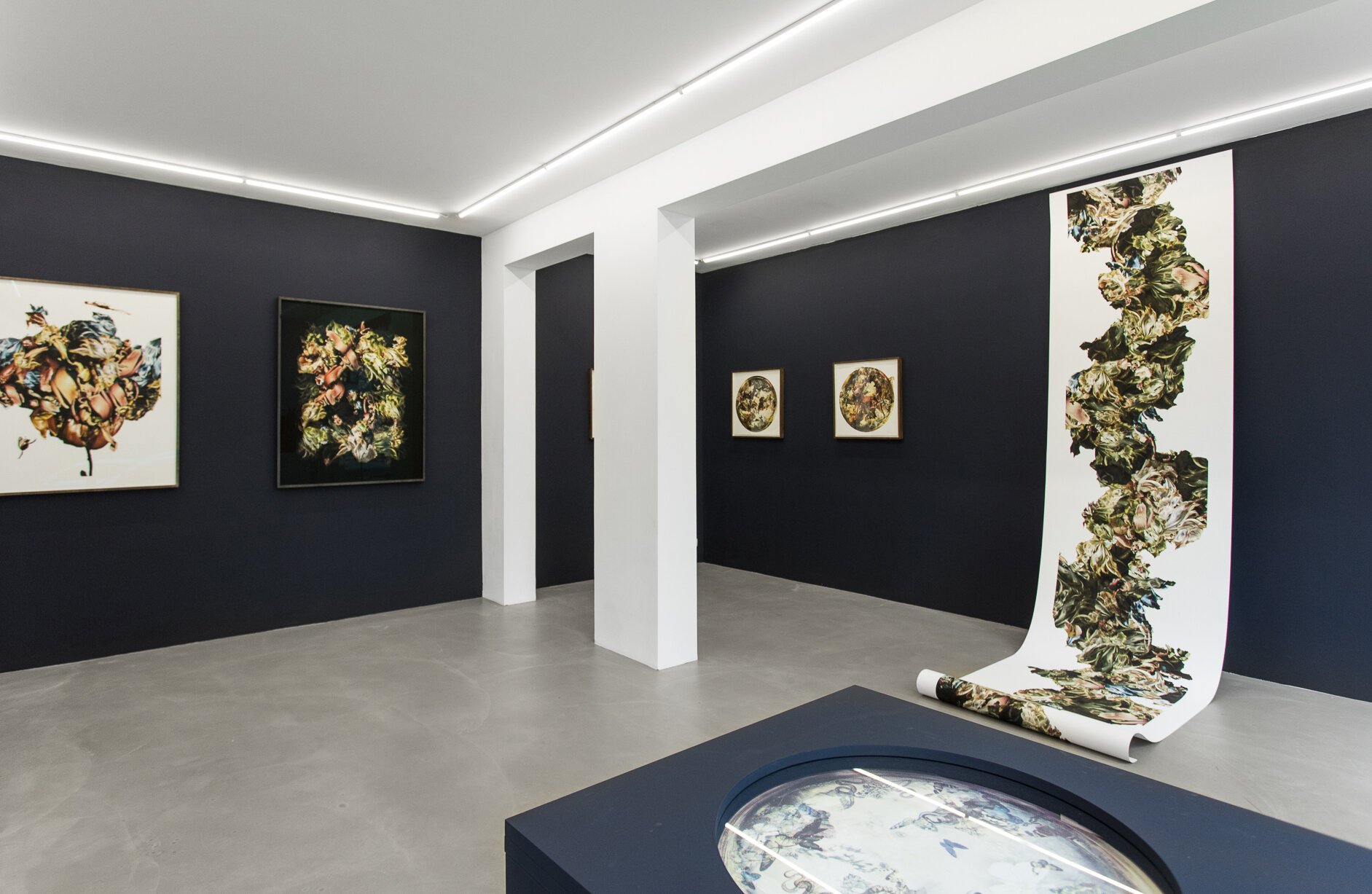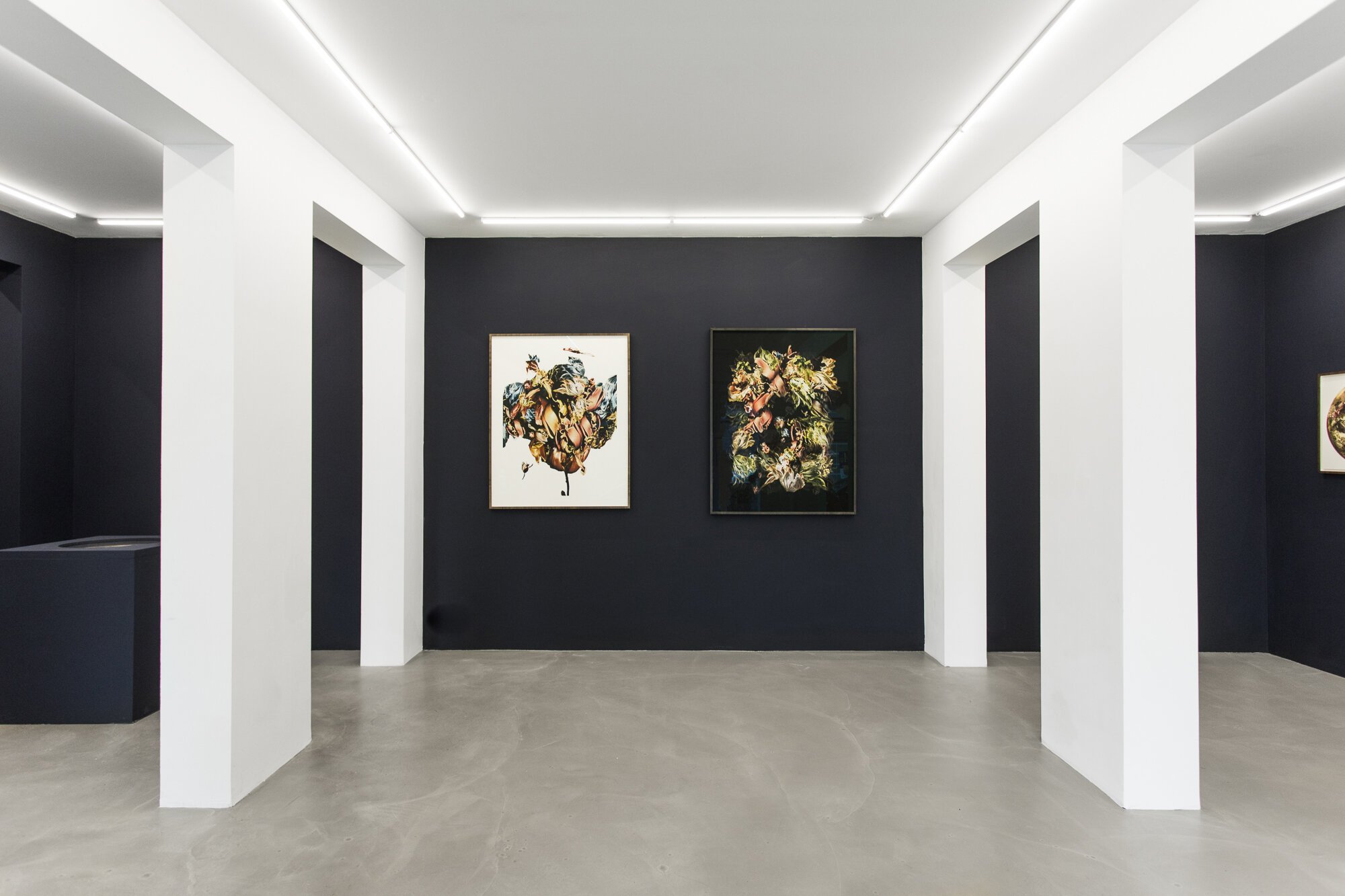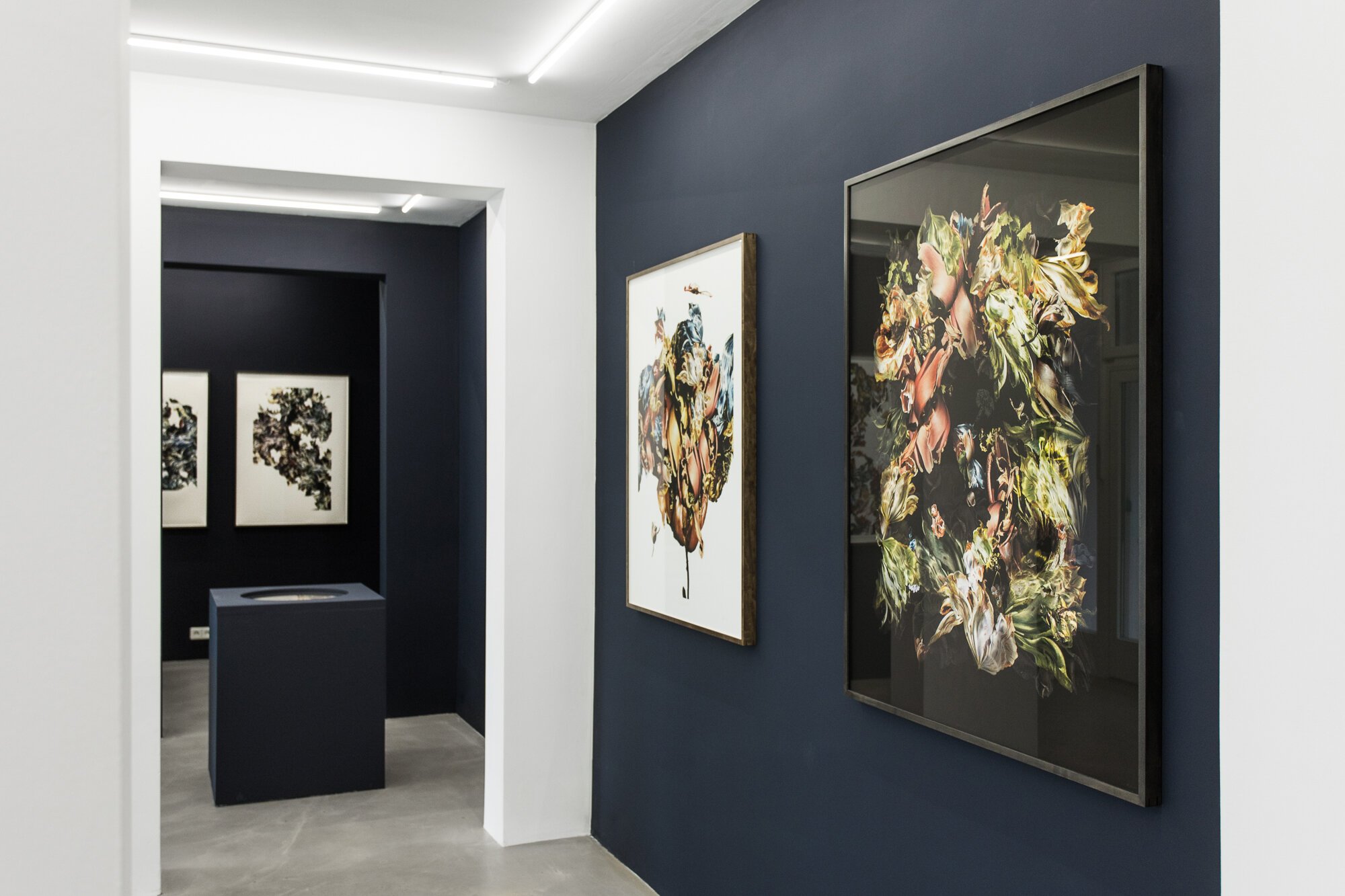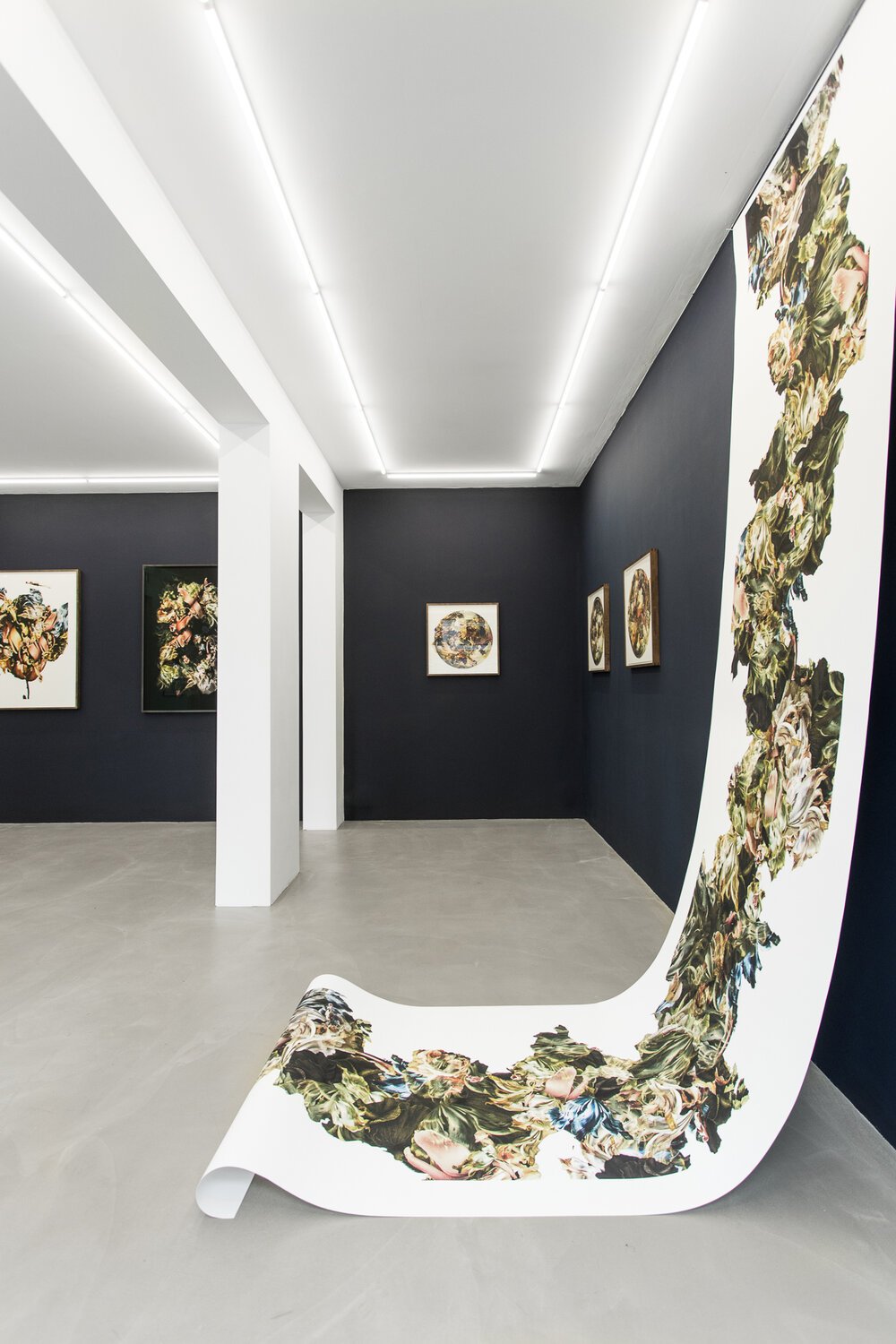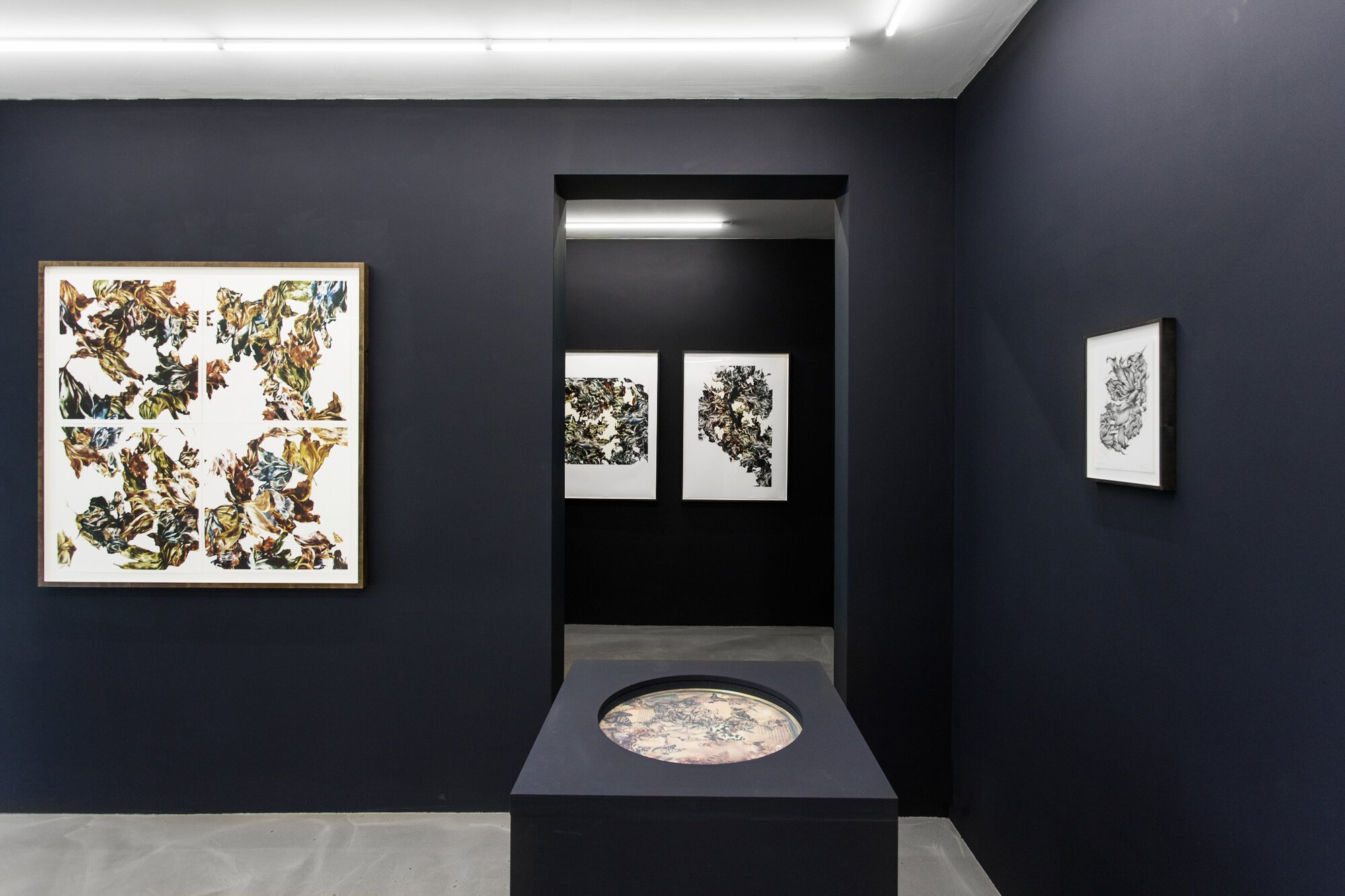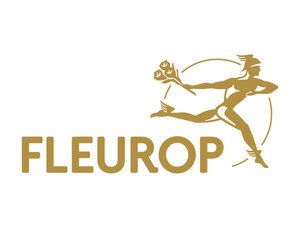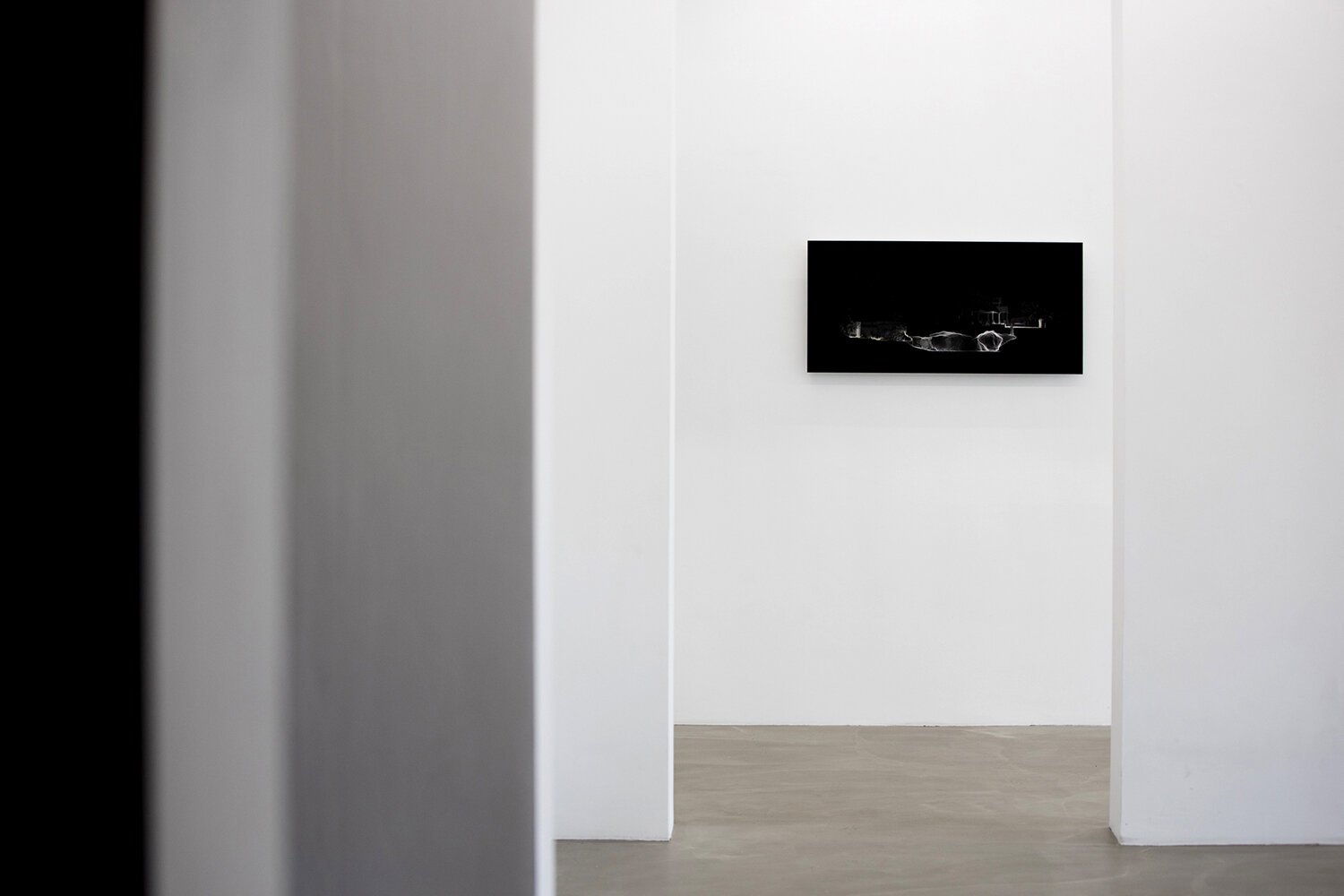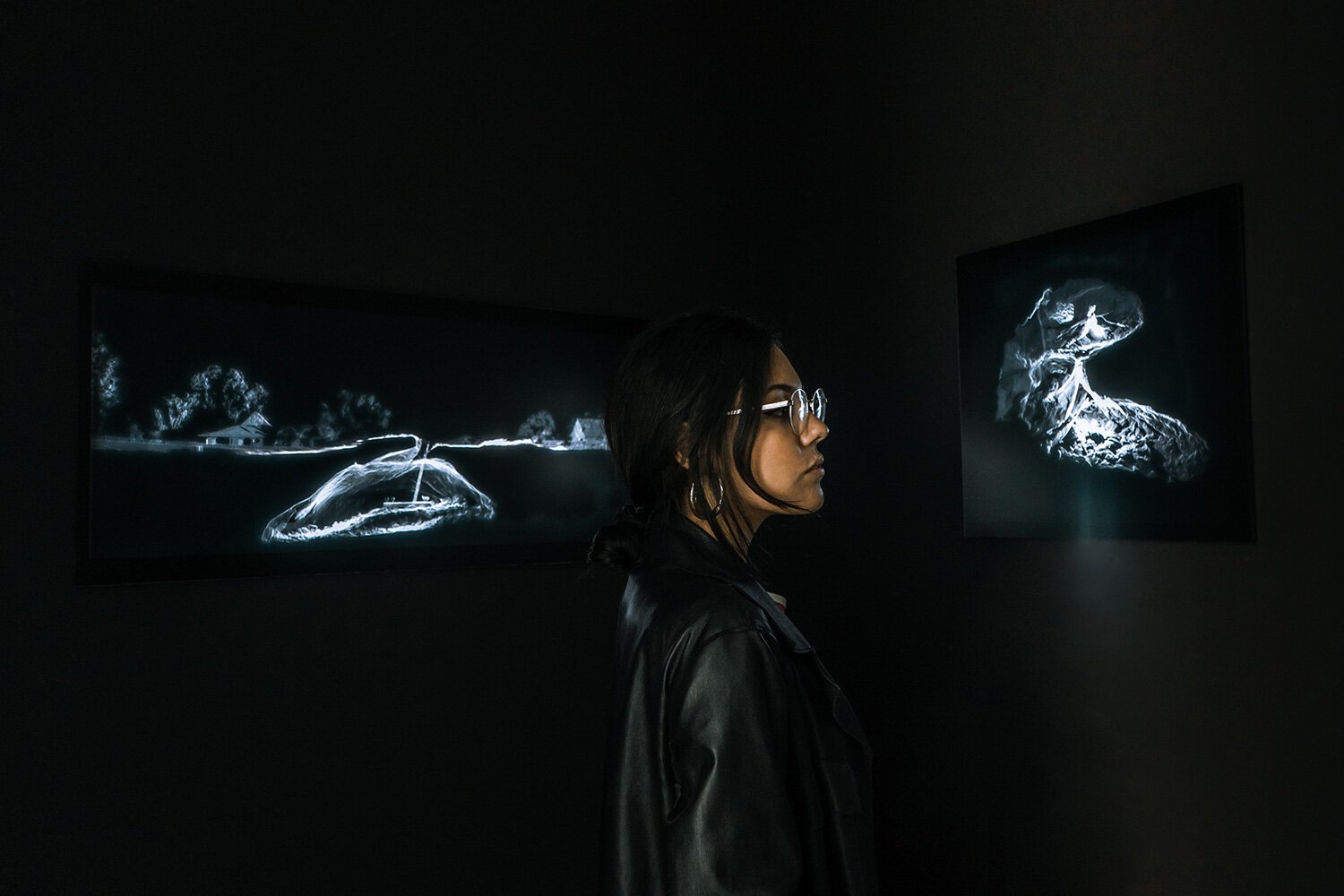Exhibitions
Upcoming
Previous

Katsutoshi Yuasa: IMAGEMAKER
Cover image Katsutoshi Yuasa, ‘Nature Communications 2’, 2022. Oil-based woodcut on paper
Gallery Weekend Berlin
02.05 - 04.05
Opening hours
Tue - Sat
12:00 - 18:00
Opening reception
Wed 30. April
18:00 - 21:00
Artist talk
Sat 03. May
12:00
Location
BBA Gallery Köpenicker Str 96 10179 Berlin
Katsutoshi Yuasa, On the dawn of night and fog #1
Katsutoshi Yuasa, On the dawn of night and fog #2
Katsutoshi Yuasa, On the dawn of night and fog #3
BBA Gallery is pleased to present "Imagemaker," a solo exhibition showcasing the exceptional printmaking of Katsutoshi Yuasa. Yuasa's work transcends the conventional role of print as mere reproduction, elevating it to a distinct image medium. He challenges the relative lack of critical discourse around print compared to photography and painting, suggesting this stems from its perceived absence of inherent philosophy. For Yuasa, printmaking is not simply a technical skill or tradition; it is a unique way of visualising and symbolising the world, akin to creating a printing plate from reality itself. This perspective emphasises the medium's capacity to engage with sight, perception, and memory, mirroring the brain's processes of input and output.
Yuasa's meticulous woodcut technique confronts the immediacy of contemporary photography, transforming captured moments into meticulously crafted, static images. His prints, deceptively photographic at first glance, are the product of an intensely laborious and "reversed engineering" process. This deliberate slowing of image creation invites contemplation on our relationship with time and nature, and the deluge of digital and physical imagery that saturates our world.
Furthermore, Yuasa explores the indirect nature of printmaking, highlighting its ability to capture chance occurrences and incorporate them into artistic expression. He argues that our perception is shaped by past experiences and environmental influences, making the printing plate a representation of the past adapted to the present. In this light, printmaking becomes a visualisation of memory, a medium bridging past and present. Yuasa believes that viewing print as an image medium raises profound philosophical questions about our existence and the purpose of its innovation—to communicate vital ideas to a broad audience. Ultimately, his work reflects on humanity's precarious relationship with nature and the urgent need to contemplate our legacy for future generations.
Through his masterful woodcuts, Yuasa explores themes of balance and environmental consciousness, prompting viewers to reconsider our impact on the natural world.
About the Artist:
Katsutoshi Yuasa (b. 1978, Japan) is a printmaker whose work investigates the essence of photography through the discipline of woodcut. He holds an MA in Printmaking from the Royal College of Art, London, and has exhibited globally, including solo shows at Lawrence Art Center, Kansas, and Gallery YUKI-SIS, Tokyo. His work is held in prestigious collections such as the Victoria & Albert Museum and the Museum of Contemporary Art Leipzig. Yuasa lives and works in Kanagawa prefecture and lectures at Tama Art University. He has also completed residencies at institutions including Graphic Studio Dublin, Cité Internationale des Arts, and Kala Art Institute.
Katsutoshi Yuasa, Between man and matter #3
Katsutoshi Yuasa, It’s witten in the stars

Markus Rock: The Flood
Cover image Markus Rock, ‘Business Trip‘, 2021. Photograph
Opening hours
Tue - Sat
12:00 - 18:00
Opening reception
Fri 28. February
18:00 - 21:00
Artist talk
Sat 01. March
12:00
Monat der Fotografie Opening
Sat 15. March
18:00 - 21:00
Location
BBA Gallery Köpenicker Str 96 10179 Berlin
Markus Rock’s solo exhibition The Flood at BBA Gallery is a striking exploration of water as both a life-giving and destructive force. Captured in the summer of 2021, shortly before and during the catastrophic flooding in Germany’s Ahr Valley, the series balances themes of existential threat with an unwavering celebration of joie de vivre.
While the timing and title suggest an ecological commentary, Rock’s focus lies in the defiant enjoyment of life. Water, ever-changing in its form and meaning, becomes both a subject and a medium—at times appearing hard and solid, trapping bodies as if cast in acrylic, then fluid and soft, dissolving contours into abstraction. Elsewhere, it fractures and fragments into restless, flickering structures.
Presented as part of the Monat der Fotografie OFF-Berlin, The Flood invites viewers to confront the precarious balance of life, to embrace both its light and its shadows, and ultimately, to revel in its unyielding vibrancy.
Part of

BBA MPB Award - Perspectives in Diversity
Cover image Norberto Pezzotta, ‘Proudly out of shape’, 2024. Photograph
Opening hours
Tue - Sat
12:00 - 18:00
Exhibiting photographers
Willi Dorner / Nora Obergeschwandner / Norberto Pezzotta
Opening reception
Fri 28. February
18:00 - 21:00
Artist Talks
Sat 01. March
12:00
Monat der Fotografie Opening
Sat 15. March
18:00 - 21:00
Location
BBA Gallery Köpenicker Str 96 10179 Berlin
Featured as part of the Monat der Fotografie-Off Berlin 2025 festival, the BBA MPB Award: Perspectives in Diversity exhibition celebrates artistic excellence through the lens of diversity, bringing together three distinct voices—Willi Dorner (Austria), Nora Obergeschwandner (Austria), and Norberto Pezzotta (Italy). Their works explore the intersections of identity, urban transformation, human intimacy, and evolving perceptions of beauty, offering a dynamic dialogue on contemporary society.
Willi Dorner’s practice traverses the realms of performance and visual arts, engaging with urban landscapes to examine how architecture and identity intertwine. Nora Obergeschwandner’s photographic series In Between presents a poignant exploration of human relationships, intimacy, and attachment. Rooted in personal experience, the project navigates the emotional landscapes of love, vulnerability, and self-discovery. Norberto Pezzotta challenges conventional aesthetics with Augmented Unreality, a project interrogating beauty in the age of artificial intelligence.
Together, these artists offer a multifaceted exploration of diversity—not only in representation but also in artistic approach and conceptual depth. BBA MPB Award: Perspectives in Diversity invites viewers to engage with themes of transformation, emotional depth, and the evolving narratives of human identity in an era of rapid change.
An official sponsor of the BBA Photography Prize 2024, MPB, presented the MPB Award for the third time in a row. Under the theme “Diversity”, one of the brand core values, 3 of the nominees are presented. The ongoing relationship between BBA and MPB highlights their missions to support photographers in every stage of their careers.
Nora Obergeschwandner
Norberto Pezzotta
Willi Dorner
Sponsored by MPB
MPB transforms the way that people buy, sell and trade in photo and video gear. The world’s largest online platform for used photography and videography equipment, MPB is a destination for everyone, whether you’ve just discovered your passion for visual storytelling or you’re already a pro.
Part of

BBA at Art Karlsruhe 2025
Opening hour
Thu - Sat
11:00 - 19:00
Sun
11:00 - 18:00
VIP opening (invitation only)
Wed 19. February
11:00
Location
Halle 01, Stand H1/C02,
Messe Karlsruhe,
Messeallee 1, 76287 Rheinstetten
BBA is delighted to be attending Art Karlsruhe 2025. We will be presenting the work of 3 of our artists: Vincent van Gaalen, Rhys Himsworth, and Giulietta Coates.
Dutch photographer Vincent van Gaalen travels to the darkest areas of Europe where nocturnal darkness remains untouched by artificial light pollution. Through his meticulous photography, van Gaalen explores the age-old tension between human creation and the autonomy of nature.
In his ongoing project Absence (started in 2020), van Gaalen ventures into Europe's last truly dark regions to capture a world where humanity is absent. Working alone in these landscapes, lit only by the moon and stars, he photographs the subtle interplay of natural elements like leaves, stones, water, and air. This nocturnal darkness enhances contrasts, transforms outlines, and shifts perception from reason to imagination. The barely visible landscapes become hauntingly tangible, highlighting humanity’s vulnerability amidst nature's enduring autonomy.
Vincent van Gaalen ‘Absence_Norway_Morkridsdalen’, 2024
Rhys Himsworth is an artist working at the junction of analogue and digital media. His paintings, prints, sculptures, photographs and multimedia installations attempt to form a discourse around issues of surveillance, authorship, the post natural and geopolitical. His work often utilises redundant electronics and e-waste as a material and medium.
For the last decade he has hacked, appropriated, and shredded and re-assembled various electronic and digital devices to create works and installations that blur the physical and discarnate; documenting a period in history that marks the transition from a temporal orientated experience of the world to an online one.
Rhys Himsworth ‘Topographies of Decline #09’, 2025
Coates’ landscape photographs explore the tension between loss and beauty, dread and longing. Her work evokes a nostalgia not for something lost but for what never was, reflecting on the inaccessibility of the grandiose landscapes that surround her. She describes these landscapes as "utterly at a distance," creating a void that feels like a "death space," where connection and intimacy remain forever out of reach.
Through intimate “conversations” with individual motifs—rocks, pools of water, wooden stumps—she crafts allegories for our enigmatic relationship with beauty and nature in the face of mortality. For Coates, beauty itself is a reminder of death’s presence, where the creative impulse intertwines with our impermanence.
Giulietta Coates, ‘Petite Promesse #6 (les Condamines)’, 2023

Patty Carroll: Domestic Demise
Cover image Patty Carroll, ‘Mad Mauve’, 2018. Photograph
Special extended viewing:
February 18 - 21 2025
General opening hours
Tue - Sat
12:00 - 18:00
Patty Carroll, the winner of the BBA Photography Prize 2023, brings her celebrated series Anonymous Women: Domestic Demise to BBA Gallery in Berlin. This solo exhibition showcases Carroll’s distinctive style, which blends humour, poignant social commentary, and meticulous attention to detail. Her work has been exhibited globally, and now Carroll’s powerful visual narratives make their debut in Berlin.
In Domestic Demise, Carroll delves into the intricate relationship between a woman's identity and her domestic space. Each image in the series reimagines interior settings filled with an overwhelming array of decor and objects, often engulfing a solitary female figure. Hidden within her environment, the figure represents both the victim and the creator of her own domestic identity, exploring themes of societal expectation, obsession, and artifice.
Carroll’s imagery is inspired by her upbringing in suburban Chicago and influenced by sources ranging from traditional still-life paintings to classic films of the 1950s and 60s. Through elaborately constructed scenes, Carroll sheds light on the unseen labor of homemakers, while offering a satirical critique of the ideal of domestic perfection. These works, which take weeks of preparation and feature life-sized sets meticulously arranged by the artist, invite viewers to engage with the humorous yet darker undertones of women’s roles in society.
Patty Carroll’s Anonymous Women: Domestic Demise is a visually striking exploration of the intersection of identity, consumer culture, and domestic life, revealing the tension between societal aspirations and the personal realities of women.
Striped Books, 2018
Archival Digital Inkjet Print
Red Red Wine, 2021
Archival Digital Inkjet Print
Fun and Games, 2022
Archival Digital Inkjet Print

László Máthé: Paradox
Cover image László Máthé, ‘The Little Prince’, 2021.
General opening hours
Tue - Sat
12:00 - 18:00
László Máthé, the winner of the BBA Artist Prize 2023, brings his thought-provoking paintings to his first Solo Exhibition in Germany at BBA Gallery in Berlin. Originally from Romania and now based in Germany, László Máthé graduated from the University of Art and Design, Cluj-Napoca, in 2015. This solo exhibition marks a milestone in his artistic career, presenting works from his Artist Prize-winning pieces to his most recent explorations.
In Paradox, László Máthé delves into the duality of human existence, expressing the psychological tension between opposing forces. He uses painting as a means to understand and translate human experiences, focusing on the invisible forces that shape our lives—forces that push us to evolve or disappear, much like electrons circling a nucleus. For László Máthé, life’s paradox lies in the coexistence of pain and transformation, which he channels into his work with raw emotional depth.
Drawing on simple subjects from everyday life, László Máthé uses them as metaphors for complex psychological landscapes. His piece Moonglasses exemplifies this approach, challenging viewers to look beyond the surface and confront their inner realities. László Máthé’s artistic vision is deeply influenced by Hans Prinzhorn’s collection of works by mentally ill patients, sparking his fascination with human anatomy and the subconscious mind. His works, such as The Little Prince and Trauma, resonate with themes of healing, playfulness, and the paradoxical nature of freedom.
Through his art, László Máthé creates a mystical space where the subconscious can roam freely, offering viewers an experience that goes beyond mere visual interpretation. Paradox invites the audience to feel rather than to rationalize, as László Máthé’s works explore the intricacies of the human psyche and the constant interplay of opposites in our existence.
Supported by
Trauma, 2022
Oil on Canvas
Suds, 2024
Oil on Canvas
Soap Bubble, 2024
Oil on Canvas

Echoes of tomorrow. Yes, today!
Cover image WHYIXD, ‘Heaven Bloom’, 2024.
Installation
Opening hours
Tue - Sat
12:00 - 18:00
Exhibiting artists
Verena Bachl / Rhys Himsworth / Chirag Jindal / Sven Windzsus / WHYIXD
EN
BBA Gallery presents "echoes of tomorrow. yes, today!" during Berlin Art Week 2024. The title of the exhibition plays with the juxtaposition of future resonances and the awareness of the present. It conveys a sense of immediacy and relevance. The "yes, today!" emphasises excitement and urgency and invites viewers to actively engage with the themes of memory, imagination and the evolving technological and media landscape. This title is ambiguous and encourages us to utilise the potential of today to understand yesterday, while hinting at the visions of tomorrow.
Featuring five pioneering artists from its pool who deal with the two major themes of memory and imagination, Verena Bachl (DE), Rhys Himsworth (UK), Chirag Jindal (NZ), Sven Windszus (DE) and artist collective WHYIXD (TW) present their latest artworks. In doing so, we explore the central question of how memory and imagination develop in a diverse landscape characterised by art, technology and media and how they are interwoven.
There are many artists who are curious about technology and the different media outlets available to them, and so they should be. Artists are experimental, clever and culturally hack tech and media together to produce a creative outcome. However, who is really doing it beyond the overeasy conceptualisation or taking it beyond a tech thrill. And by this, the art is tested by its ability to stand further than the short life of any given tech hype. The artists we are exhibiting at BBA Gallery defy this in a provocative way, they question our relationship with ourselves, with nature. Both imagination and memory are fundamental aspects of human cognition that have been significantly influenced by technology and media.
Using media and technology to blur boundaries, bend genres, document the unseen, taking the art to mysterious uncharted realms where imagination and memory interlace one another. These artists are using collective and personal memory to trigger imagination. Imagination, when recalled repeatedly, can internally serve as vivid or distorted memory, crystallising in the form of a personal myth or used to bring new perspectives to our collective thinking. Ambitious and skilled usage of technological tools, with adventurous orientation over the media landscape. These artists and their works put the brakes on our attention seeking economy and society. They stand in stasis and test the rythm of time.
DE
Anlässlich der Berlin Art Week 2024 präsentiert die BBA Gallery ihre Gruppenausstellung "echoes of tomorrow. yes, today!". Der Titel der Ausstellung spielt mit der Gegenüberstellung von Zukunftsresonanzen und dem Bewusstsein der Gegenwart; er vermittelt ein Gefühl von Aktualität und Relevanz. Das "Ja, heute!" unterstreicht die Aufregung sowie Dringlichkeit und lädt den Rezipient*in ein, sich aktiv mit den Aspekten von Erinnerung, Imagination und der sich entwickelnden Technologie- und Medienlandschaft zu befassen. Der mehrdeutige Titel ermutigt, das gegenwärtige Potenzial zu nutzen, um das Vergangene zu verstehen, gleichzeitig jedoch auch die Visionen von morgen aufzuzeigen.
Verena Bachl (DE), Rhys Himsworth (UK), Chirag Jindal (NZ), Sven Windszus (DE) und das Künstlerkollektiv, WHYIXD (TWN) stellen ihre neuesten Arbeiten vor und zeigen wegweisende Werke aus ihrem Repertoire, die sich den beiden großen Themen Erinnerung und Imagination widmen. Dabei gehen sie der zentralen Frage nach, wie sich Erinnerung und Imagination in einer vielfältigen, von Kunst, Technologie und Medien geprägten Landschaft entwickeln und wie sie miteinander verwoben sind.
Viele Künstler*innen sind zurecht sowohl neugierig als auch wissbegierig auf die gegenwärtige Technologie und Medien, die ihnen zur Verfügung stehen.
Doch wer schafft es wirklich über die allzu simple Konzeptualisierung oder über den technischen Nervenkitzel hinauszuwachsen? Die Aufgabe der Kunst besteht darin, die Kurzlebigkeit des jeweiligen Technik-Hypes zu überdauern. Die in der BBA Gallery ausgestellten Künstler*innen widersetzen sich dem auf provokante Weise, sie hinterfragen unsere Beziehung zu uns selbst und die zur Umwelt. Sowohl die Vorstellungskraft als auch die Erinnerung sind grundlegende Aspekte der menschlichen Wahrnehmung, die durch Technologie und Medien erheblich beeinflusst wurden.
Medien und Technologie werden eingesetzt, um Grenzen zu verwischen, Genres zu deformieren, das Unsichtbare zu dokumentieren und die Kunst in geheimnisvolle, unerforschte Bereiche zu lenken, in denen sich Vorstellungskraft und Erinnerung gegenseitig durchdringen. Die genannten Künstler*innen nutzen das kollektive und persönliche Gedächtnis zugunsten der angeregten Irrealität. Unsere Vorstellungskraft kann bei wiederholten Abruf als lebendige oder verzerrte Erinnerung dienen, sich in Form eines persönlichen Glaubensatzes verfestigen oder genutzt werden, um neue Perspektiven in unser kollektives Denken zu integrieren. Ambitionierter und geschickter Umgang mit technologischen Werkzeugen, mit gewagter Orientierung an der Medienwelt; diese Künstler*innen und ihre Werke bremsen unsere aufmerksamkeits-bedürftige Wirtschaft und Gesellschaft aus. Sie bleiben im Stillstand und testen das Metrum der Zeit.
Media partner
Verena Bachl, ‘Everything will be fine’, 2022,
500 Insects (gold plated), 100 x 100 x 3 cm
Rhys Himsworth, ‘Hyperaccumulator 04’, 2024
60 x 75 cm
Chirag Jindal, ‘Stewart’s Cave’, 2021,
Terrestrial LiDAR scan / C-type Print on Aluminum Dibond, 45 x 240 cm
Sven Windszus, ‘Bewegungsapparat’, 2024,
Kinetic media installation
WHYIXD, ‘Heaven Bloom’, 2024
Installation

Surreal Urbanities: Reimagined Realities
Surreal Urbanities: Reimagined Realities brings together five international artists from the BBA Artist Prize 2024 finalists to offer a unique perspective that bridges the realms of surrealism and urban reality.
Exploring the depths of imagination and fantasy, Anikó Boda and Nogang Lee offer captivating paintings. Whereas, in the urban and real life section presents familiar realities, Trevor Burgess, Benet Dalmau Alsina, and Luke Wateridge present their paintings and photography.
Curated by Jury member Mario Bermel, the exhibition challenges us to see the world through multiple lenses, offering a rich and varied narrative that speaks to the complexity of human experience.
DE
Die Ausstellung Surreal Urbanities: Reimagined Realities vereint fünf internationale KünstlerInnen, die zu den FinalistInnen des BBA Artist Prize 2024 gehören. Sie bietet eine einzigartige Perspektive, die die Welten des Surrealismus und der urbanen Realität miteinander verbindet.
Anikó Boda und Nogang Lee erforschen die Tiefen der Vorstellungskraft und Fantasie durch ihre Gemälde. Im Bereich der urbanen und realen Lebenswelten präsentieren Trevor Burgess, Benet Dalmau Alsina und Luke Wateridge ihre Gemälde und Fotografien, die vertraute Realitäten darstellen.
Kuratiert von Jury Mitglied Mario Bermel, lädt die Ausstellung die BesucherInnen ein, sich mit dem Zusammenspiel von Fantastischem und Realem auseinanderzusetzen. Die Ausstellung fordert uns heraus, die Welt durch verschiedene Blickwinkel zu betrachten und bietet eine reichhaltige und vielfältige Erzählung, die die Komplexität der menschlichen Erfahrung widerspiegelt.

Nature's Veil - Group exhibition
Cover image Oscar Contreras Rojas‘Battaglia Assistita’ 2019,
Oil on Canvas, 200 x 160 cm
Opening reception
Saturday 25 May
18:00 - 21:00
Artist Talk
Saturday 22 June
16:00
Opening hours
Tue - Sat
12:00 - 18:00
Exhibiting artists
Juheon Cho / Beate Köhne
Susanne Piotter / Oscar Contreras Rojas
Adonis Stoantzikis
A veil always conceals what actually lies behind it; at best, it allows us to surmise what appears on the surface. The exhibition ‘Nature's Veil’ presents the works of five different artists, each of whom explore the complicated relationship between humans and nature through paintings, drawings or sculptures.
The title ‘Nature's Veil’ suggests a rather metaphorical examination of nature, the origin of which - like a fleeting perception - appears to be veiled. The exhibited works of art challenge the viewer: what do we perceive with our eyes, how do we really explore what is initially concealed by preconceived ideas, cultural influences or personal bias. A veil often also conveys a sense of mystery, of intrigue, and is worth discovering.
About the exhibiting artists
In Juheon Cho's artistic world, reflections on her daily experiences as an outsider in Berlin are thematised and deepened. By merging traditional Korean painting techniques with the help of contemporary forms of expression, Cho captures the essence of nature, identity and memory are portrayed in a playful way. Her drawing project ‘@project.dear.diary’ serves as a kind of diary of her feelings and invites viewers to embark on a journey of self-discovery and cultural exploration.
In her creative processes, Beate Köhne immerses herself in a flowing world of images; every stroke also contains a movement. Even when echoes of nature appear - e.g. a twisted leaf, a twig or a petal - the lines and shapes remain both organic and shapeless. The true source of movement in her paintings remains elusive, possibly capturing an ever-changing dynamic of life.
Susanne Piotter's concrete objects appear as if they originate from an unknown landscape. They invite the viewer to approach the scene from different perspectives. The viewer's perspective and perception serve as factors that stimulate our imagination. On the one hand, they are far removed from what we generally define as nature, but on the other hand, they may depict something that could remain of nature when man is no more.
Each painting by Oscar Contreras Rojas gradually unfolds a centre of gravity that animates the scenery and recalls the magnetic ebb and flow of a Venetian lagoon, an echo of the artist's earlier studies. In the process, he transforms matter by reshaping every facet of nature according to his own ideas, creating bodies that vibrate, wander, settle and finally merge into the collective consciousness. Order and rhythm underlie his works. These elements undergo a metamorphosis and adapt to their surroundings, depending on the viewer's perspective.
Adonis Stoantzikis' collection of sculptures initially explores human's fascination with abstract forms with anthropomorphic and zoomorphic features. It suggests how the early representatives of humanity developed different narratives by simply observing their surroundings. We humans often interpret forms as animals or humans, even if they remain abstract.

Vincent van Gaalen - Shades of the Night
Image: Absence_France_Haute Corse, 2023
Finnasge:
11. May from 18:00 - 21:00
Location:
BBA Gallery,
Köpenicker Str. 96, 10179 Berlin
Duration:
23 Mar - 11 May 2024
Open:
Tue - Sat from 12:00 - 18:00
BBA Gallery presents the debut solo exhibition of the Dutch artist Vincent van Gaalen: “Shades of the Night”. In the ongoing series “Absence”, van Gaalen's artistic photographs of natural landscapes in the light of the full moon emphasise the importance of our unique ecosystems, the preservation of which is evermore threatened. To raise awareness of our threatened environment, the exhibition opens on Saturday 23. March on the occasion of Earth Hour (from 20:30 - 21:30).
Darkness is disappearing as light pollution within Europe is increasing at an average rate of 6.5% every year. Since 2020, the Dutch artist has been photographing unique panoramas with the simplest of equipment in the most remote areas of Europe. In these dark landscapes, unaffected by light pollution, familiar landscapes seem strangely remote. The landscapes he documents include places in Portugal, Spain, Bosnia-Herzegovina and the Czech Republic.
"Shades of the Night" is a contemplative observation of the centuries-old friction between human urbanisation and the autonomy of nature. The human absence in his motifs invites inner stillness and reflection. Against the backdrop of the current climate crisis, this exhibition can be seen as a silent protest for the preservation of our environment.
Vincent van Gaalen (b. Netherlands) graduated with a degree in Photography from the Royal Academy of Art, The Hague, in 2011. His unique documentations of nature have been part of numerous exhibitions in the Netherlands and now in Germany. In 2022, van Gaalen was awarded a highly-coveted scholarship by the Eye on Nature Foundation, “In the same year, van Gaalen prevailed among thousands of participants in our BBA Photography Prize, where he was awarded the 1st Prize”, say BBA directors Renata Kudlacek and Vishal Shah. A multitude of photographers applied, and the jury board included nine photography experts from a wide variety of countries.
Shades of the Night, exhibition view at BBA Gallery, 2024
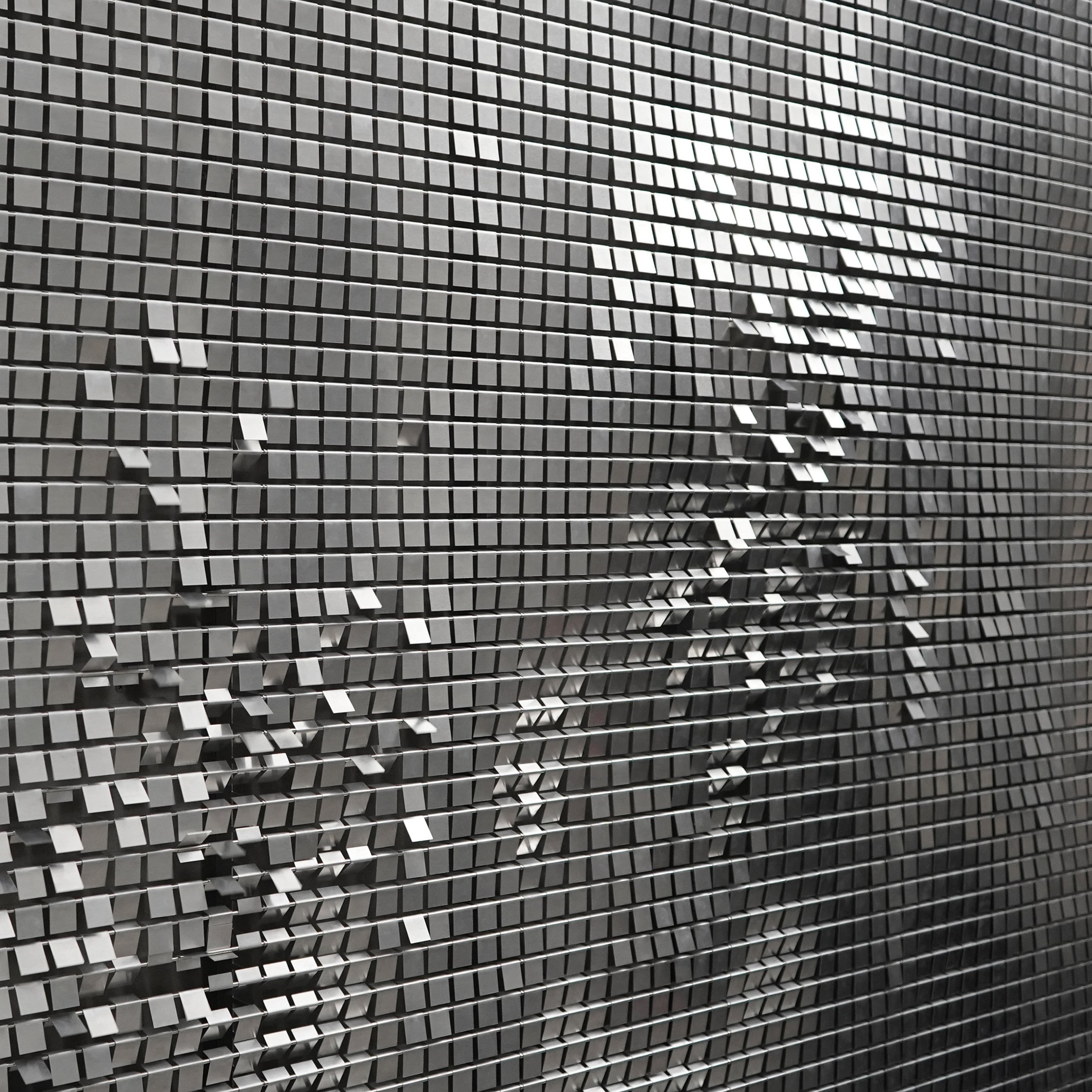
Noise_Media Art
BBA Gallery takes pride in presenting at the new Noise_Media Art fair, in Istanbul, Türkiye. Artworks of Verena Bachl (Germany), Sven Windszus (Germany), Rhys Himsworth (Wales, Germany), and Vishal Shah (Germany). Visit booth B5 at Kadiköy Kent Museum to meet the team and artists.
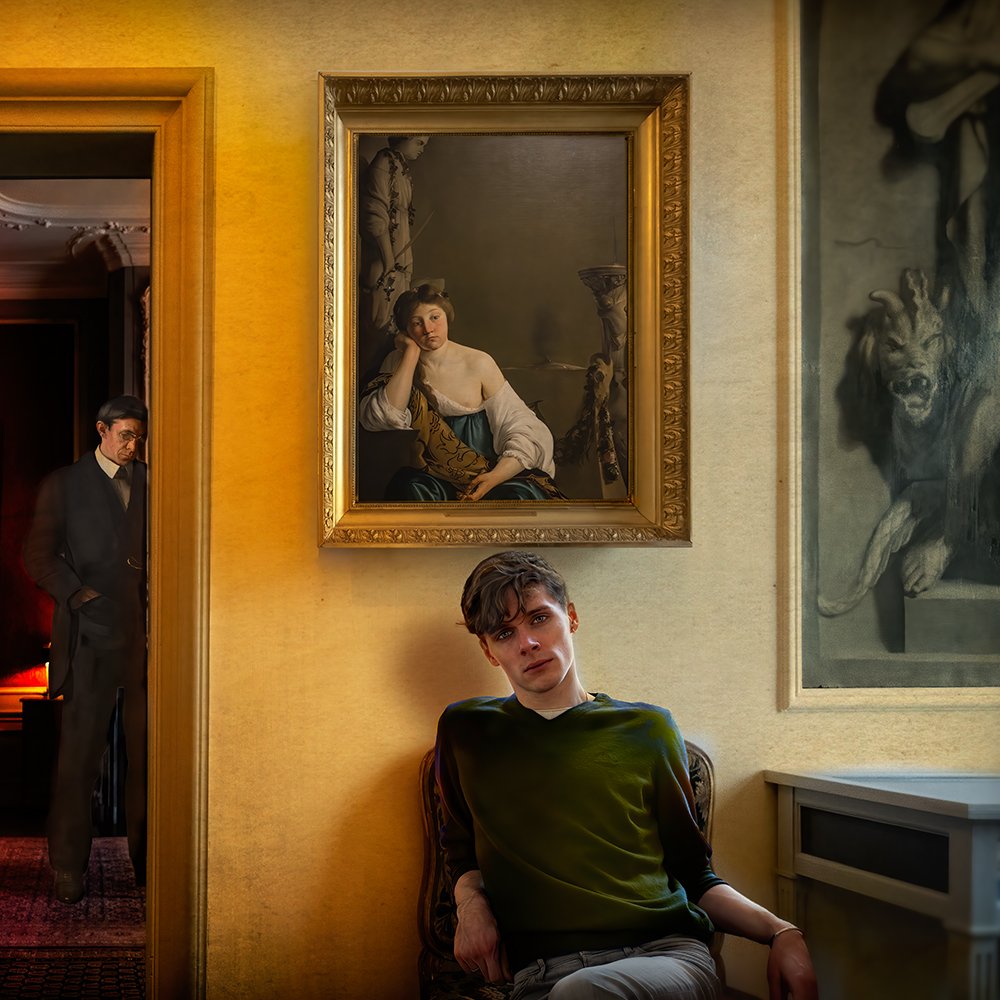
Fran Forman - The Color of Absence
Image: Sebastiaan Sitting
Opening:
Friday 3.11, 18:00 - 21:00
Artist talk
Sunday 5.11, 18:00
Location:
BBA Gallery,
Köpenicker Str. 96, 10179 Berlin
Duration:
4 Nov - 16 Dec 2023
Open
Tue - Sat from 12:00 - 18:00
Cinematic storyteller and American artist Fran Forman constructs visual narratives that articulate the deep loneliness that characterise contemporary society. The staged compositions - from different photographs of objects, locations and people - lay bare the paradox of the digital age: separation despite global interconnectedness. Drawing on Hopper’s social realism, the familiar settings within the photographs isolate their subjects, who themselves are surrounded by an air of fragility. Trapped in their own fantasies, the companionship and kinship they long for is just out of reach.
Each of the photographs is a separate story, immediately personal. Subjects placed in uncertain settings are as elusive as the shadows that surround them, absorbed in their interior lives. The geometric play of light and shadows in the empty spaces suggests stability, refuge and a solid foundation. Despite the allusion to warmth, the subjects grapple with longing and lost kinship. Forman offers hope for escape in the form of portals: a lit window, a mirror, a door left ajar. These ‘escape hatches’ lead the way to reconnecting and forging new relationships in the turmoil of our daily lives.
Forman’s position as part of the baby boomer generation brings a rich understanding of socio-political changes in society to ‘The Color of Absence’. With a degree in sociology and several years spent working as a therapist, Fran Forman has developed an acute psychological sensitivity for the crises that have been steadily gaining ground in America since the 1960s. In her bleak settings, all generations feel the personal effects of growing societal polarisation. Remarkably, the artist readily implements new technological advancements into her practice, with AI as another tool in her inventory.
BBA Gallery discovered Forman through the 2022 BBA Artist Prize shortlist. ‘The Color of Absence’ marks her first solo exhibition in Berlin, Germany.

Art Market Budapest - Art Fair
Tobias Molitor, Image: EU Discount Bag, 2022
Opening:
Thursday 19 Oct
Location:
Fővám tér 11-12, 1093, Budapest, Hungary
Duration:
19 - 22 Oct 2023
Open
Thu - Sun from 11:00 - 19:00
Fri from 11:00 - 21:00
ART MARKET BUDAPEST, established in 2011, is Central and Eastern Europe’s leading international art fair. Designed to give an emphasised presence to fresh and inspiring galleries and artists, BBA Gallery is joining the fair for the first time in 2023. ART MARKET BUDAPEST combines the progressive new generation of artist from the already established West with emerging regions. It includes exhibitors from over 40 countries and 5 continents, and welcomes over 30,000 international visitors through its doors.
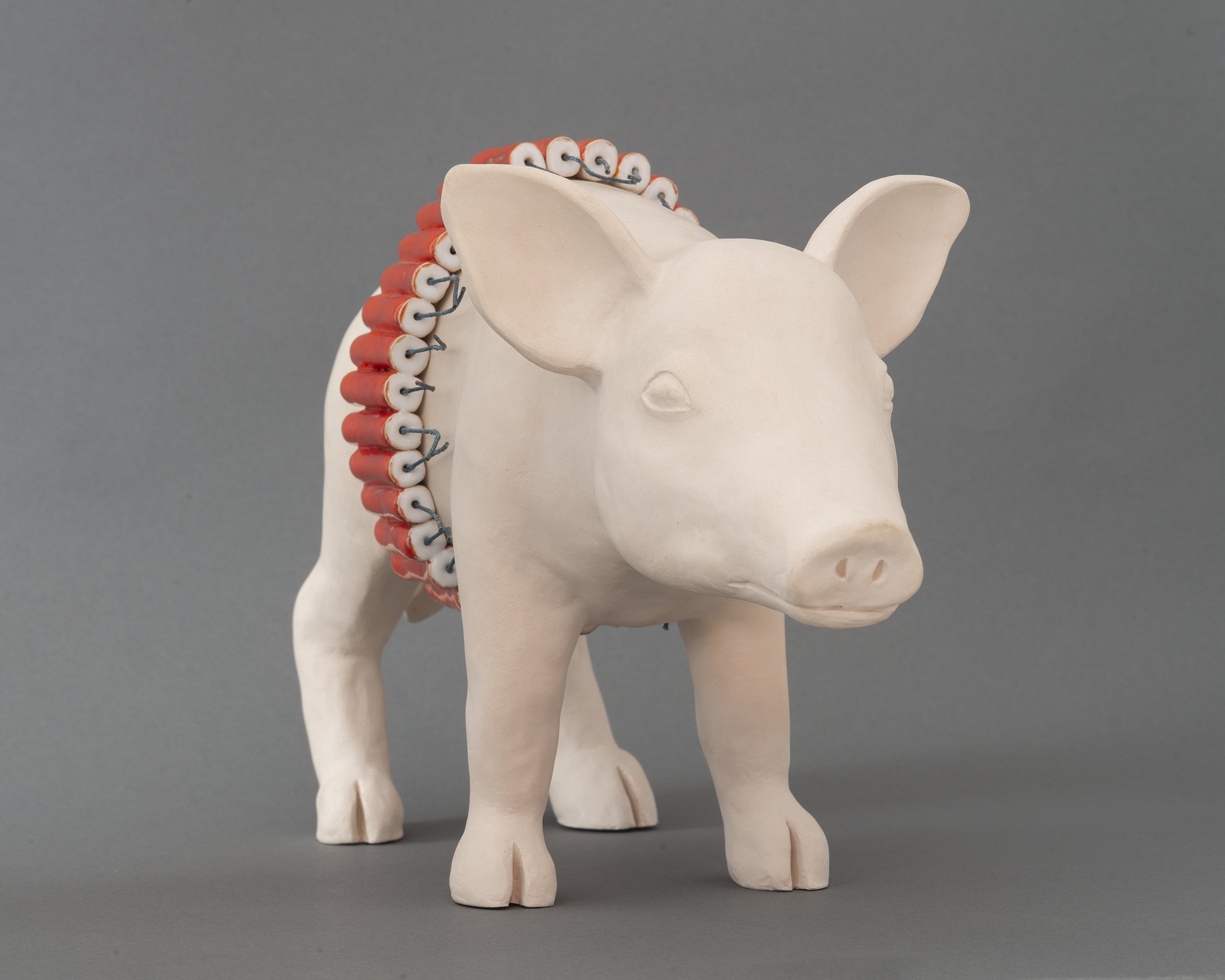
Katarina Kudelova - Burning Bright in the Forest of the Night
Image: Sincères régulations (chevreuil aux bougies)
Artist talk + Finissage
Thursday 26 Oct from 18:00 - 20:30
Location:
BBA Gallery,
Köpenicker Str. 96, 10179 Berlin
Duration:
12 Sep - 27 Oct 2023
Open
Tues - Sat from 12:00 - 18:00
During Berlin Art Week in September 2023, BBA Gallery will be presenting the Slovak artist Katarina Kudelova and her solo exhibition “Burning Bright in the Forest of the Night”. The title of the show is a direct reference to the poem “The Tyger” by William Blake from 1794 and its concept of opposition.
As the 1st Prize winner of the BBA Artist Prize 2022 group exhibition, Katarina Kudelova blew the jury away with her ceramic sculptures and firecracker-based performance pieces. Kudelova’s explosive practice addresses major themes of transience, death and the human-animal relationship. Dangerous, complex animal sculptures and large-scale installations conceal danger and reveal both contemporary and age-old tensions of the natural world. The upcoming solo exhibition will feature site-specific installations that integrate the gallery to create an immersive experience for viewers. Central to the works is the aforementioned dialogue of man and nature, specifically the role of man in the destruction of nature and ecosystems, symbolised through the use of volatile materials.
Education is an important component of the exhibition, with the artworks bringing attention to current issues of environmental sustainability and human-driven dangers to wildlife.
Image: Orava
Katarina Kudelova, 1st Prize winner of the BBA Artist Prize 2022

Markus Rock - Chimera
Image: The I and the Other - 9
Finissage
Wednesday 6 Sept at 18:00 - 20:30
Location:
BBA Gallery,
Köpenicker Str. 96, 10179 Berlin
Duration:
10 Aug - 06 Sep 2023
Open
Tue - Sat from 12:00 - 18:00
From the BBA Photography Prize 2022 shortlist, BBA Gallery presents a solo exhibition by German fine-art photographer Markus Rock. “Chimera”, his latest series, takes the mythological Greek Chimera as its point of departure to explore human identity.
Photographed in 2019 at Uferstudios, Berlin, “Chimera'' plays on perception and imagination. An uncanny similarity of physique and extreme physical proximity blurs the distinction between the models Julia and Siri. Just as the Chimera is an incongruous assemblage of animals, the two women in the photographs contort around each other to become new and absurd creatures. Their pale, lithe bodies become unusual organisms, where body parts emerge from shadows and recesses of the flesh at unnatural angles, seemingly one. It is the viewer and their imagination that brings to life this grotesque Chimera of body parts. Upon closer inspection, the Chimera dissolves back into a recognisable collection of disconnected limbs.
Due to the fusion of choreography, dance and Renaissance lighting in “Chimera”, the bodies take centre-stage as objects involved in a dynamic relation. As the two women blend together, their bodies are conduits, creators and makers of the artwork. It -the body -becomes the primal source of artistic expression.
Markus Rock based the series on Julia’s choreographic work with her dance Siri. Prior to the shoot -documented in one take - the women had been working for 2 ½ years on a project together. Their close professional and personal relationship makes possible their physical closeness. Intuitive and emotionally driven, “Chimera”’ is a testament to the transformative potential of human connections that goes beyond verbal communication.
—//—
Deutsch
Aus der Shortlist des BBA Photography Prize 2022 präsentiert die BBA Gallery eine Einzelausstellung des deutschen Fotokünstlers Markus Rock. "Chimera", der Titel seiner jüngsten Serie, nimmt die mythologische griechische Chimäre als Ausgangspunkt, um die menschliche Identität zu erkunden.
Fotografiert im Jahr 2019 in den Uferstudios, Berlin, spielt "Chimera" mit der Wahrnehmung und Vorstellungskraft. Eine unheimliche Ähnlichkeit des Körperbaus und extreme körperliche Nähe verwischen die Unterschiede zwischen den Modellen Julia und Siri. So wie die Chimäre eine inkongruente Ansammlung von Tieren ist, verformen sich die beiden Frauen auf den Fotografien zu neuen, absurden Kreaturen. Ihre blassen, geschmeidigen Körper werden zu ungewöhnlichen Organismen, bei denen Körperteile aus Schatten und Vertiefungen des Fleisches in unnatürlichen Winkeln hervortreten und scheinbar eins sind. Es sind die Betrachter und ihre Vorstellungskraft, die diese groteske Chimäre aus Körperteilen zum Leben erwecken. Bei näherer Betrachtung löst sich die Chimäre wieder in eine erkennbare Ansammlung von abgetrennten Gliedmaßen auf.
Durch die Verschmelzung von Choreografie, Tanz und Renaissance-Beleuchtung in "Chimera" rücken die Körper als Objekte in den Mittelpunkt, die in eine dynamische Beziehung treten. Während die beiden Frauen miteinander verschmelzen, werden ihre Körper zu Trägern, Schöpfern und Machern des Kunstwerks. Er - der Körper - wird zur ursprünglichen Quelle des künstlerischen Ausdrucks.
Markus Rock stützt die Serie auf Julias choreografische Arbeit mit ihrem Tanz Siri. Vor den Dreharbeiten - die in einem Take dokumentiert wurden - hatten die Frauen 2 ½ Jahre lang an einem gemeinsamen Projekt gearbeitet. Ihre enge berufliche und persönliche Beziehung macht ihre körperliche Nähe möglich. Intuitiv und gefühlsbetont ist "Chimera" ein Zeugnis für das transformative Potenzial menschlicher Beziehungen, das über die verbale Kommunikation hinausgeht.
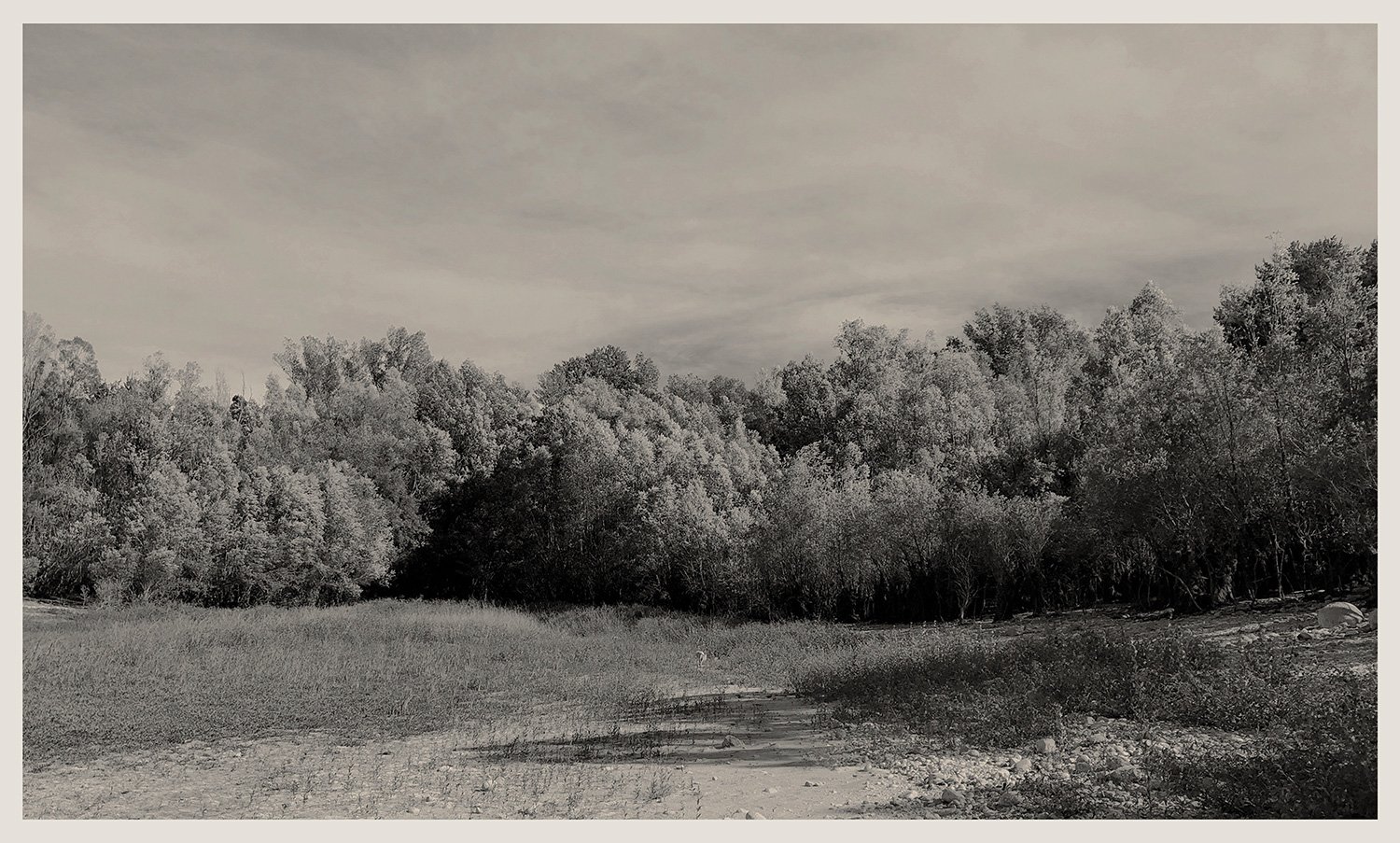
Giulietta Coates - Beyond Solitude
Image: Impasse de Fauvery #5
‘Beyond Solitude’ is the debut solo show of artist Giulietta Coates at BBA Gallery, Berlin. The exhibition brings together works from the last 4 years. At the core of the monochrome landscape photographs is her relationship to the beauty of nature: its painful otherness and the impossibility of becoming one with it. The melancholic photographs express a longing for what is unreachable and hold a certain nostalgia for things to be otherwise.
Photographs taken during walks with her dog are observations of nature’s beauty, and intimate conversations with the immediate landscape that surrounds the artist. Individual motifs such as puddles, marshy fields and tree stumps stand for larger narratives of death, beauty, nostalgia and longing, all of which are interconnected in nature. Coates turned to photography as a solution to living in a remote region of France. The constraint of photography as a smooth, surface medium sets up a longing for what it represents yet delivers nothing. The artist uses photography to overcome the gulf between herself and the total otherness of nature’s beauty. Presented on the outermost surface of wooden structures, the fragmented photographs are perceptual puzzles where corners of the natural world appear to the viewer from odd angles. The rich layers of imagery speak of our relationship to nature and connect us to a consciousness outside of our own.
Giulietta Coates (*1959, England) has been living and working in Haute Provence, France for the past 15 years. She studied printmaking at the Royal College of Art and comes from a tradition of drawing and handling materials. Coates has been part of multiple group and solo exhibitions across Europe and her works from the past 40 years - woodcuts, drawings, paintings - are in collections around the world. BBA Gallery has been representing Giulietta Coates since 2016.
Image: La Guérison #1
—//—
Deutsch
Mit »Beyond Solitude« zeigt die BBA Gallery die erste Einzelausstellung von Giulietta Coates mit Arbeiten aus den letzten vier Jahren. Die monochromen Landschaftsfotografien thematisieren die Beziehung der Künstlerin zur Schönheit der Natur, zu ihrer als schmerzhaft empfundenen Andersartigkeit sowie zur Unmöglichkeit, mit ihr eins zu werden. Die melancholischen Aufnahmen drücken sowohl die Sehnsucht nach dem Unerreichbaren aus, wie auch Melancholie, begründet in dem Wunsch nach anderen Gegebenheiten.
Die Fotografien, entstanden bei einsamen Spaziergängen mit dem Hund, verweisen auf die Schönheit der Natur und repräsentieren die Zwiegespräche der Künstlerin mit der Landschaft, die sie unmittelbar umgibt. Einzelne Motive wie Wasserlachen, sumpfige Felder und Baumstümpfe stehen für weitergefasste Narrative über Tod, Schönheit und Sehnsucht, die sich in den Naturerscheinungen verbinden. Coates begann, das Medium der Fotografie zu nutzen, als sie ihr Leben in die abgelgegenen Haut Provence in Frankreich verlegte. Fotografie wird auf der glatten Oberfläche des Papiers reproduziert, was die Sehnsucht nach dem Abgebildeten weckt, dabei jedoch nichts Greifbares erschafft. Mit der Fotografie hat die Künstlerin ein passendes Medium gefunden, um die Kluft zwischen sich und der absoluten Andersartigkeit der Schönheit der Natur zu überwinden. Die fragmentierten Aufnahmen – teilweise ergänzt durch Holzstrukturen und somit konzeptionell um materielle Aspekte erweiteret – stellen gleichsam in einer Verrätselung der Wahrnehmung die natürlichen Welt in ganz eigenen Perspektiven dar. Die dichten Bildkonstruktionen erzeugen eine Beziehung zur Andersartigkeit der natürlichen Welt und so ein erweitertes Bewusstsein, das individuelle Grenzen überwindet.
Giulietta Coates wurde 1959 in England geboren. Die Künstlerin lebt und arbeitet seit 15 Jahren in der Haute Provence, Frankreich. Sie verfogt – auch inspiriert durch ihr Studium der Druckgrafik am Royal College of Art – einen zeichnerischen, sinnlich-materiellen Ansatz. Coates hat ihre Arbeiten europaweit in zahlreichen Gruppen- und Einzelausstellungen ausgestellt. Ihre Werke der letzten vierzig Jahre – Holzschnitte, Zeichnungen und Gemälde – befinden sich in Sammlungen auf der ganzen Welt. Die BBA Gallery vertritt Giulietta Coates seit 2016.

Jens Juul - Six Degrees of Copenhagen
Jens Juul, Six Degrees of Copenhagen #5.
‘Six Degrees of Copenhagen’ is an ongoing series that winner of the 2021 BBA Photography Prize, Jens Juul, has been developing for 10 years. Part documentation, part social examination, and part artistic portraiture, the harsh and unrelenting photographs highlight the beauty of the human condition by bringing the viewer into close acquaintance with the private lives of strangers, Jens Juul’s first solo exhibition in Berlin is part of the 10th European Month of Photography. EMOP generates visibility for photographers in Berlin, the EU, and globally.
The ongoing series is inspired by the six degrees of separation theory that states people are no more than six social connections apart. Jens Juul asks the strangers he photographs to recommend a friend, thus passing the baton. ‘Six Degrees of Copenhagen’ breaks social boundaries in two significant ways: when Juul approaches a stranger to ask whether he can photograph them, and when, in the private sphere of the individual’s home, he captures a singular vulnerable moment. Jens Juul’s portraits are a beautiful reminder of our shared humanity and are encapsulated in his new book.
Jens Juul (*1963, Denmark) has garnered international attention for his fervent style of portrait photography. He has won multiple international awards including the Magnum Photography Awards, the Sony World Photography Award in the portrait category, International Photographer of the Year, and the 2021 BBA Photography Prize.
In further support, MPB, the largest global platform to buy, sell and trade used photo and video gear, is the proud main sponsor of Jens Juul's exhibition "Six Degrees of Copenhagen". A unique series in which he breaks down barriers among strangers and connects people in a sustainable and intimate way.
—//—
Deutsch
„Six Degrees of Copenhagen" –ist eine fortlaufende Serie, an der Jens Juul - ein Kopenhagener Fotograf – bereits seit über 10 Jahren arbeitet. Juul ging 2021 als Gewinner aus dem BBA-Fotopreis hervor. Seine dokumentarisch angehauchten Porträts sind ausdrucksstarke Sozialstudien aus den unterschiedlichsten Milieus, die er auf hoch ästhetische Weise einzufangen vermag. In seiner kunstvollen Schwarz-weiß-Porträtfotografie bringt Juul dem Betrachter die Verletzlichkeit seiner Protagonisten nahe. Aber auch ihren Stolz, ihre Stärke und vor allem ihre Würde. Dabei gewährt er seltene Einblicke in das Privatleben von Fremden.
Diese fortlaufende Serie ist inspiriert von der Theorie der sechs Grade der Trennung, die besagt, dass Menschen nicht mehr als sechs soziale Verbindungen voneinander entfernt sind. Jens Juul bittet die Fremden, die er fotografiert, einen Freund zu empfehlen und gibt so den Staffelstab weiter. Die Porträts von Jens Juul sind eine schöne Erinnerung an unsere gemeinsame Menschlichkeit. Dies ist Jens Juuls erste Einzelausstellung in Berlin und Teil des 10.European Month of Photography.
Jens Juul (*1963, Dänemark) hat mit seinem Stil der Porträtfotografie internationale Aufmerksamkeit erlangt und mehrere internationale Preise gewonnen, darunter die Magnum Photography Awards, den Sony World Photography Award in der Kategorie Porträt, International Photographer of the Year und den BBA Photography Prize 2021.
Darüber hinaus ist MPB, die weltweit größte Plattform für den Kauf, Verkauf und Handel mit gebrauchten Foto- und Videoausrüstungen, stolzer Hauptsponsor der Ausstellung "Six Degrees of Copenhagen" von Jens Juul. Eine einzigartige Serie, in der er Barrieren zwischen Fremden abbaut und Menschen auf eine nachhaltige und intime Weise miteinander verbindet
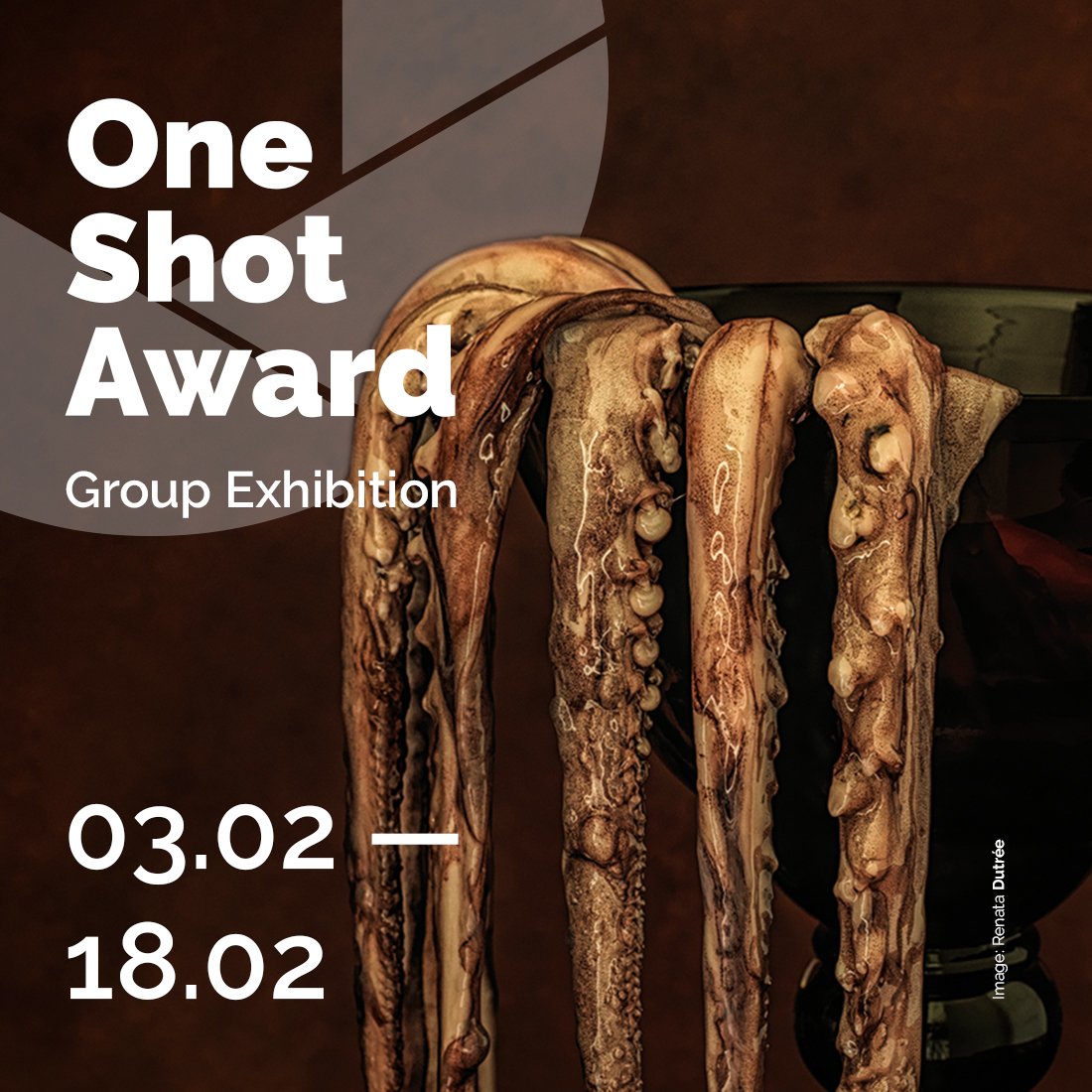
One Shot Award Exhibition
From February 3rd to 18th 2023, 60 carefully selected photographers will be showcasing their works at BBA Gallery, Berlin for the One Shot Award Exhibition. Of these 60, 10 will be physically displayed and 50 will be shown on a large digital display. The winner will receive a cash prize of €500 and online promotion to support their professional practice and endeavours.
Established to give industry accessibility to aspiring photographers and an opportunity to build their portfolio, the One Shot Award looks beyond prior photography experience. Instead, the Award places merit on a photographer’s capability to communicate a unique vision. Technical expertise matters less than the crucial values of storytelling, visual concepts, creative ideas, abstraction and artistic sensibilities. The One Shot Award showcases the photographers currently contributing a fresh perspective to contemporary photography.
All selected works will be shown at BBA Gallery, Köpenicker Straße 96, 10676, Berlin
Liz Long - Human Nature
Jason Ward - Dominic
Francesca Pili - #ABRUXAUS
Renata Dutrée - Losing Touch
Joseph P Smith - Beck Brothers
Mieke Douglas - #FAKE:DON'T ACCEPT PRETTY
Daria Martinoni - 5 - Polypropylene
Yixuan Bai - The lovers
Kristina Varaksina - Self-Portrait During the War
Jacob Talbot - 'Limin'

BBA Editions
Throughout history, art editions have been a means to utilise the power of image repetition for greater accessibility and availability. Now more than ever, it is imperative to provide the public with affordable contemporary art pieces. With this aim, this holiday season BBA presents BBA Editions, a group exhibition featuring a wide variety of artists represented by the gallery including some works from our previous Photography and Artist prize competitions.
Editions have a rich global history with engraving in Europe and 13th century traditional woodcut printmaking in Japan and Asia. In response to the rising prominence of print mass-media in the 20th Century, many artists such as the German expressionists Ludwig Kirschner and Emil Nolde re-appropriated printmaking techniques to exert agency over the distribution and value of their works. To this day, print editions continue to be a prominent medium in the art world, as a crossroads between classic technique and contemporary accessibility.
Contemporary editions have evolved from traditional printmaking to encompass a wide range of formats including photography. BBA Editions brings together all kinds of practices such as painting, sculptures, photography, digital art and more, to create a diverse assemblage of works that promote accessibility within the art world. People from all walks of life create art under a diverse human experience. It follows that the enriching opportunity to own a unique piece of art should be openly available.
Single works can often feel costly for first time buyers. Editions with lower price points bridge this gap while also retaining the authenticity of the works. Each piece belonging to an edition carries within itself traces of the artist’s peculiarity and character. We want to inspire the next generation of collectors by celebrating the creatives of tomorrow.
The editions are readily available to purchase in person at the gallery. To foster accessibility in the art market, BBA is soon launching a brand new online store through which the public can purchase works from editions. Editions provide the opportunity for a special Christmas gift for your art lover friends and family; with artworks that are both compact and affordable.
Artists
Kristoffer Axén, Rómulo Celdrán, Giulietta Coates, Mario Ermoli, Vincent van Gaalen, Rhys Himsworth, Chirag Jindal, Renata Kudlacek, Ming Lu, Tobias Molitor, Kaleef Oladele Lawal, Mark Peterman, Susanne Piotter, Vishal Shah, Martin Stranka, Heiko Tiemann, Olga Wagemans, Diana Wolzak.
Olga Wagemans - Untitled 026,
Medium: Archival Pigment Print
Kristoffer Axén - Equilibrium,
Medium: Archival Pigment Print
Chirag Jindal - The Uncanny,
Medium: Terrestrial LiDAR scan / Latex Print on Acrylic Lightpanel
Vincent van Gaalen - Absence_Australia_Hohe Tauern_Gab,
Medium: Fine Art Print on Baryta Paper
Tobias Molitor - ThankYou Bag (2),
Medium: : Silkscreen Print on Hahnemühle paper
Renata Kudlacek - Spectacular Specimen II,
Medium: Mixed Media - Fine Art Print on Paper

Artmuc fair in Munich
Artists
Renata Kudlacek
Rhys Himsworth
This year, BBA Gallery is delighted to be part of ARTMUC 2022 autumn edition - Bavaria’s largest art fair. Showcasing contemporary works, ArtMuc comprises over 250 artists working across a range of mediums from painting, sculpture, 3D pieces, photography and more.
In a diverse programme offering insight into the growing German art market, BBA will exhibit the works of Berlin-based artists Rhys Himsworth and Gallery Director Renata Kudlacek whose central themes of nature subvert a linear perception of time.
Both mixed media artists, Himsworth and Kudlacek unravel the cultural significance of nature and re-interpret the historical significance from a contemporary angle. The romantic, dream-like works of landscapes and flowers subtly reference consumerist excess and fast-moving, mass-production. Himsworth sources and repurposes disused electronic waste which provide the surface over which a self-developed UV inkjet printer prints stock photography landscapes. Re-connects materials with their original locations. Resembling late Northern European Baroque with autumnal tones, Kudlacek’s fine art prints and hand-made screen-prints depict flora and fauna on the beautiful point of decay and echo the rapid consumption of nature.

Rómulo Celdrán - Digital Tenebrism
BBA Gallery is pleased to present "Rómulo Celdrán: Digital Tenebrism", the first solo exhibition of the exceptional Spanish artist in Berlin. With his latest series of hyper-realistic paintings “Digital Tenebrism” (2020-now) Celdrán explores the Baroque tradition. The Tenebrists are known for their dramatic chiaroscuro painting. Deeply impressed by the paintings of the seventeenth century, Celdrán creates scenes inspired by Caravaggio, Ribera and Zurbarán. Instead of candlelight, however, the scenes in Celdrán's paintings are lit only by mobile devices such as smartphones or tablets, which are checked by the figures in the darkness of their domestic surroundings. Where silence pervades the unlit areas, the theatrical darkness in "Digital Tenebrism" leaves room for the viewer's own imagination. In the artist's words, "The darkness was no longer scary for me. It becomes an intimate space for meditation and reflection."
Completing the exhibition are the latest hyper-realistic sculptures from the HI-RES body of works, a series of enlarged household gloves called SOLID. Using 3D computer modelling, HI-RES explores the relationships between the art object, which takes visible reality as a reference point, and the boundaries of veracity between observable reality, art and science. By simulating a household glove, SOLID's verisimilitude erases the Platonic distinction between original and copy.
Rómulo Celdrán (*1973, Spain) is an internationally recognised artist in the fields of painting, sculpture and drawing. He had his first exhibition at the age of 16 and managed to consolidate his career as a self-taught artist, with excellent execution and attention to detail. His high level of sophistication has led to his presence at leading fairs (SCOPE, ARCO, Art Cologne) and in important collections (Beth Rudin DeWoody Collection, Artium, CA2M, Museum Art Plus, Biblioteca Nacional). Since the groundbreaking exhibition 'Realism: The Adventure of Reality' at Kunsthalle München (2010), Celdrán has continued his negotiation with truthful visual representation. Earlier this year, Forbes magazine named Celdrán as one of eight Spanish artists whose work is currently rapidly increasing in value. Celdrán came to the attention of BBA Gallery through his participation in the Artist Prize founded by the gallery.
Die BBA Gallery freut sich, mit "Rómulo Celdrán: Digital Tenebrism", die erste Einzelausstellung des spanischen Ausnahme-Künstlers in Berlin zu präsentieren. Mit seiner jüngsten Gemäldeserie “Digital Tenebrism” (2020- jetzt) setzt sich Celdrán mit der barocken Tradition auseinander. Die Tenebristen sind für ihre dramatische Hell-Dunkel-Malerei bekannt. Tief beeindruckt von den barocken Gemälden des siebzehnten Jahrhunderts, schafft Celdrán Szenen angelehnt an Caravaggio, Ribera und Zurbarán. Anstelle von Kerzenlicht werden die Szenen in Celdráns Gemälden jedoch lediglich durch mobile Geräte wie Smartphone oder Tablet beleuchtet, das von den Figuren in der Dunkelheit ihrer häuslichen Umgebung überprüft wird. Wo die Stille die unbeleuchteten Bereiche durchdringt, lässt die theatralische Dunkelheit in "Digital Tenebrism" Raum für die eigene Vorstellungskraft. Mit den Worten des Künstlers: "Die Dunkelheit war für mich nicht mehr unheimlich. Sie wird zu einem intimen Raum für Meditation und Reflexion."
Komplettiert wird die Ausstellung durch die neuesten hyper-realistischen Skulpturen der Werkgruppe HI-RES, einer Serie von vergrößerten Haushaltshandschuhen namens SOLID. Mittels 3D-Computermodellierung untersucht HI-RES die Beziehungen zwischen dem Kunstobjekt, das die sichtbare Realität als Bezugspunkt nimmt, und den Grenzen der Wahrhaftigkeit zwischen der beobachtbaren Realität, der Kunst und der Wissenschaft. Mit der cleveren Simulation eines Haushaltshandschuhs hebt die Wahrhaftigkeit von SOLID die platonische Unterscheidung zwischen Original und Kopie auf.
Rómulo Celdrán (*1973, Spanien) ist ein international anerkannter Künstler in den Bereichen Malerei, Skulptur und Zeichnung. Seine erste Ausstellung hatte er bereits im Alter von 16 Jahren und es gelang ihm, seine Karriere als Autodidakt zu konsolidieren, und zwar mit hervorragender Ausführung und Detailgenauigkeit. Sein hohes Niveau hat dazu geführt, dass er auf den führenden Messen (SCOPE, ARCO, Art Cologne) und in wichtigen Sammlungen (Beth Rudin DeWoody Collection, Artium, CA2M, Museum Art Plus, Biblioteca Nacional) vertreten ist. Seit der bahnbrechenden Ausstellung 'Realism: The Adventure of Reality" in der Kunsthalle München (2010) setzt Celdrán seine Verhandlung mit wahrheitsgetreuer visueller Darstellung fort. Das Forbes Magazin hat Celdrán zu Beginn diesen Jahres als einen von acht spanischen Künstlern benannt, deren Werk derzeit rasant an Wert gewinnt. Die BBA Gallery wurde auf Celdrán durch seine Teilnahme an dem von der Galerie gegründeten Kunstpreis aufmerksam.
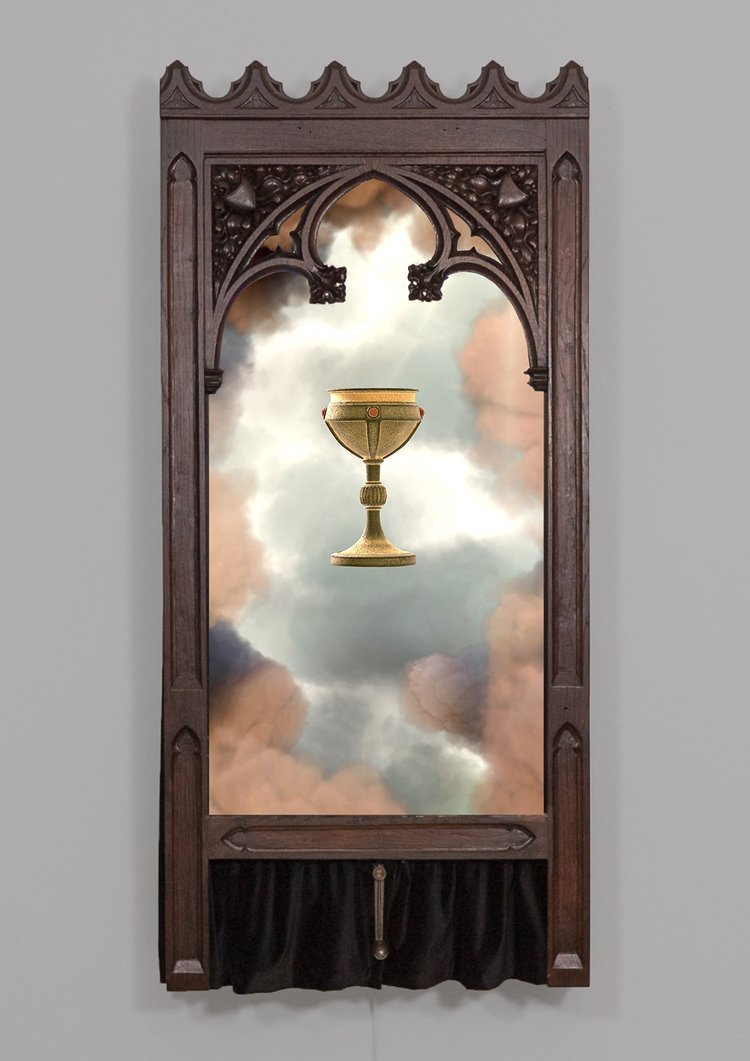
Sven Windszus - Holy Shit
It all begins with an idea. Maybe you want to launch a business. Maybe you want to turn a hobby into something more. Or maybe you have a creative project to share with the world. Whatever it is, the way you tell your story online can make all the difference.
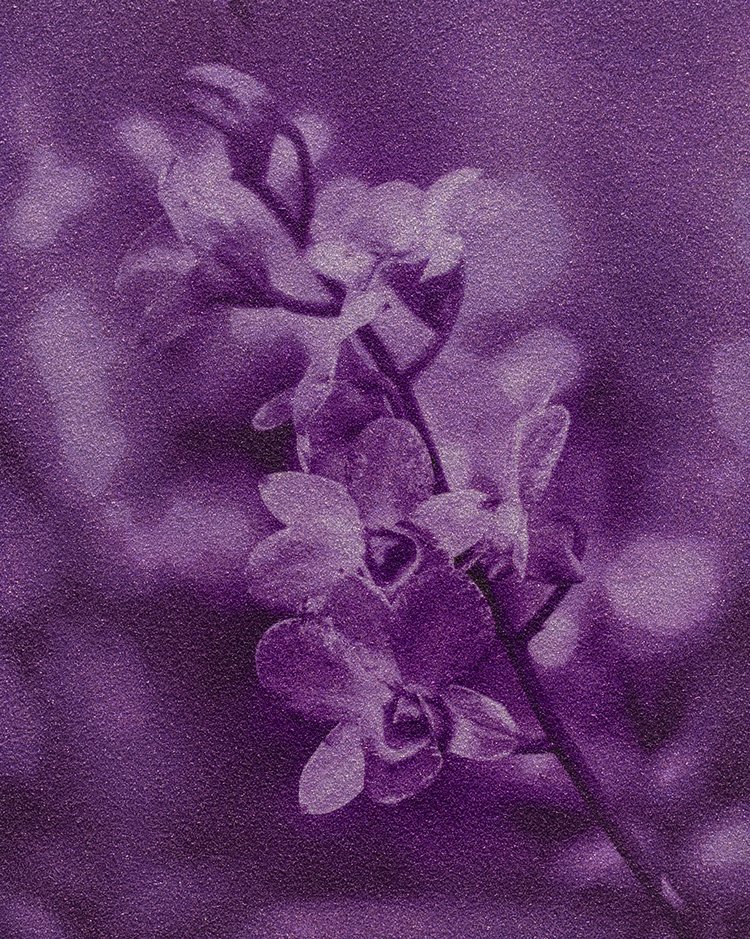
Rhys Himsworth - Hereafter
It all begins with an idea. Maybe you want to launch a business. Maybe you want to turn a hobby into something more. Or maybe you have a creative project to share with the world. Whatever it is, the way you tell your story online can make all the difference.
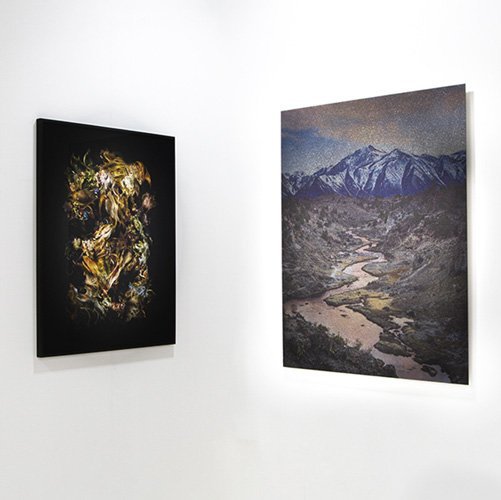
CSR Art
It all begins with an idea. Maybe you want to launch a business. Maybe you want to turn a hobby into something more. Or maybe you have a creative project to share with the world. Whatever it is, the way you tell your story online can make all the difference.

Olivia Lennon - Outer Spaces
Outer Spaces at BBA Gallery is an overview of Olivia Lennon’s exploration into the cosmos. The exhibition is compiled of varied watercolour paintings, labour-intensively painted by hand with fine sable brushes, specialist interference watercolours with an exactitude that resembles digital printing. These artworks are informed by intensive research, inspired by the artist’s natural curiosity with historical ideas and philosophical concepts, which she then translates into meticulous opalescent illustrations. Whether navigating interstellar spaces, mapping the crossing of geographical borders or visualising the invisible flow of microscopic miasmas, Lennon’s work establishes new perspectives of space on a macro- as well as on a microscopic level.
Border stone
By geographical accident, the majority of the marble quarried in Europe comes from those same areas along the E.U’s Mediterranean border (the most deadly border in the world) where unknown numbers of people have attempted to flee war, famine and persecution in Africa and the Middle East. This series of watercolour paintings critiques contemporary European external border practices through the combination of work titles and visual signifiers of obstruction, identity, fascist aesthetics and surveillance. ‘Borderstone’ depicts barricades of marble - the literal ‘stuff-of-this-place’- constructed in order to obstruct the entry of those who are seen as ‘not-of-this-place’.
Since Greco-Roman times marble sculpture has been a signifier of European cultural history and identity, and in antiquity the marble was mined from quarries by slave labourers to build palaces and the statues of empires. In the enlightenment period antique statues became increasingly associated with ideas of race science, not least because the varied skin tone pigments on ancient marble figurative sculptures had worn away.
This later culminated in the 20th C. fascist regimes’ architectural and artistic expressions of racial purity and supremacy in the form white toned marble figures. The fact that some refugee camps are situated in marble quarries, where the mourning-work of hewing gravestones takes place, deepens this relationship further. In using the language of marble, ‘Borderstone' loosely references these ideas as being the ideological kernel behind the increasingly inhumane treatment of mostly brown asylum seekers long Europes southern border. The title of each work raises questions around perceptions of the ‘other’, opaque bureaucratic structures, the right to citizenship, militarised borders, the nature of memorialisation, and the E.U.’s intention to construct a completely impervious border.
Night Air
Stemming from research into our former understanding of airborne disease, ‘Night Air’ presents an imagined topography of dangerous air. The title is borrowed from the outmoded belief that air at night releases deadly miasmas causing cholera, typhoid, malaria, influenza and pneumonic plague.
The base image for each work is printed using the Japanese suminagashi technique. Ink and oxgall are floated on the surface of water, and gently blown, from which the print on paper is pulled. Curlicues of ink are painted over in colour shifting watercolours, and mirrored vertically to create symmetrical designs reminiscent of both body parts and tendrils of poisonous air polluting a space.
The works are displayed in frames modified to resemble fresh lead solder. Two of the paintings, ‘Gnasher’ and ‘Poison Eater’ have necklaces of upper or lower teeth hung from the bottom edge of frames. The inferred mandible hangs loose, the mouth is open, allowing pneumas and miasmas to permeate the boundary between the interior of the breather and the exterior, and back again. ‘Night Air’ makes the invisible threat visible - we are in danger, and ourselves, dangerous.
Outer Spaces in der BBA Gallery ist ein Überblick über Olivia Lennons Erkundung des Kosmos. Die Ausstellung zeigt verschiedene Aquarelle, die in mühevoller Handarbeit mit feinen Zobelpinseln gemalt wurden, mit einer Genauigkeit, die an Digitaldruck erinnert. Diese Kunstwerke beruhen auf intensiven Recherchen, inspiriert vom Interesse der Künstlerin an historischen Ideen und philosophischen Konzepten, die sie in akribische, schimmernde Illustrationen umsetzt. Ob sie durch interstellare Räume navigiert, das Überschreiten geografischer Grenzen kartografiert oder den unsichtbaren Fluss mikroskopischer Miasmen visualisiert, Lennons Arbeiten eröffnen neue Perspektiven auf den Raum, sowohl auf makro- als auch auf mikroskopischer Ebene.
Die Ausstellung vereint Arbeiten aus den folgenden Serien:
Cosmodrome
“Cosmodrome" bietet ein dynamisches Modell für die Epistemologie des Kosmos. Diese Vinyl- und Aquarellbilder werden sorgfältig von Hand mit feinen Zobelpinseln gemalt, manchmal mit nur einem oder zwei Haaren. Die meisten der von Lennon verwendeten Aquarelle sind aus Interferenzpigmenten hergestellt. Diese Pigmente enthalten keine Farbe im üblichen Sinne, da es sich um Körner des lichtdurchlässigen Minerals Mica handelt, die dünn mit unterschiedlich dickem Titanweiß galvanisiert sind. Die Dicke des Titans bestimmt den Brechungswinkel des Lichts über der Farbe, wodurch die optische Täuschung der Farbe entsteht.
Dieses Verfahren, Farbe mit Licht zu malen, verweist auf eine Aussage von John Ruskin aus dem Jahr 1884: "Licht ist ebenso sehr die Ordnung der Intelligenz wie die Ordnung des Sehens". Dieser Gedanke prägt einen Großteil von Lennons Untersuchungen über die historische und zeitgenössische "Ordnung" des Wissens über das Universum. Jedes von Lennons Gemälden zeigt eine andere Facette der Beobachtung oder Spekulation über die Funktionsweise von Zeit, Telemetrie, Raum und Materie. Lennons Arbeit ist geprägt von den philosophischen Argumenten von Heraklit und Parmenides, den kosmologischen Schriften von Italo Calvino, der Telemetrie von Satelliten und den widersprüchlichen Theorien der Teilchenphysik.
Die Analyse dessen, was wir über das Universum sehen oder denken, verrät viel über die menschliche Psychologie: im Wesentlichen, ob wir glauben, dass das Universum von Natur aus geordnet oder chaotisch ist. Häufig werden geordnete Ansichten über den Kosmos im Laufe der Geschichte aufgebaut und dann durch unintuitive Theorien und neue Entdeckungen wieder aufgelöst. Das geozentrische Sonnensystem wird durch das heliozentrische ersetzt. Die Newtonsche Physik wird durch die allgemeine Relativitätstheorie und dann durch die Quantenphysik ersetzt. Allumfassende Wissensmodelle werden in diesem Paradigma durch konkurrierende chaotische Details dekonstruiert, die dann wiederum neue geordnete Prinzipien begründen.
Zero
Eine Kleinsche Flasche ist eine theoretische 4-dimensionale kontinuierliche Oberfläche, die sowohl ein Inneres als auch ein Äußeres darstellt, aber keine Grenze zwischen den beiden hat. Im weiteren Sinne hat sie kein Volumen, enthält aber auch das gesamte Universum - sie ist nichts und alles zugleich. Lennon hat Raster gemalt, die über Diagramme von Kleinschen Flaschen projiziert wurden, als Analogie für die Versuche der Künstler, diese unmögliche Form zu quantifizieren und zu verstehen.
Jedes Werk hat eine irrationale Gleichung als Titel. Die Titel enthalten sowohl das Wort "Null" als auch den Namen des vorsokratischen Philosophen "Zeno", der vor allem für seine Schriften über Paradoxien und irrationale Zahlen bekannt ist.
Im Profil ähnelt die Kleinsche Flasche einer Lemniskate ( ∞ ) und von unten einer Null. 0 und ∞ stehen sowohl für die teilbaren als auch für die akkumulativen Aspekte der Unendlichkeit. Diese beiden Zahlen und die Kleinsche Flasche verhalten sich wie die Ouroboros-Schlange, die sich ständig selbst auffrisst. 0 und ∞ sind weder multiplizierbar noch teilbar (z. B. 0 x 1 = 0 oder ∞ / 2 = ∞) wie andere Zahlen, und sie sind so selbstreferentiell und unendlich regressiv, dass man sie als Grenze der Wahrnehmung betrachten könnte.
Atlas
Der Kartograph Gerardus Mercator aus dem 16. Jahrhundert verwendete das Wort "Atlas" erstmals in der geographischen Disziplin, um eine These über die Entstehung, Geschichte und Beschreibung des gesamten Universums zu bezeichnen. “Atlas" zeigt zwei Gemälde, die verzerrte elliptische Projektionen des kosmischen Mikrowellenhintergrunds in der Mercator-Projektion darstellen. Diese Bilder gehen von der topografischen Unmöglichkeit aus, eine Karte zu entwerfen, die die Gesamtheit einer Vielfalt umfasst; sei es die flach gemachte Erdkugel oder die Aufzeichnung von Zeit und Entfernung, die in der CMB-Karte des Urknalls beschrieben wird. Die Darstellung des Urknalls in der gleichen Mercator-Projektion, in der auch die Erde oft abgebildet ist, regt den Betrachter dazu an, zwischen der Geschichte der Navigation auf der Erde und der Möglichkeit menschlicher Unternehmungen bis an den Rand des Universums zu gleiten. Werden wir die interstellare Erkundung auf die gleiche Weise angehen wie die interkontinentale? Der mythologische Atlas trug die Erde auf seinen Schultern, und wenn wir in den Weltraum vordringen, verlagert sich das Gewicht des Universums auf unsere Schultern.
Borderstone
Der geografische Zufall will es, dass der Großteil des in Europa abgebauten Marmors aus denselben Gebieten entlang der EU-Mittelmeergrenze stammt (der tödlichsten Grenze der Welt), an der eine unbekannte Zahl von Menschen versucht hat, vor Krieg, Hunger und Verfolgung in Afrika und im Nahen Osten zu fliehen. Diese Serie von Aquarellbildern kritisiert die zeitgenössischen Praktiken an den europäischen Außengrenzen durch die Kombination von Werktiteln und visuellen Signifikanten von Blockade, Identität, faschistischer Ästhetik und Überwachung. “Borderstone" zeigt Barrikaden aus Marmor - dem buchstäblichen "Zeug von diesem Ort" -, die errichtet wurden, um denjenigen den Zugang zu versperren, die als "nicht von diesem Ort" angesehen werden.
Seit der griechisch-römischen Zeit ist die Marmorskulptur ein Zeichen für die europäische Kulturgeschichte und Identität, und in der Antike wurde der Marmor von Sklavenarbeitern in Steinbrüchen abgebaut, um Paläste und Statuen für Reiche zu errichten. Im Zeitalter der Aufklärung wurden antike Statuen zunehmend mit Ideen der Rassenkunde in Verbindung gebracht, nicht zuletzt, weil sich die verschiedenen Hautfarbenpigmente auf den antiken figurativen Marmorskulpturen abgenutzt hatten.
Dies kulminierte später in den architektonischen und künstlerischen Äußerungen der faschistischen Regime des 20. Jahrhunderts über rassische Reinheit und Vorherrschaft in Form von weiß getönten Marmorfiguren. Die Tatsache, dass sich einige Flüchtlingslager in Marmorsteinbrüchen befinden, in denen die Trauerarbeit, das Hauen von Grabsteinen, stattfindet, vertieft diese Beziehung noch. Durch die Verwendung der Sprache des Marmors verweist "Borderstone" lose auf diese Ideen als ideologischen Kern hinter der zunehmend unmenschlichen Behandlung der meist Asylbewerber an der Südgrenze Europas. Der Titel jeder Arbeit wirft Fragen zur Wahrnehmung des "Anderen", zu undurchsichtigen bürokratischen Strukturen, zum Recht auf Staatsbürgerschaft, zu militarisierten Grenzen, zum Wesen des Gedenkens und zur Absicht der EU, eine völlig undurchlässige Grenze zu errichten, auf.
Night Air
Ausgehend von der Erforschung unseres früheren Verständnisses von durch die Luft übertragenen Krankheiten stellt "Night Air" eine imaginäre Topografie der gefährlichen Luft dar. Der Titel ist dem überholten Glauben entlehnt, dass die Luft in der Nacht tödliche Miasmen freisetzt, die Cholera, Typhus, Malaria, Grippe und Lungenpest verursachen.
Das Grundbild für jedes Werk wird in der japanischen Suminagashi-Technik gedruckt. Tinte und Oxygall werden auf der Wasseroberfläche schwimmend aufgetragen und sanft geblasen, von wo aus der Druck auf Papier gezogen wird. Die Tuschewellen werden mit farblich wechselnden Aquarellfarben übermalt und vertikal gespiegelt, so dass symmetrische Muster entstehen, die sowohl an Körperteile als auch an Ranken giftiger Luft erinnern, die einen Raum verschmutzen.
Die Werke sind in Rahmen ausgestellt, die so modifiziert sind, dass sie frischem Bleilot ähneln. Zwei der Gemälde, "Gnasher" und "Poison Eater", haben Halsketten aus oberen oder unteren Zähnen, die am unteren Rand der Rahmen hängen. Der angedeutete Unterkiefer hängt lose herunter, der Mund ist offen, so dass Lungen und Miasmen die Grenze zwischen dem Inneren des Atmenden und dem Äußeren und wieder zurück durchdringen können. “Night Air" macht die unsichtbare Bedrohung sichtbar - wir sind in Gefahr, und wir selbst sind gefährlich.

BBA Photography Prize Remix
The photographers shortlisted for the BBA Photography Prize 2021 convinced the public with the talent, creativity and diversity reflected by their artworks. From socio-critical landscape photographies merging urban habitats and landscapes by the German photographer Andreas Kremer, over conceptual photography questioning domestic violence by French photographer and architect Camille Gharbi, to Russian-born Photographer Kristina Varaksina, whose strongly symbolic work is an exploration of the psyche of women. One artist particularly impressed the jury & the viewers due to his work’s simultaneous harshness and vulnerability: Danish photographer Jens Juul won the 1st prize with his black and white photo series „Six degrees of Copenhagen“.
Now in its 4th consecutive year, the BBA Photography Prize honours talented photographers. Together with an international jury, BBA Gallery has selected 24 photographers for the shortlist, whose works were shown in a joint exhibition in the Kühlhaus Berlin from November 26 - December 12 2021.
Due to the enormous success and positive feedback we have received for this exhibition, we have decided to now showcase an essential selection of works again at our gallery.
Included are works by the following photographers:
1st prize: Jens Juul, Denmark
2nd prize: Camille Gharbi, France / Dirk Hardy, Netherlands
3rd prize: Kristina Varaksina, United Kingdom
People's Choice Award: Richard Tuschman, United States
Andreas Kremer, Germany
Andreas Rost, Germany
Astrid Reischwitz, United States/Germany
Bella von Einsiedel, Germany
Catherine Panebianco, United States
Diana Cheren Nygren, United States
Frank Herfort, Russia/Germany
Gregg Segal, United States
Hugh Kretschmer, United States
Julia SH, United States
Mieke Douglas, United Kingdom
Nicky Hamilton, United Kingdom
Offer Goldfarb, Israel
Renata Dutrée, The Netherlands
Viktoria Sorochinski, Canada/Germany
Works by the following photographers are currently on show at the lobby of the Aletto Hotel Potsdamer Platz, where they can be visited daily.
Click here for more information.
Julia Fullerton Batten, United Kingdom
Kristina Varaksina, United Kingdom
Chloe Meynier, United States
Kriss Munsya, Canada
Serena Dzenis, Iceland
Miloš Nejezchleb, Czech Republic

Susanne Piotter - Currently under construction
The unfinished and the occasional madness of architectural language find a home in Susanne Piotter’s sculptures and prints. The Berlin artist, with a background in graphic and media design and a degree in stage design from the Maastricht Art Academy, creates exciting objects and imagery steeped in references to architecture.
Her small-format concrete sculptures from the “Artefacts” series consist of individually cast parts, mostly two or three elements, which the artist combines together following the principle of trial and error. Piotter designs her objects by making molds from different materials. She pours these negative forms with the material concrete, and the result is then the positive form. She then discovers spatial solutions by trying out possible combinations of positive forms. She is guided by her fascination for brutalist buildings and the unfinished. By combining solid parts and filigree transitions, she sometimes creates an impression of flawedness in her objects, which resemble building site ruins; they were never finished and now they are. Many of the sculptures can be set up in at least two different ways, providing multiple perspectives on the object, made possible by the object itself. The partial colour design of the sculptures plays with the visible and the invisible, and illustrates the multi-dimensionality of the work.
“Repetitive Structures” - the three-dimensional wall pieces in the series are also made from concrete. In the designs, Piotter combines such diverse influences as the infinite patterns of Islamic ornamentation, textile designs from the Bauhaus, or the systematics of urban forms such as motorway junctions or urban pathways. The works show an interplay of different disciplines, a multidisciplinary creativity in which everything is related to everything. The soft design language is combined with the hard material, design and textile art of architecture; the ephemeral with the permanent.
The prints in the “Lines & Planes” series show rhythmically structured lines and surfaces that are reminiscent of structured facades. The screen prints on velour paper exert a haptic stimulus, which reinforces the impression of surface quality and structured facades. The exhibition shows works that have all emerged from a playful and yet thoroughly methodical approach to finding forms.
Das Unfertige sowie der bisweilen auftretende Wahnwitz der Architektursprache finden ein Zuhause in Susanne Piotters Skulpturen und Druckgrafiken. Die Berliner Künstlerin mit Ausbildungshintergrund Grafik-, Mediendesign und einem Bühnenbildstudium an der Kunstakademie Maastricht/NL kreiert spannungsvolle Objekte und Bildwelten mit Architekturbezug.
Ihre kleinformatigen Betonskulpturen der Serie “Artefakte” bestehen aus gegossenen Einzelteilen, meist 2 oder 3 Elementen, die von der Künstlerin dem Prinzip von Versuch und Irrtum folgend zusammengesetzt werden. Ihre Objekte entwirft Piotter, indem sie Gussformen aus unterschiedlichen Materialien herstellt. Diese Negativformen giesst sie mit dem Material Beton aus, das Ergebnis stellt dann die Positivform dar. Räumliche Lösungen findet Piotter durch Ausprobieren von Kombinationsmöglichkeiten einzelner Positive. Leiten lässt sie sich dabei von ihrer Faszination für brutalistische Gebäude und für das Unfertige. Die Kombination von massiven Teilen und filigranen Übergängen erzeugt in ihren Objekten bisweilen einen Eindruck der Fehlerhaftigkeit. Ihre Objekte ähneln Bauruinen – sie waren nie fertig und sind es nun doch. Viele der Skulpturen kann man auf mindestens 2 verschiedene Weisen aufstellen. Unterschiedliche Sichtweisen auf das Objekt werden so von diesem selbst ermöglicht. Die partielle Farbgestaltung der Skulpturen durch die Künstlerin spielt mit dem Sicht- und dem Unsichtbaren und verdeutlicht die Mehrdimensionalität der Arbeiten.
Ebenfalls aus dem Werkstoff Beton bestehen die dreidimensionalen Wandarbeiten der Serie “Repetitive Strukturen”. In den Entwürfen verknüpft Piotter so unterschiedliche Einflüsse wie die unendlichen Muster der islamischen Ornamentik, textile Entwürfe des Bauhaus’ oder die Systematik von städtebaulichen Formen wie Autobahnkreuzen oder urbanen Wegeführungen. Die Arbeiten stehen für eine multidisziplinäre Kreativität, in der alles mit allem zusammenhängt. Die weiche Formensprache vereint sich mit dem harten Material, Grafikdesign mit Architektur, das Vergängliche mit dem Beständigen.
Die Druckgrafiken der Serie “Lines & Planes” zeigen rhythmisch strukturierte Linien und Flächen, die an gegliederte Fassaden erinnern. Die Siebdrucke auf Velourspapier üben einen haptischen Reiz aus, welcher den Eindruck der Oberflächenhaftigkeit und strukturierten Fassaden noch verstärkt.
Die Ausstellung zeigt Arbeiten, die allesamt aus einem spielerischen, sich langsam herantastenden und dennoch durchaus methodischen Ansatz der Formenfindung heraus entstanden sind.

Renata Kudlacek - Quest to Bloom
Curated by Giulietta Coates
This is the first solo show of Renata Kudlacek at the BBA Gallery. Born in the Czech Republic, Kudlacek comes from a Catholic family with roots in the old Eastern Europe. The different cultural histories of East and West, as well as the confrontation between faith and reason, informs all of her work. Her exquisite fine art prints and hand-made screen-prints combine the artist’s own photographs and drawings, made to simulate old engravings or paintings of flora and fauna, with original historical scientific drawings. The work explores the age-old story of our expulsion from the Garden of Eden in light of the scientific knowledge through which we now understand life, death and dreams of immortality.
Glossy dark flowers, butterflies with their ghosts and shadows, snakes, and ambiguous natural forms tumble across the paper, crowd the picture plane, or spill over frames which are unable to contain them. The forms are flamboyant and excessive, yet the petals are aged and curling and the colours autumnal. What is abundant and alive is on the point of decay.
Rendered in a late Northern European Baroque style, these prints are profoundly contemporary. Historical dilemmas are joined to current ones through form and content. The circular Renaissance Tondo, symbolizing birth, life and eternity, evokes the petrie dish or the view through a microscope. The notorious Tulipmania of 17th century Holland has sinister echoes in our own time of consumerist excess and pending collapse. The work hints that the promise of the Garden of Eden, like the promise of consumerism, is an illusion.
There is something manic in the way the artist gathers together her flowers and butterflies and spills them out before us, an abundance of life on the brink of death, forewarning, perhaps, of the ecological disasters we face. Melancholy and loss permeates these powerful images. They are full of tenderness too, and the longing for wholeness and the ideal which lies at the heart of the myth of Eden. Ultimately, this body of work is a celebration of beauty and wonder.
Renata’s work has been exhibited widely across Europe whilst actively working for various art and education initiatives including project management and curation. She is co- founder & director of the BBA Gallery and holds a Master of Art in Fine Art / Printmaking from the Royal College of Art London.
Curator - Giulietta Coates
Text - Karen Raney
Dies ist die erste Einzelausstellung von Renata Kudlacek in der BBA Gallery. Kudlacek wurde in Tschechien geboren und stammt aus einer katholischen Familie mit Wurzeln im alten Osteuropa. Die unterschiedlichen Kulturgeschichten von Ost und West sowie die Konfrontation von Glaube und Vernunft fließen in alle ihre Arbeiten ein. Ihre exquisiten Fine-Art-Prints und handgefertigten Siebdrucke kombinieren die eigenen Fotografien und Zeichnungen der Künstlerin, die alten Stichen oder Gemälden von Flora und Fauna nachempfunden sind, mit originalen historischen wissenschaftlichen Zeichnungen. Die Arbeiten untersuchen die uralte Geschichte unserer Vertreibung aus dem Garten Eden im Lichte der wissenschaftlichen Erkenntnisse, durch die wir heute Leben, Tod und Träume von Unsterblichkeit verstehen.
Glänzende dunkle Blumen, Schmetterlinge mit ihren Geistern und Schatten, Schlangen und mehrdeutige Naturformen bevölkern das Papier, drängen sich in die Bildfläche oder ergießen sich über Rahmen, die sie nicht fassen können. Die Formen sind extravagant und exzessiv, doch die Blütenblätter sind gealtert und gewellt und die Farben herbstlich. Was im Überfluss vorhanden und lebendig ist, steht kurz vor dem Verfall.
Diese Drucke im spät-nordeuropäischen Barockstil sind zutiefst zeitgenössisch. Historische Dilemmas verbinden sich formal und inhaltlich mit aktuellen. Das runde Renaissance-Tondo, das Geburt, Leben und Ewigkeit symbolisiert, erinnert an die Petrischale oder den Blick durch ein Mikroskop. Die berüchtigte Tulpenmanie des Hollands des 17. Jahrhunderts hat in unserer Zeit des konsumistischen Exzesses und des bevorstehenden Zusammenbruchs ein unheimliches Echo. Die Arbeit deutet an, dass das Versprechen des Garten Eden ebenso wie das Versprechen des Konsums eine Illusion ist.
Die Art und Weise, wie die Künstlerin ihre Blumen und Schmetterlinge sammelt und vor uns ausschüttet, hat etwas Manisches, eine Fülle von Leben am Rande des Todes, vielleicht eine Vorahnung der ökologischen Katastrophen, denen wir gegenüberstehen. Melancholie und Verlust durchdringen diese kraftvollen Bilder. Sie sind auch voller Zärtlichkeit und der Sehnsucht nach Ganzheit und Ideal, die dem Mythos von Eden zugrunde liegt. Letztendlich ist dieses Werk eine Feier der Schönheit und des Wunders.
Kuratorin - Giulietta Coates
Text - Karen Raney
‘Spectacular Specimen’ 2021, fine art print on paper, 95X122cm. Edition 5
Watch Renata make one of her handmade Screenprints - from start to finish
In Partnership with
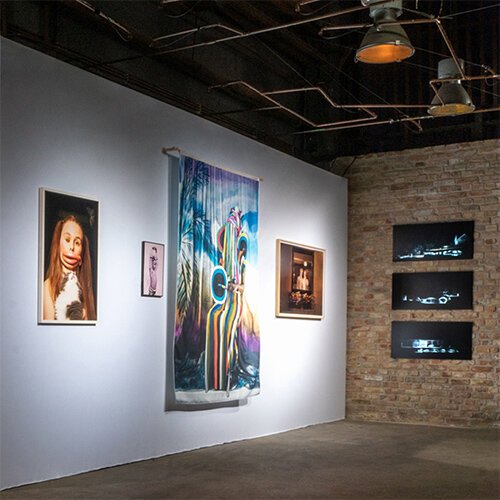
BBA Photography Prize at Berlin Photo Week 2021
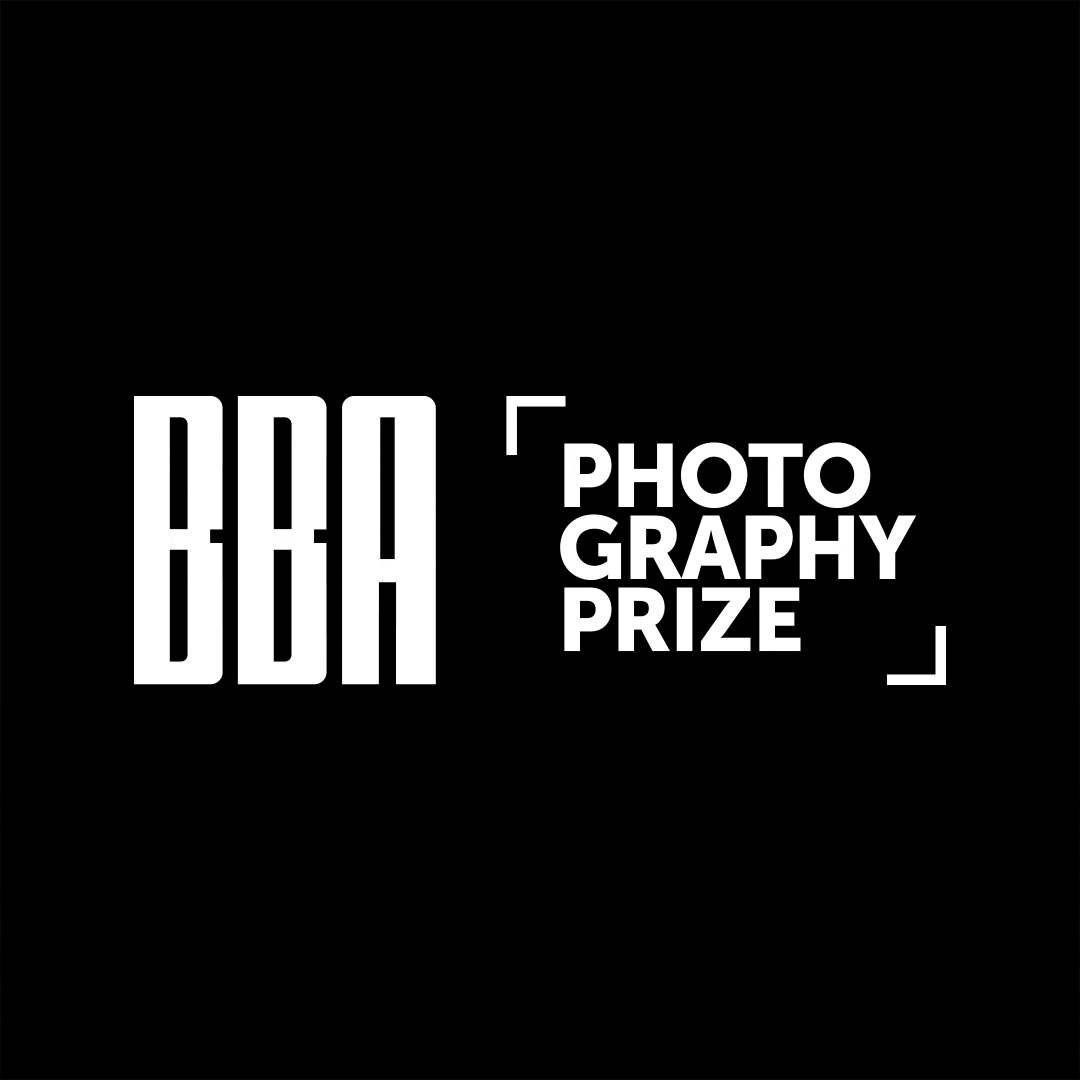
Location
RAW Area, Berlin. Revaler Strasse 99, 10245 Berlin
BBA Photography Prize has been warmly invited to Berlin Photo Week this year to exhibit a selection of the most exciting and surprising photographers from our on-going international open call for BBA Photography Prize 2021. Berlin Photo Week unites some of the biggest globally-recognised industry professionals and heavyweights as well as passionate enthusiasts in an inventive new format at the RAW Area, Berlin. Partners and sponsors of the event include Leica, Sony, WhiteWall, Eyeem, Panasonic, Nikon and Calumet, to name a few.
It goes without saying that we are absolutely head over heels to showcase our photographers and their extraordinary work from this year's on-going submissions. Together with previous years winners and shortlists. Their photographs will be displayed both digitally as well as physically in a specially dedicated prominent space on the festival grounds.
Don’t worry, there’s still time to share your work! The BBA Photography Prize 2021 remains open for entries. Our prize offers numerous opportunities, including a solo show, cash prizes and the featured exposure of our annual photography exhibition at the iconic Kühlhaus Berlin in November 2021.
Scroll down to get a first-hand look at who will be exhibiting with us at Berlin Photo Week 2021 — the event the entire city has been waiting for.
A selection of our previous winners
Our thirst for a wide variety of subjects is reflected in our selection of previous winners:
Chirag Jindal (New Zealand, Winner of BBA Photography Prize 2019) creates otherworldly-looking images through the use of photographic documentation. His photography is concerned with environments which are experiencing rapid marginalisation, desecration and destruction due to urbanisation
Gloria Oyarzabel (Spain, Winner of BBA Photography Prize 2020) is interested in the discourse around (de)colonisation. Her photography explores the intersectional effect of imperialism on African Feminisms
Sage Szkabarnicki-Stuart (Canada, Shortlist BBA Photography Prize 2019) is a self-taught photographer who examines the effects of transforming the ordinary into the absurd while simultaneously making reference to editorial photography
Julia Fullerton-Batten (United Kingdom, People Choice Award Winner 2020) indulges her work in the dramatic and the surreal. A skilled storyteller, her photography produces a hyper-real, cinematic effect which always leaves the spectator wanting to know more
Sarah Choo Jing (Singapore, Shortlist BBA Artist Prize 2021) is an interdisciplinary artist whose series Accelerated Intimacy plays with the tension between privacy and the inherently voyeuristic nature of photography
60 new photographic discoveries
We are pleased to offer our early deadline applicants from our on-going open call an entry into this much-coveted world by exhibiting their work at one of the most highly awaited photographic events of the year. As the BBA Photography Prize continues to grow, we are excited to announce that we will be joined at Berlin Photo Week by more than sixty photographers whose works will be exhibited digitally at the centre of the festival area. The participants, selected on the grounds of visual excellence, storytelling, conceptual thinking, technical craftsmanship and creativity — all the while subverting categories and genres on their way — all embody qualities that we highly value. With a diverse range of works, everyone’s sure to find their favourite.

Chirag Jindal - Ngā Mahi Rarowhenua / Into The Underworld
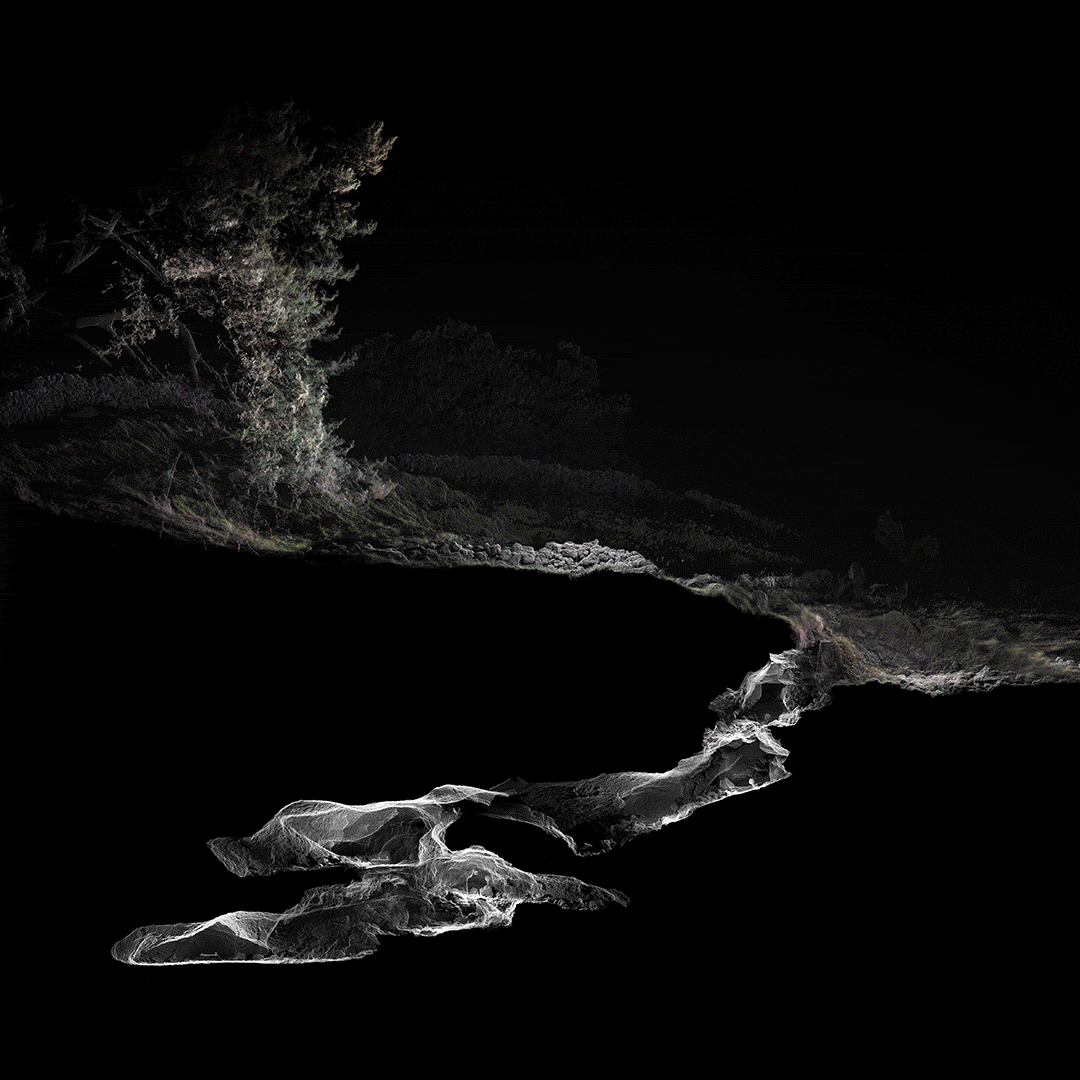
‘Ngā Mahi Rarowhenua / Into the Underworld’ sees the New Zealand artist Chirag Jindal creating otherworldly-looking images through the use of photographic documentation. The works, shaped by a highly aesthetic and original visual language, manage to embrace the surreal while simultaneously provoking nostalgia through the use of apparition. His images invite the spectator to dive deeper into the story. As a result, there is something cinematic about entering the visual fidelity of Jindal’s subject — the underworld.
Jindal’s interest in the urban environment can be traced back to his MA Degree in Architecture which he received in 2016. He has been represented by BBA Gallery ever since 2019 when he won the BBA Photography Prize. ‘Ngā Mahi Rarowhenua / Into the Underworld’ will mark his first solo show at both BBA Gallery and in Europe.
His ongoing 2018 debut series, which shares its title with the exhibition, unites creative photography with one of the most innovative technologies in the field. The idea of mergence is central to Jindal’s work which witnesses the blending of two different worlds. The artist is adamant that his images are concerned with the simultaneous co-existence of these differing worlds, even if the relationship is conflictual. The notion of co-existence is reflected in the bilingual exhibition title where neither the Māori nor the English counterpart serve as subtitles but stand on their own, on equal ground.
Of course, topographically, this is not the case. Jindal’s photography explores the underground lava caves of Auckland which are experiencing rapid marginalisation, desecration and destruction due to a century of overhead urbanisation. The series has therefore an inherently environmental as well as a social undertone as these caves are considered wāhi tapu (sacred) by mana whenua (local Māori groups) whom Jindal collaborates closely with. Due to their concealed nature, these caves have been reduced to a fictionalised, rumoured urban myth with most people unaware of the unique heritage of the volcanic region. Although more than fifty of these caves have been recorded, few are expected to remain at the end of the century, mainly due to the onslaught of developers.
This ephemeral, haunting emotion is felt in Jindal’s work via its dark, translucent environment. Despite this, it is always the underground cave which emanates the brightest in his images. The series largely consists of prints but it is Jindal’s use of the light box medium which truly enables his work to shine. The subdued, almost hypnotic glow of the caves reaches beyond the picture space, drawing the viewer into its hidden world. The exhibition also provides a behind the scenes look which shows the process behind Jindal’s underground effort to record these endangered environments. It is all too often that these sacred sites are thought of in historical terms. Jindal’s concurrent landscape cements these heritage sites in the present, championing the minimisation of future damage. It is the artist’s hope that the documentation of these disappearing sites will act as a first step towards a shift in urban policy, one that is directed towards recognition and preservation instead of destruction.
To prevent these subterranean sites from falling into oblivion, Jindal employs the empirical help of terrestrial LiDAR — an emerging form of lens-based imaging that is often applied in areas such as archaeology and criminology. Taking light as its medium, the instrument indexes the surrounding environment as millions of precisely-measured points, translating it into a digital replica.
BBA Gallery, in collaboration with Jindal, is excited to announce an artist-led workshop where people with a sincere interest in this new photographic form can explore the opportunities this medium — that is still at its experimental stage within creative photography — has to offer. The workshop will take place during Berlin Photo Week where a selection of Jindal’s images will also be exhibited.
Awards and Prizes
Winner, Under 30s Award, Royal Photographic Society, London UK 2020
Winner, RT Nelson Emerging Artist Award, Wellington NZ 2019
Winner, NZ Art Fair People’s Choice Award, Wellington NZ 2019
Winner, Interphoto Grand Prix, Bialystok Poland 2019
Winner, BBA Photography Prize, Berlin Germany 2019
Winner, LAB 13 Art Prize, Rome, Italy 2019
Winner, Schauerman Digital Art Prize, London, United Kingdom 2019
Winner, Tall Poppy Prize, Central Otago Arts Gold, Otago New Zealand 2019
Finalist, Majaoja Prize, Tampere, Finland (winner TBC Sep 5 2020)
Finalist, Bird in Flight Prize, Kyiv Ukraine 2019
Finalist, Aesthetica Art Prize, London, United Kingdom 2019
Finalist, Meitar Award, Tel Aviv, Israel 2019
Finalist, Arte Laguna Prize, Venice, Italy 2019
Finalist, Lumen Art Prize, London United Kingdom 2018
About the artist
NZ-based artist Chirag Jindal works at the intersection of documentary journalism, new media and contemporary cartography. After graduating with his MA in Architecture, Jindal founded a 3D surveying practice to document urban landscapes, collaborating closely with scientists, architects, indigenous groups and local governments. His work has been widely exhibited at international festivals and recognised by leading photography institutions, including the Interphoto Grand Prix in Poland, the Backlight Photo Triennale in Finland and the BBA Photography Prize in Berlin. In 2020, Jindal was awarded the Under 30s Gold Award by the Royal Photographic Society in London.
























































